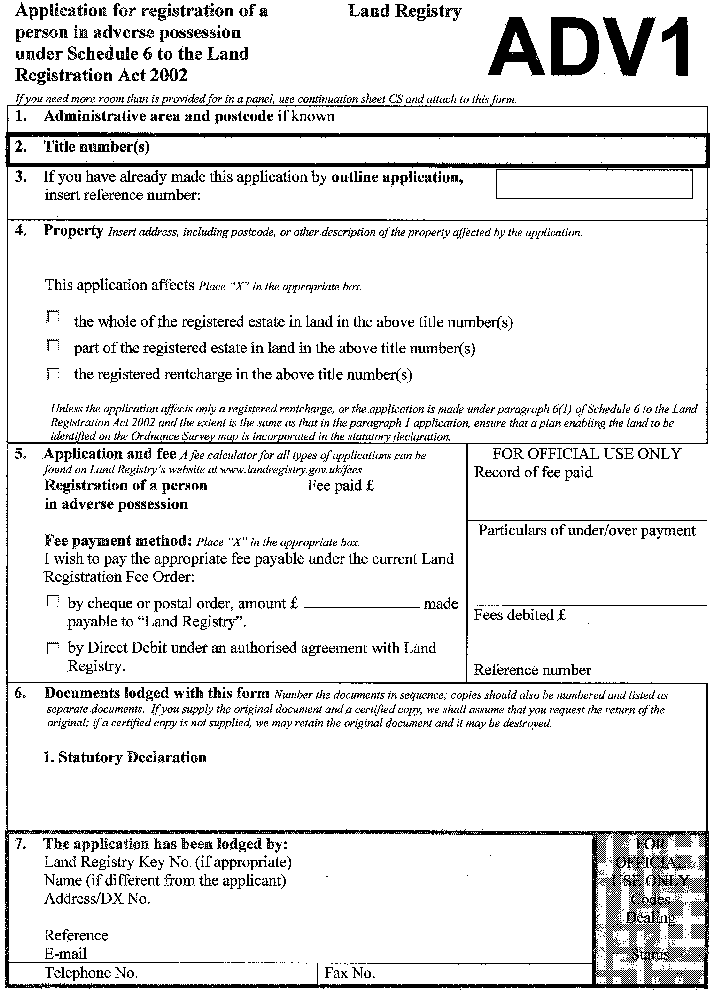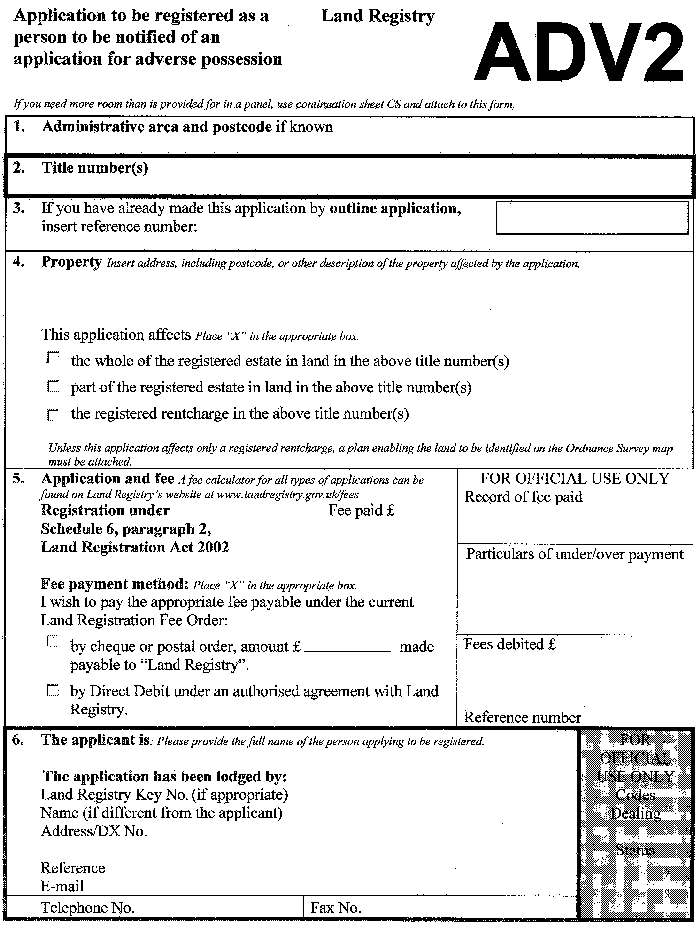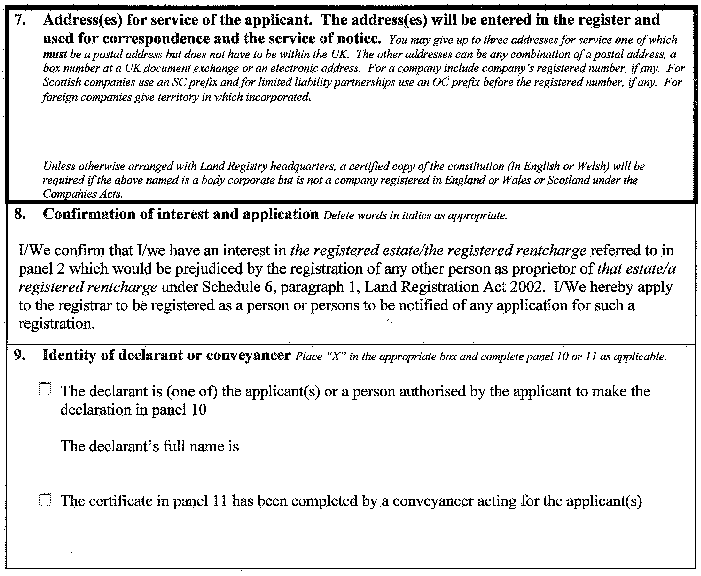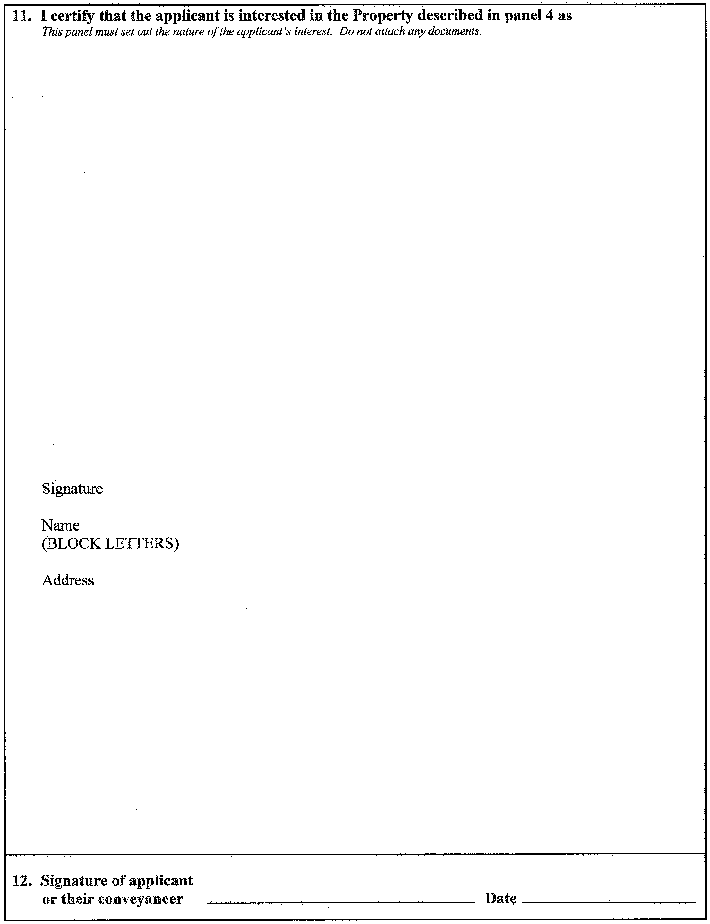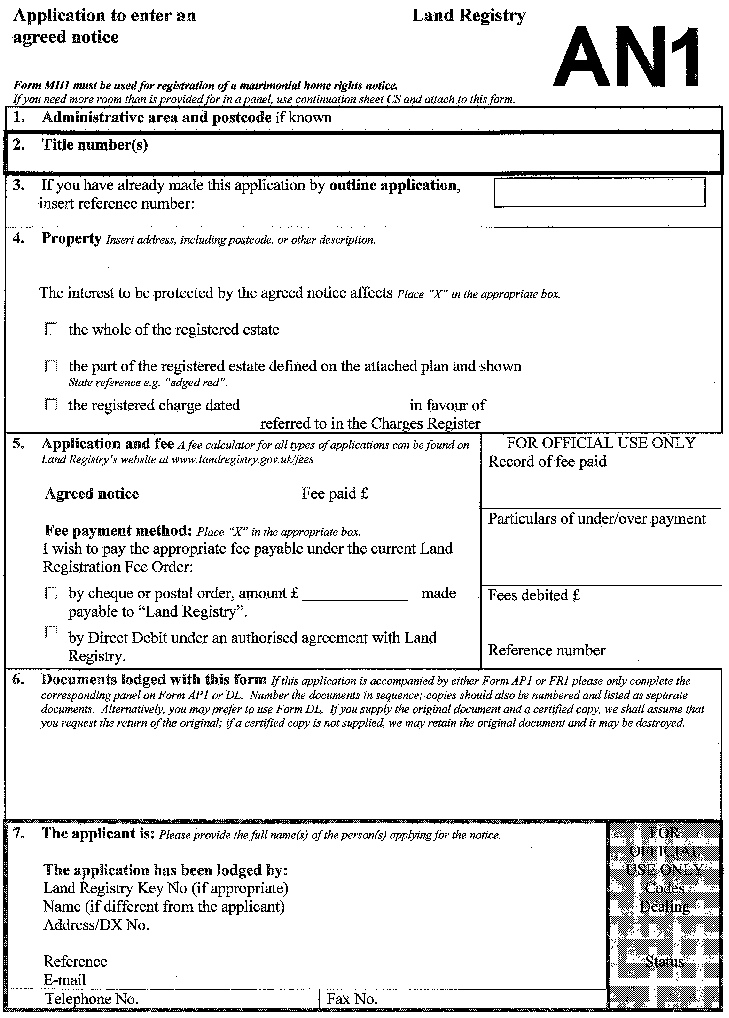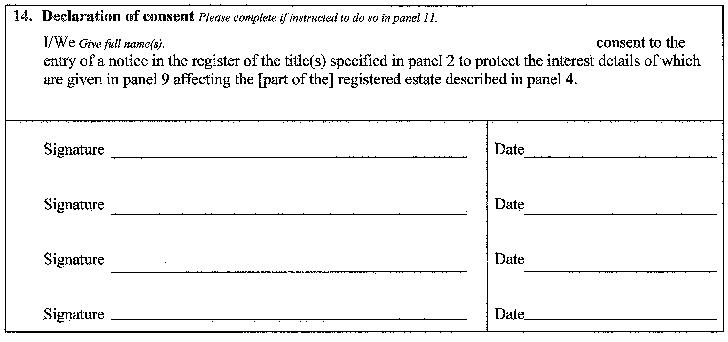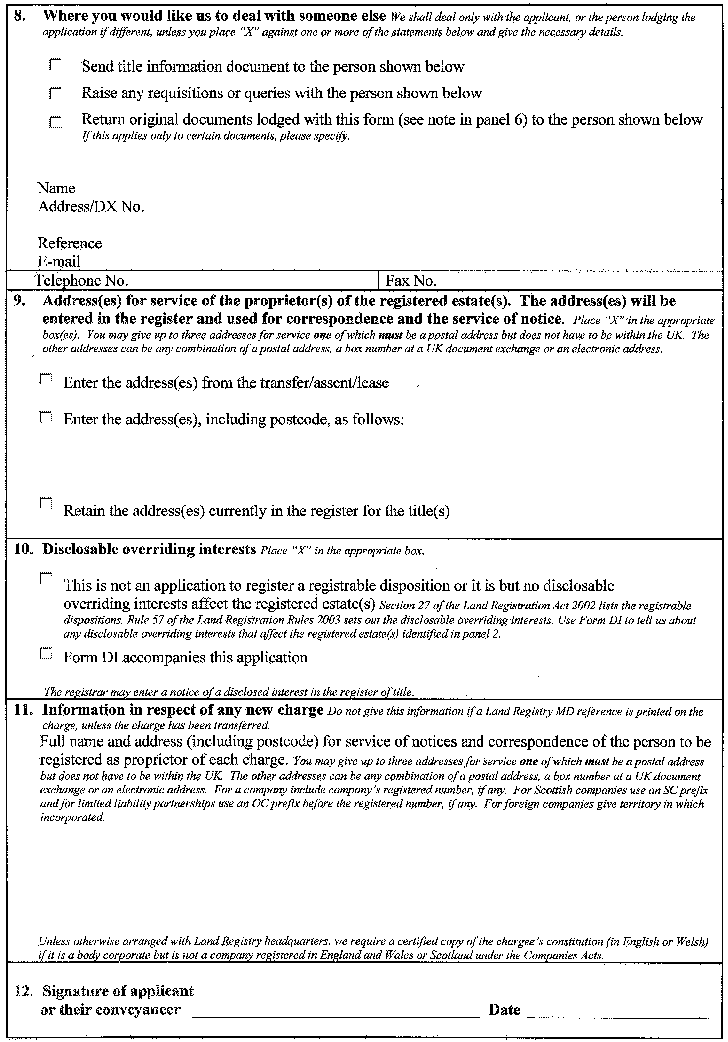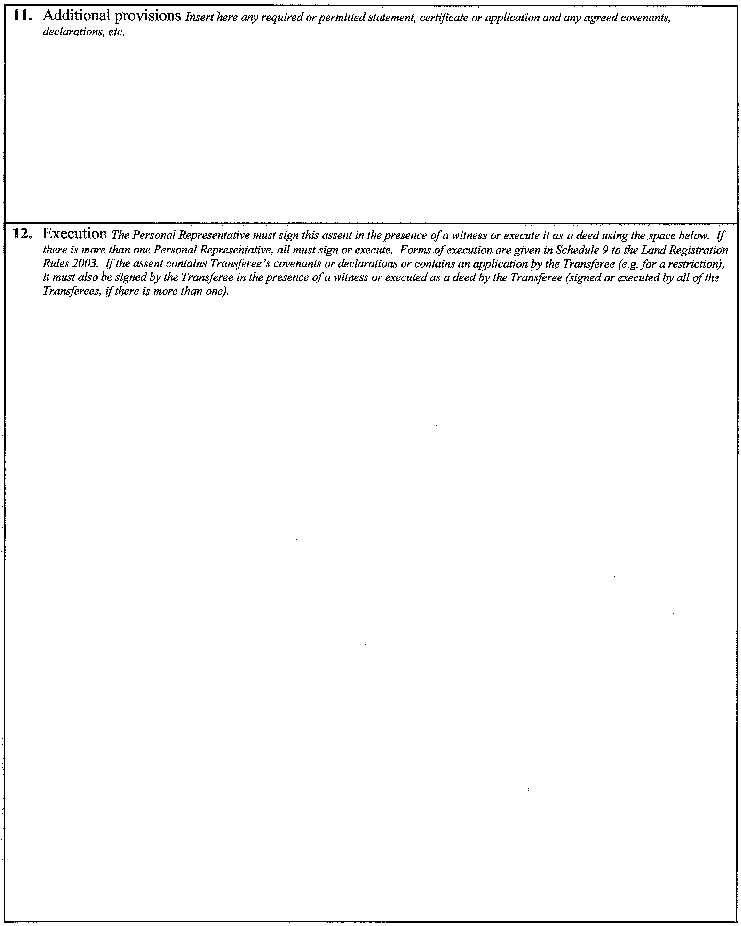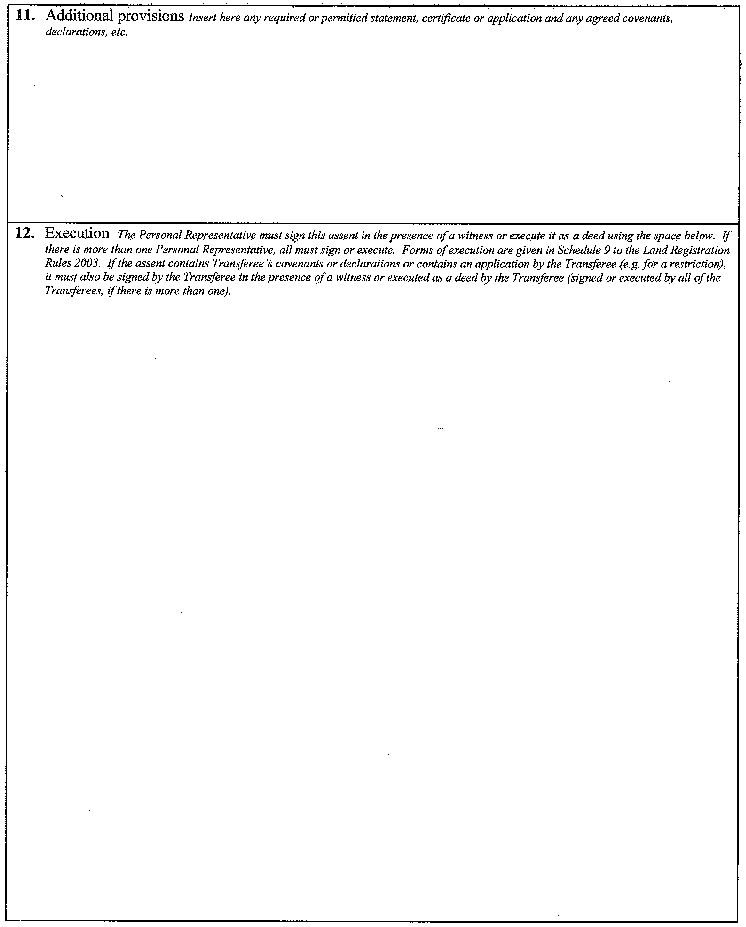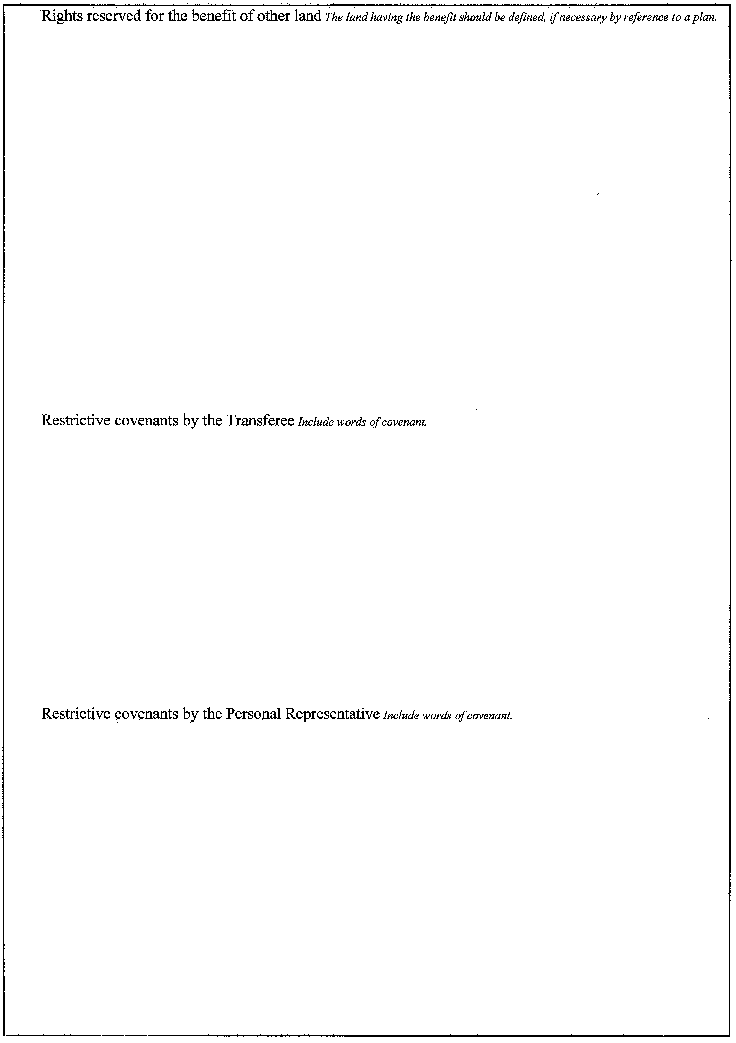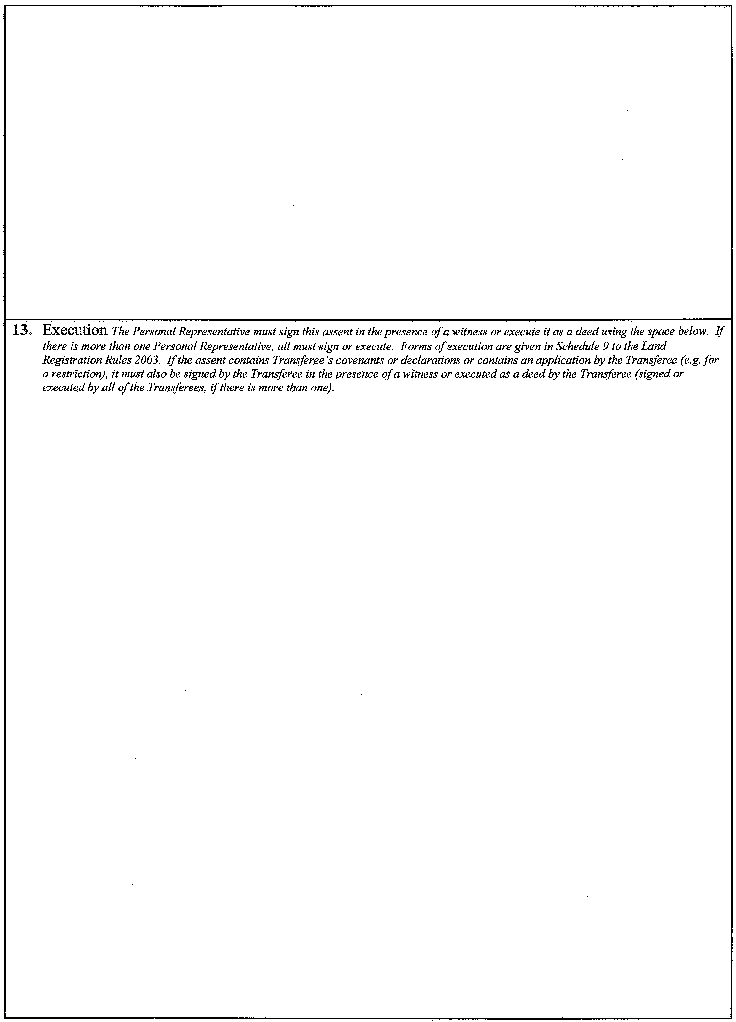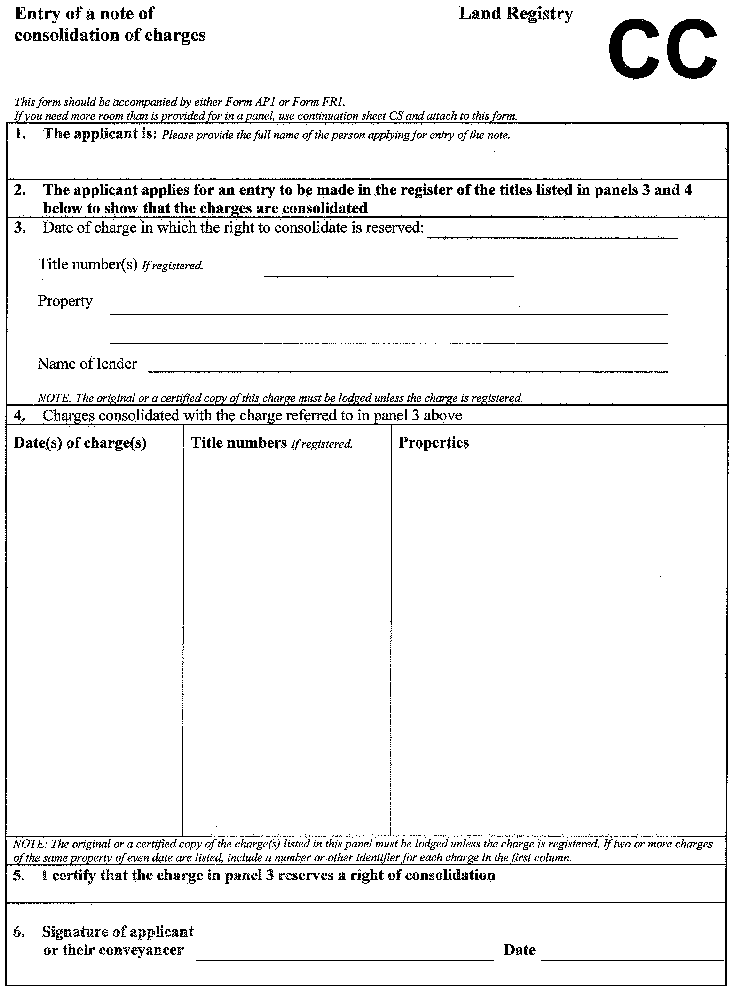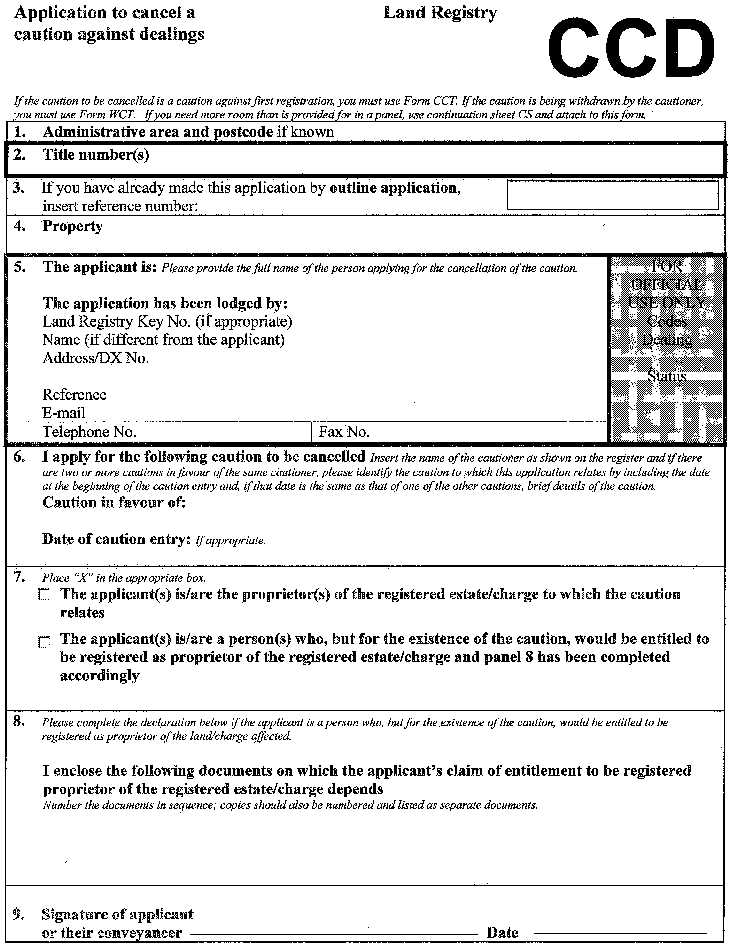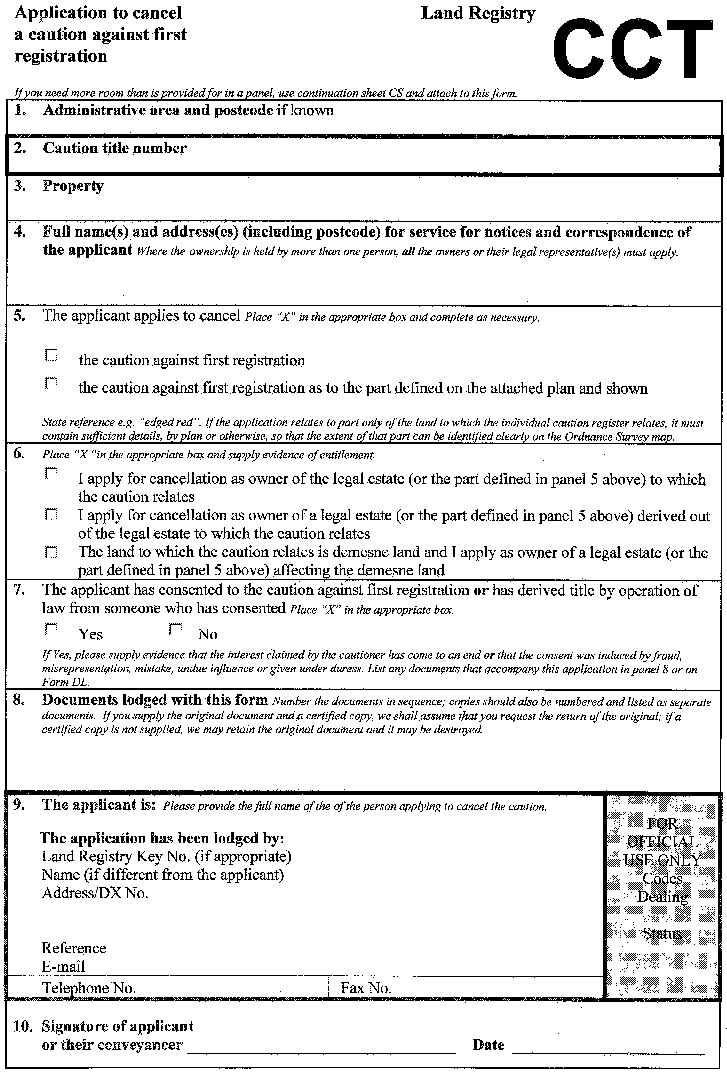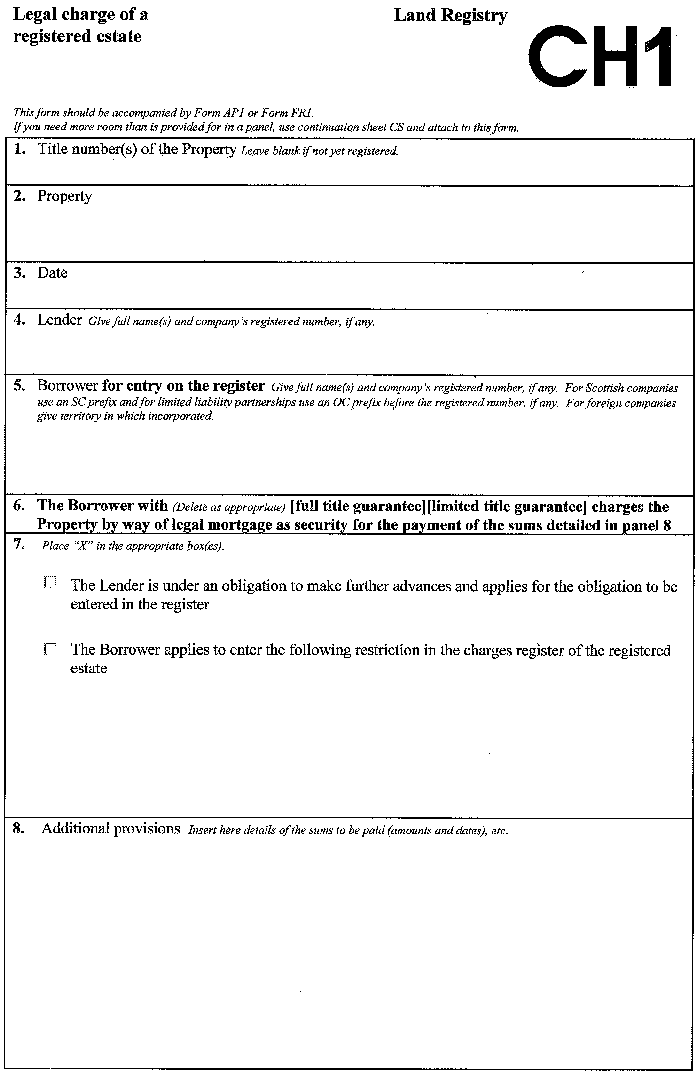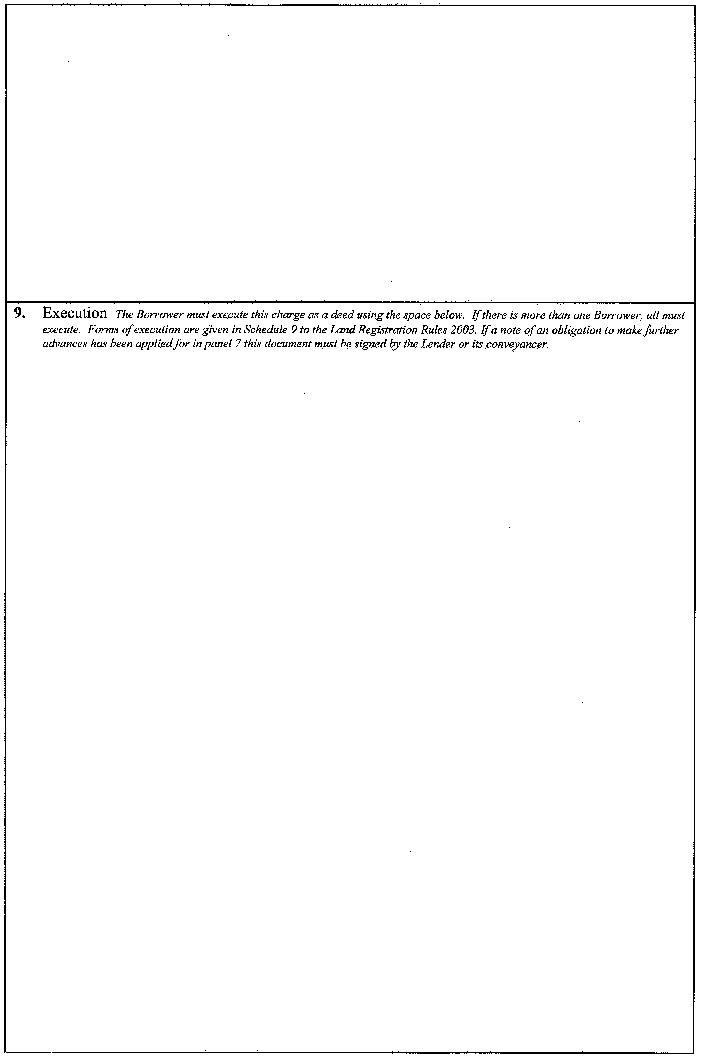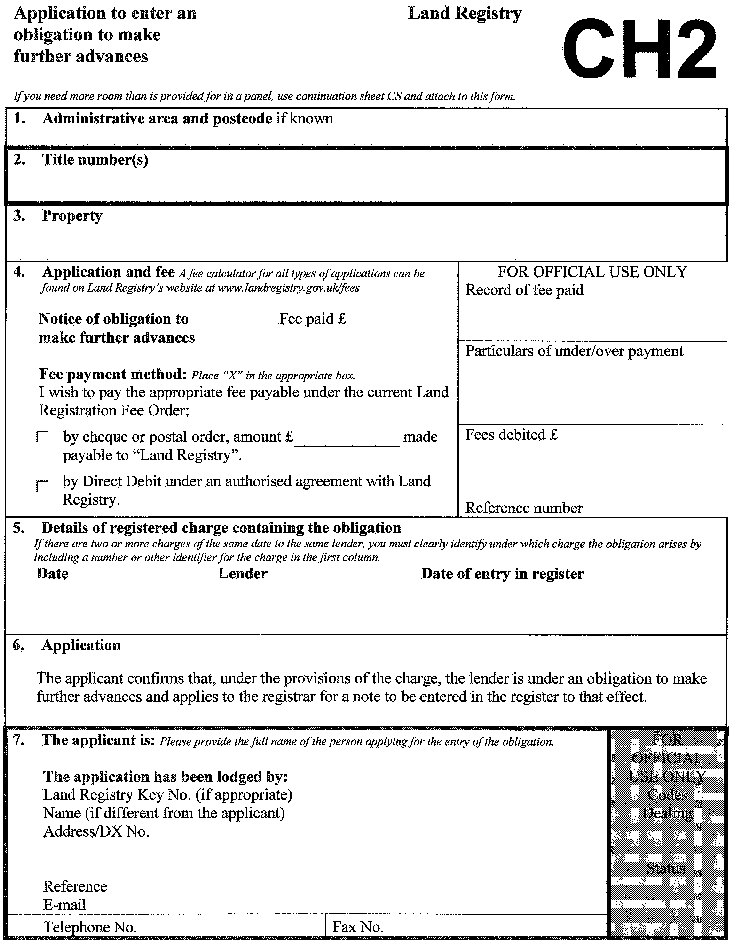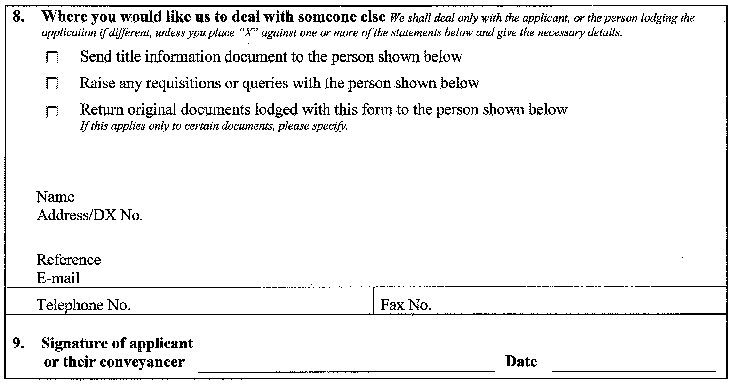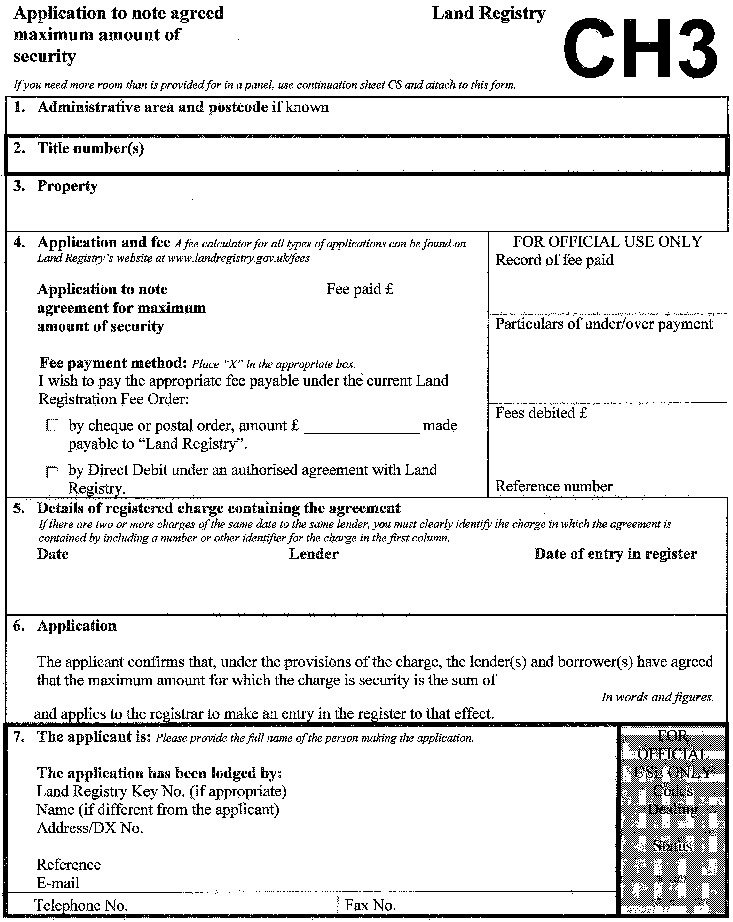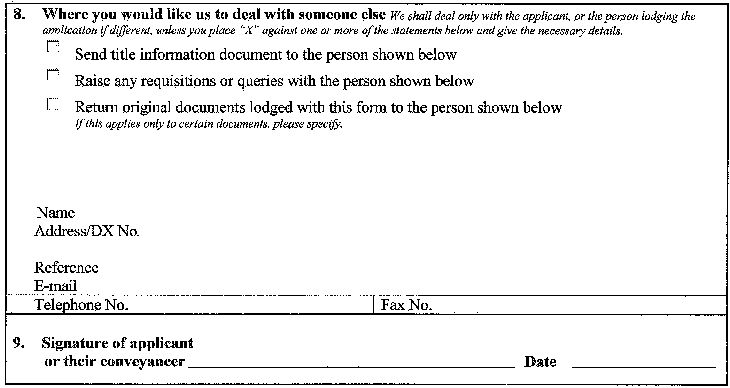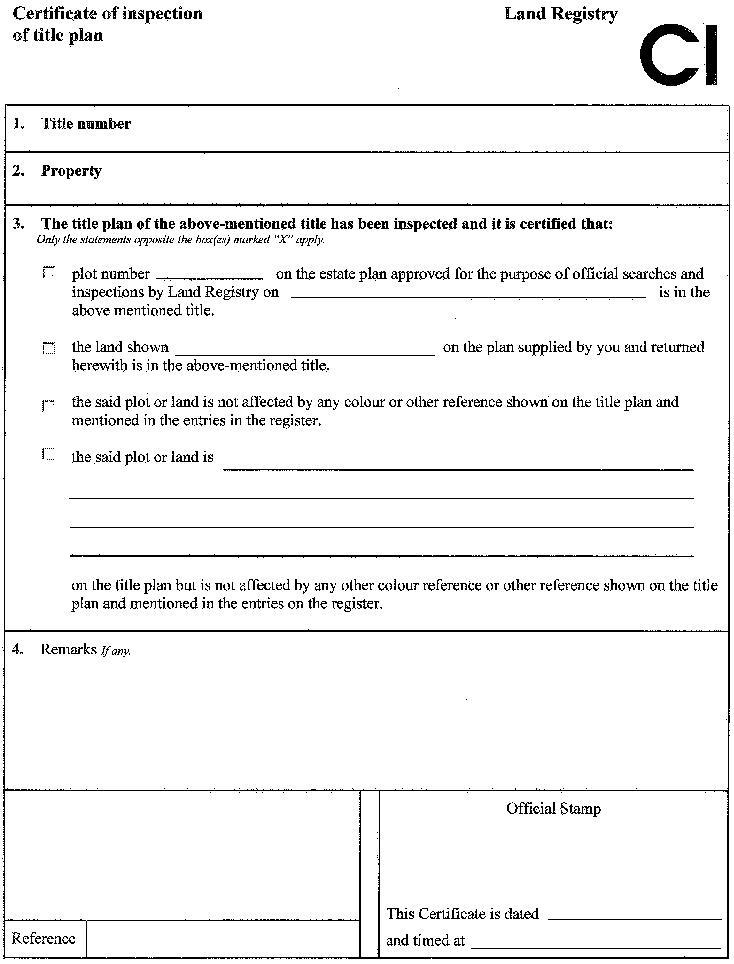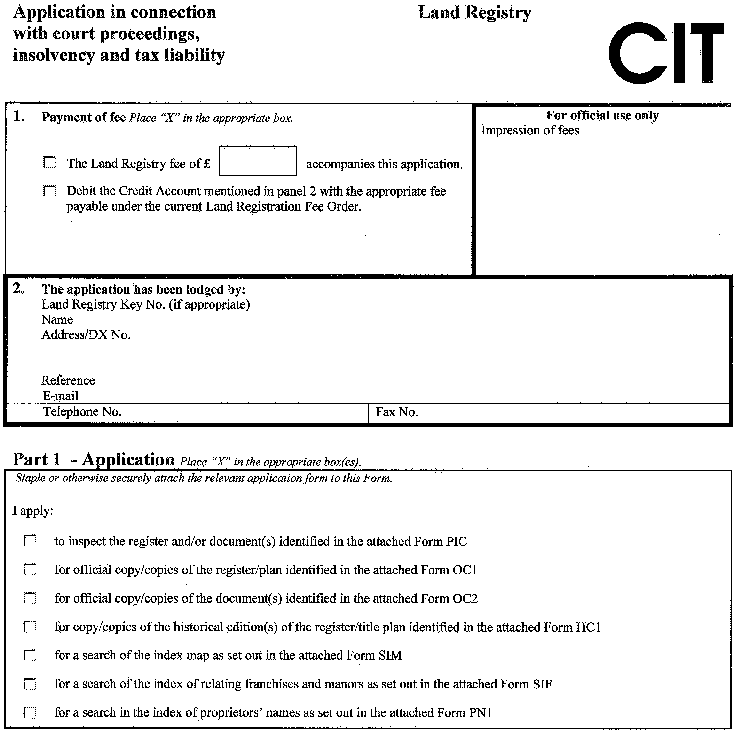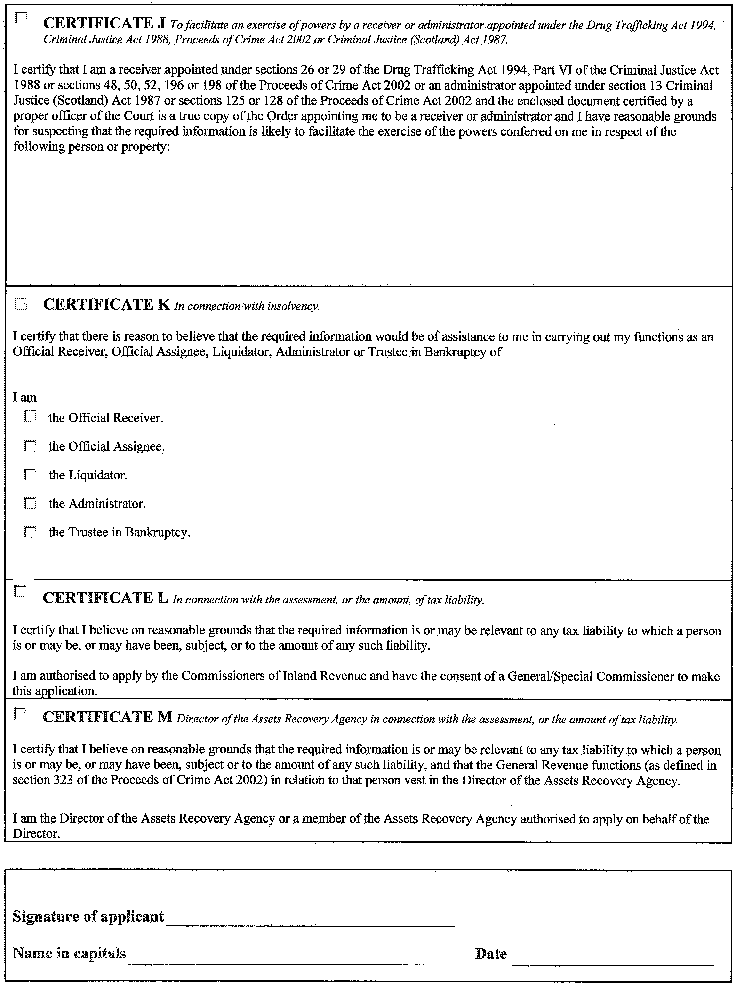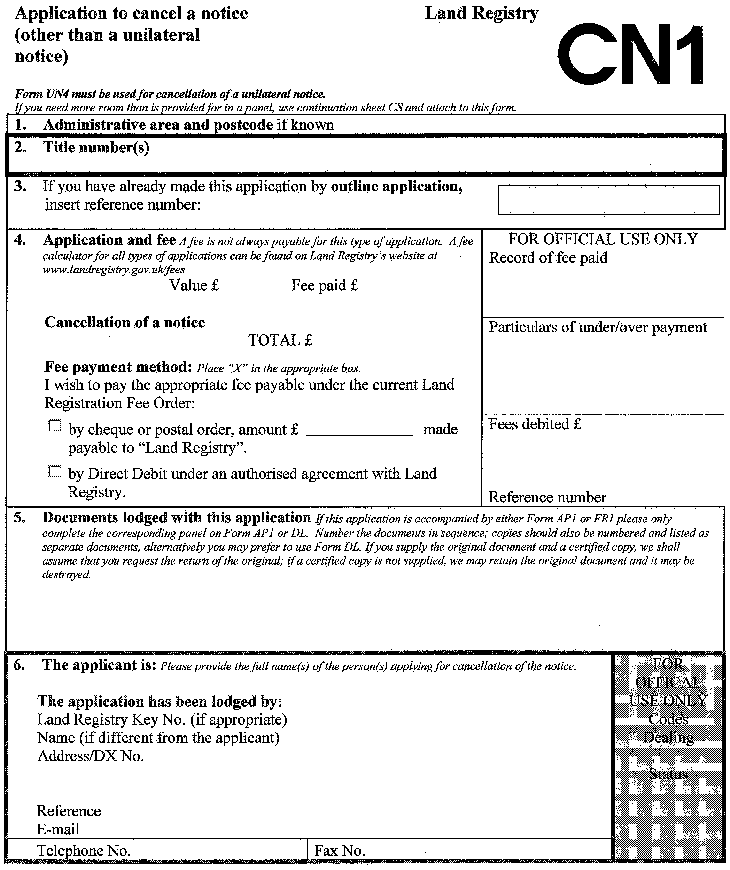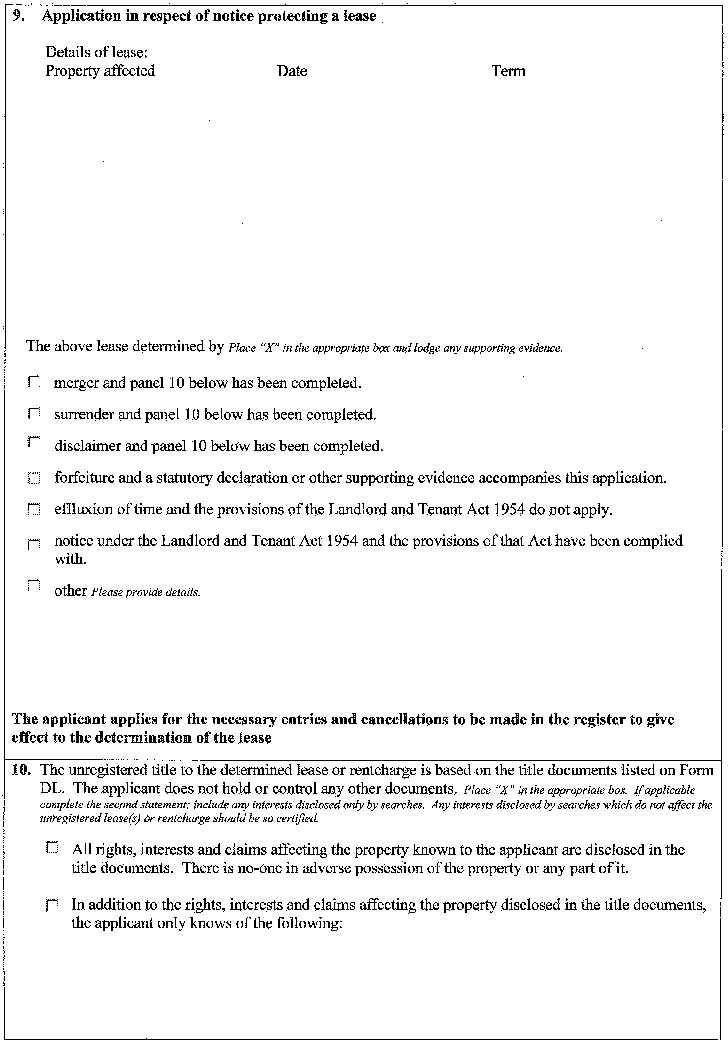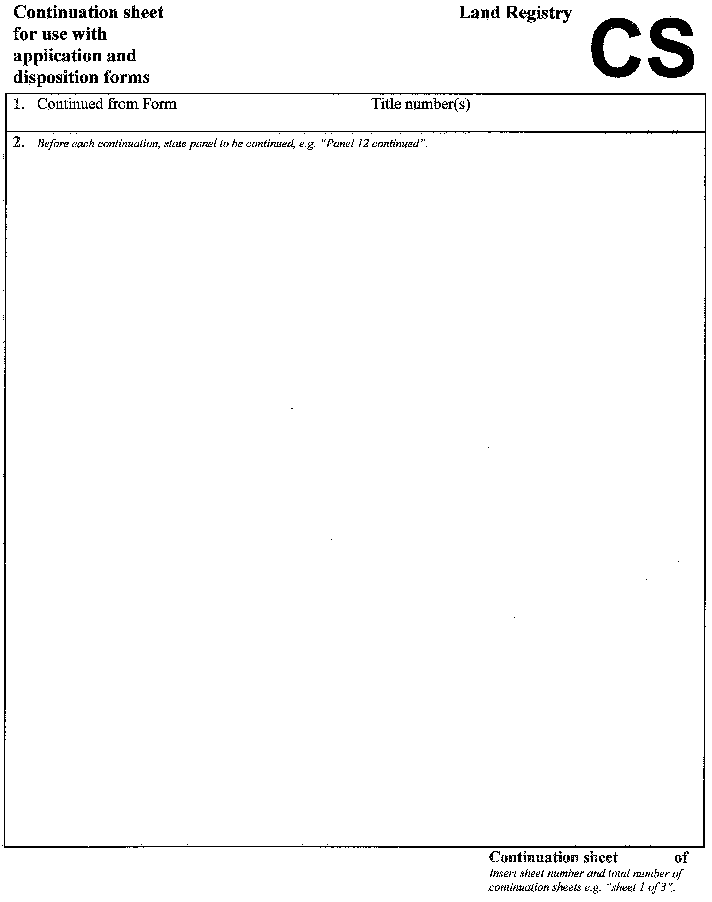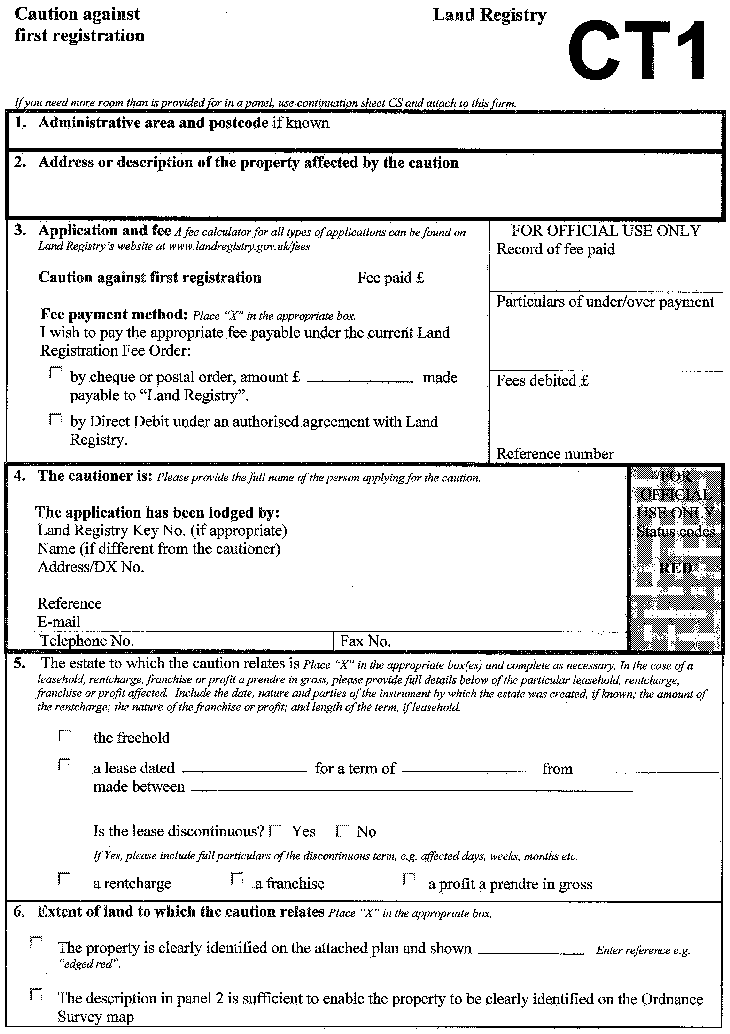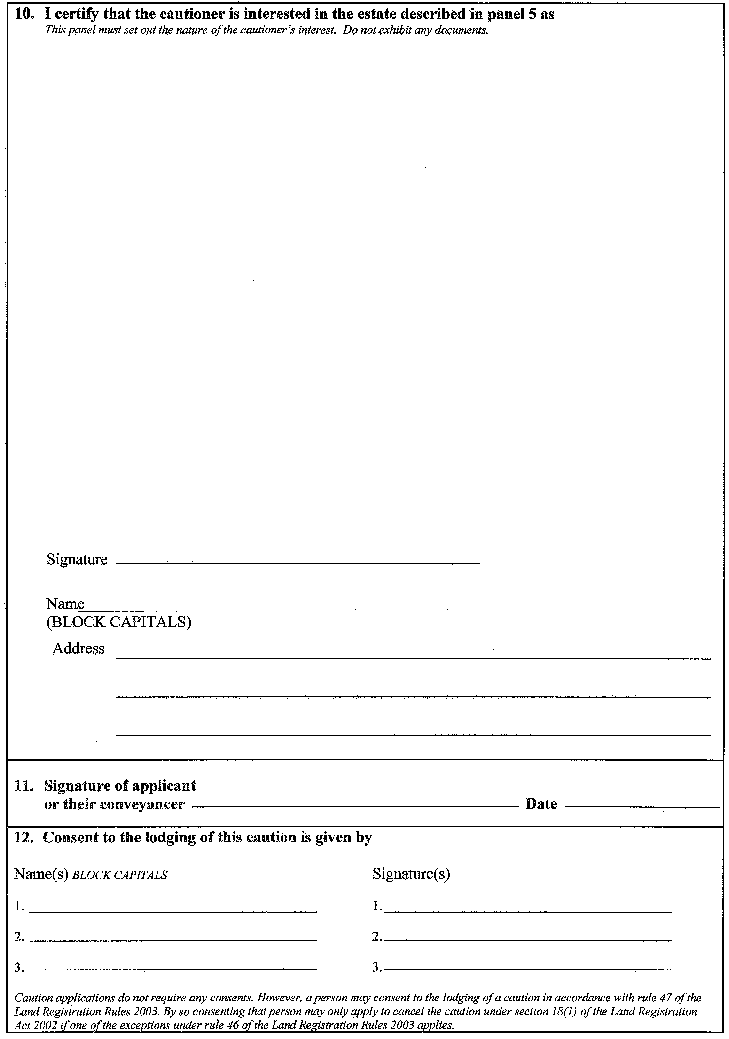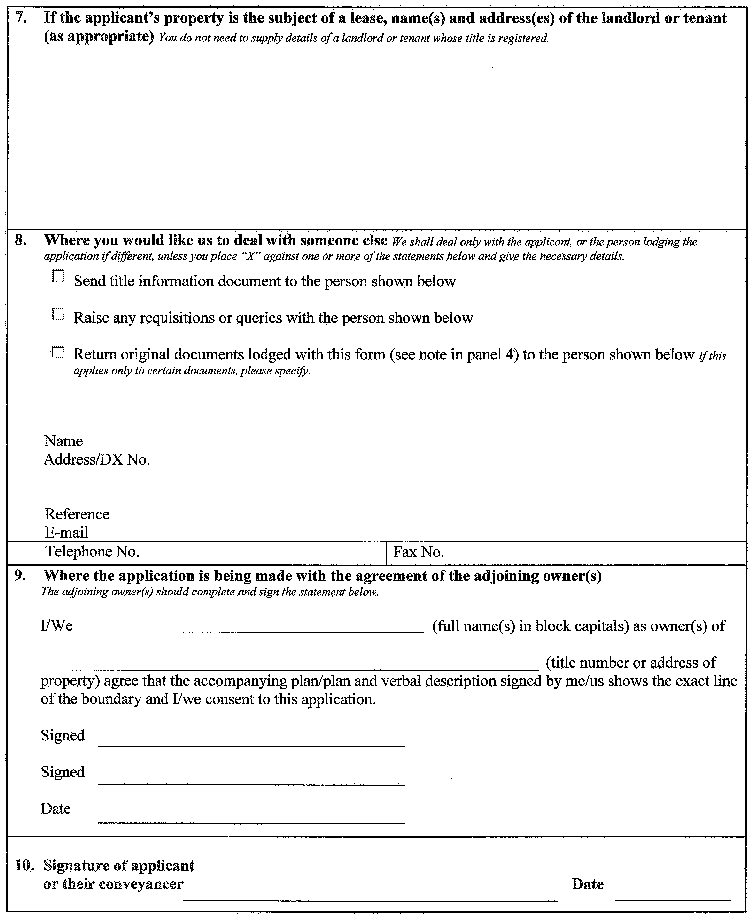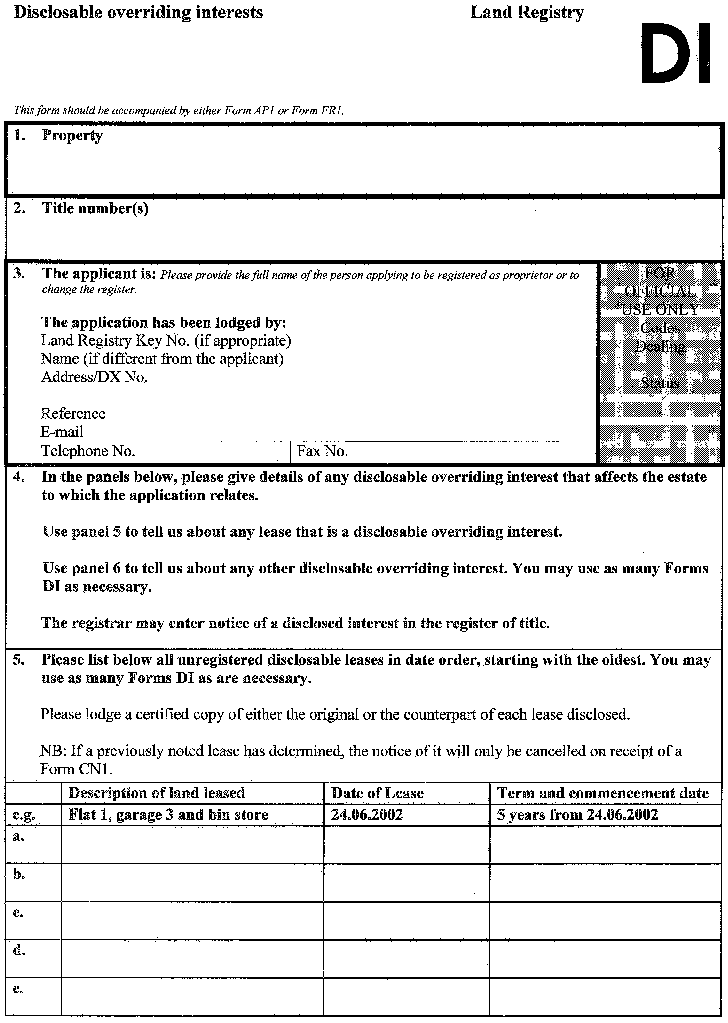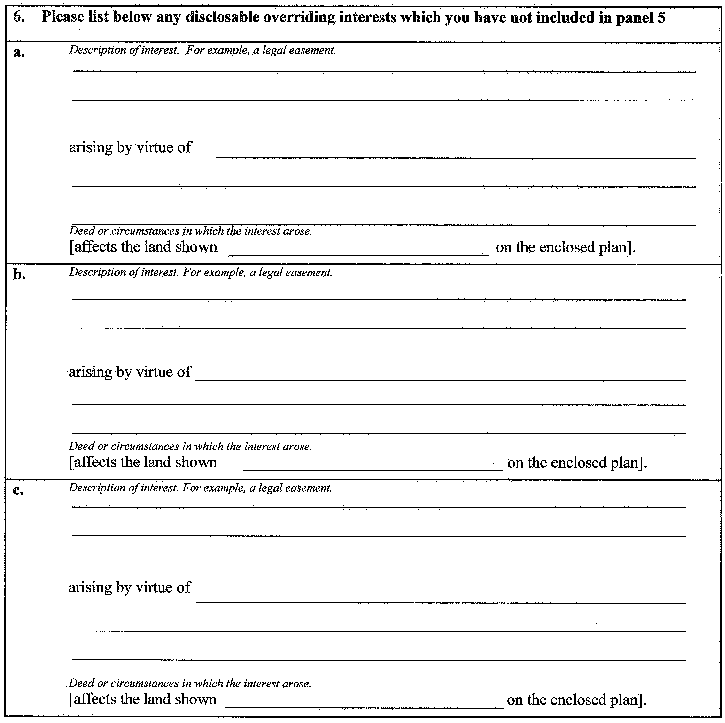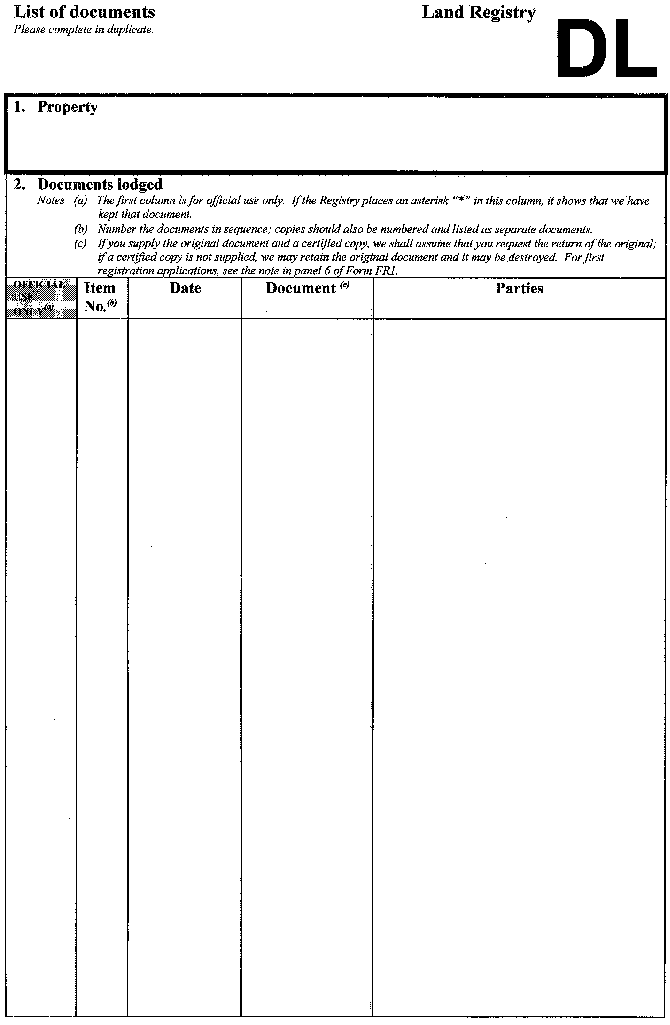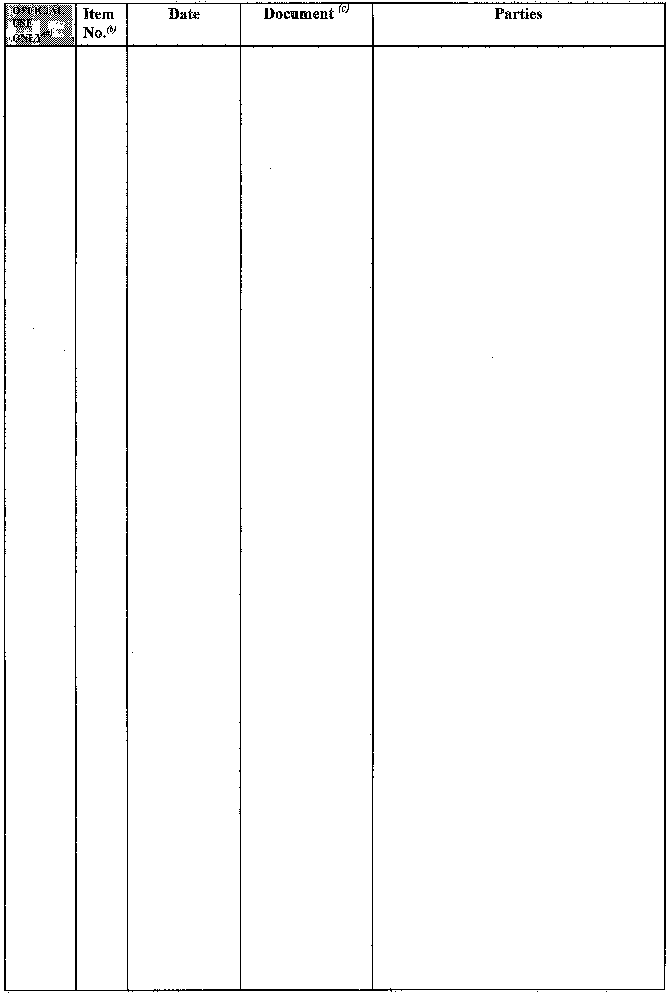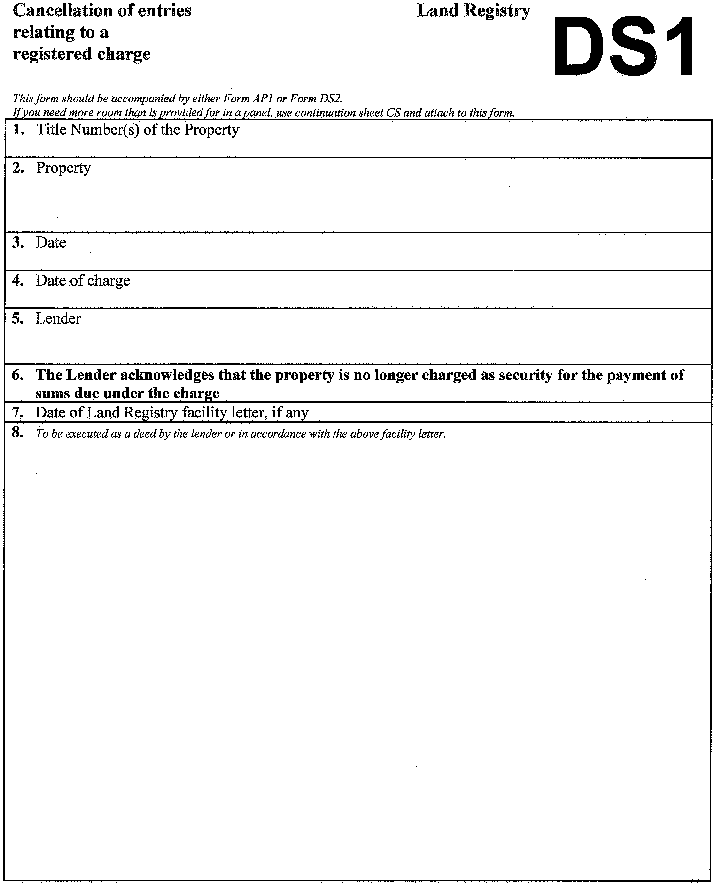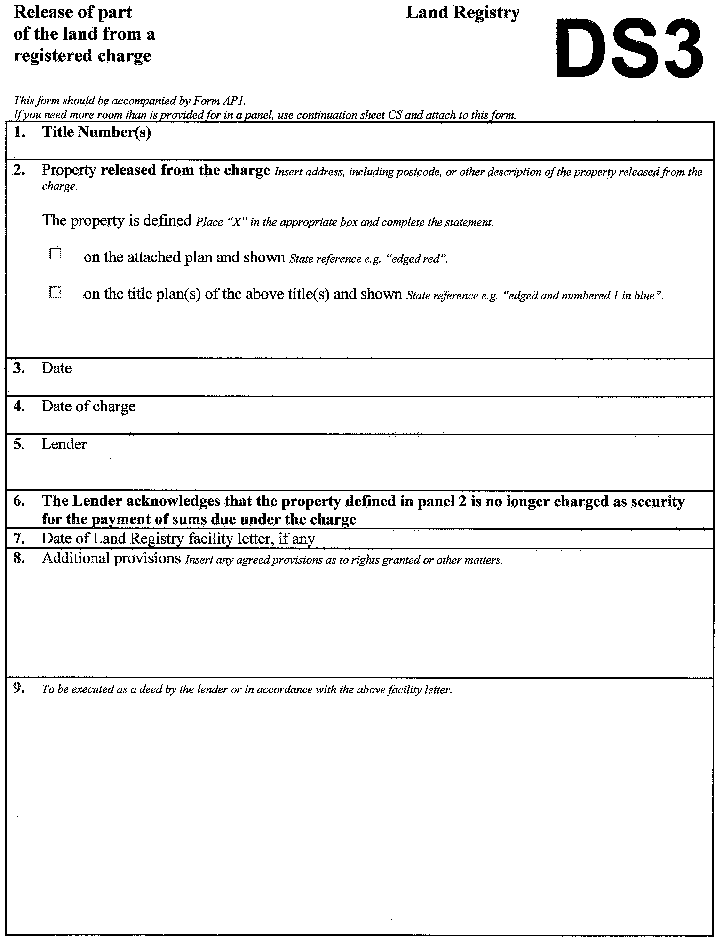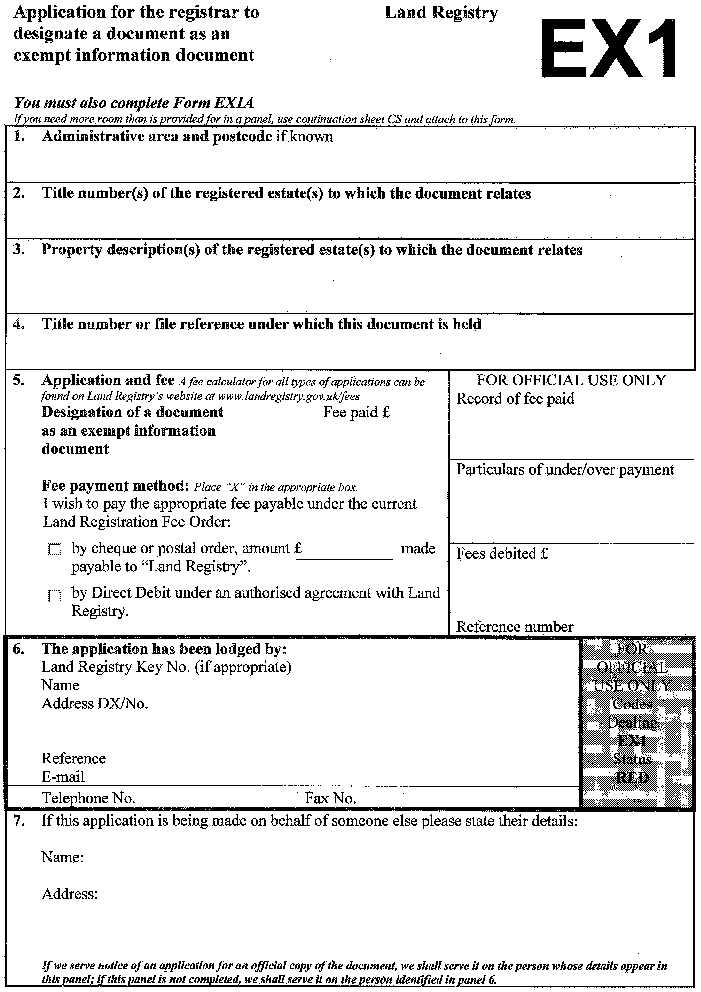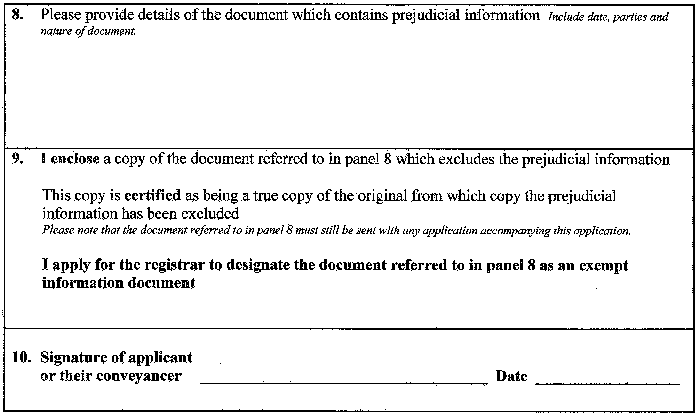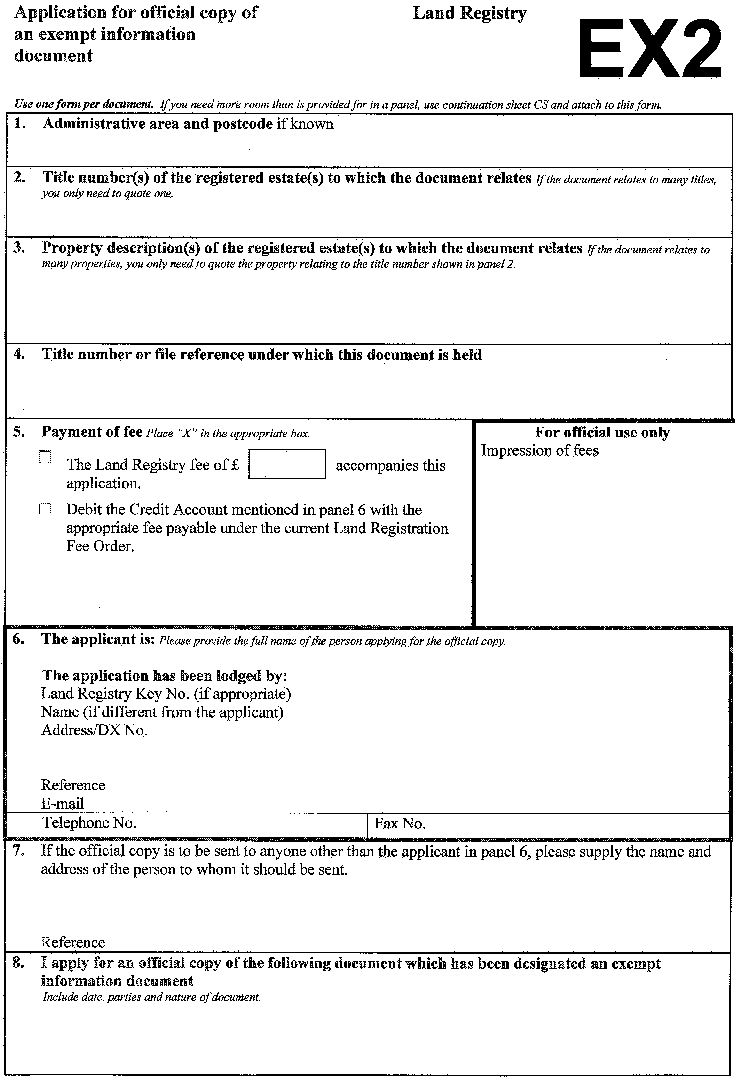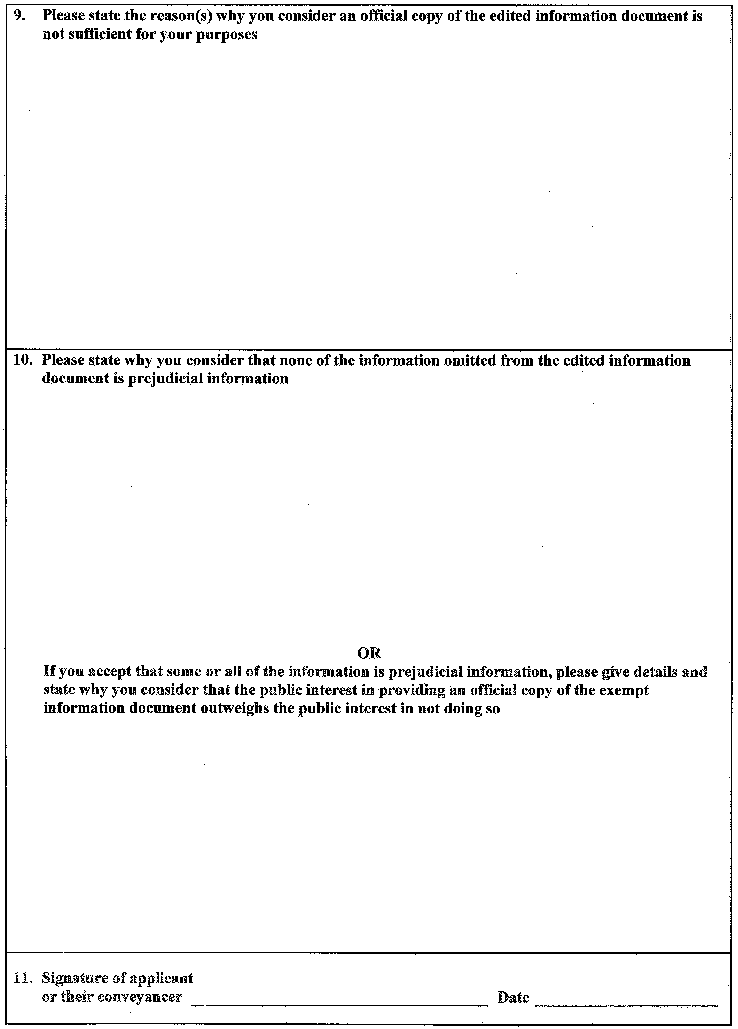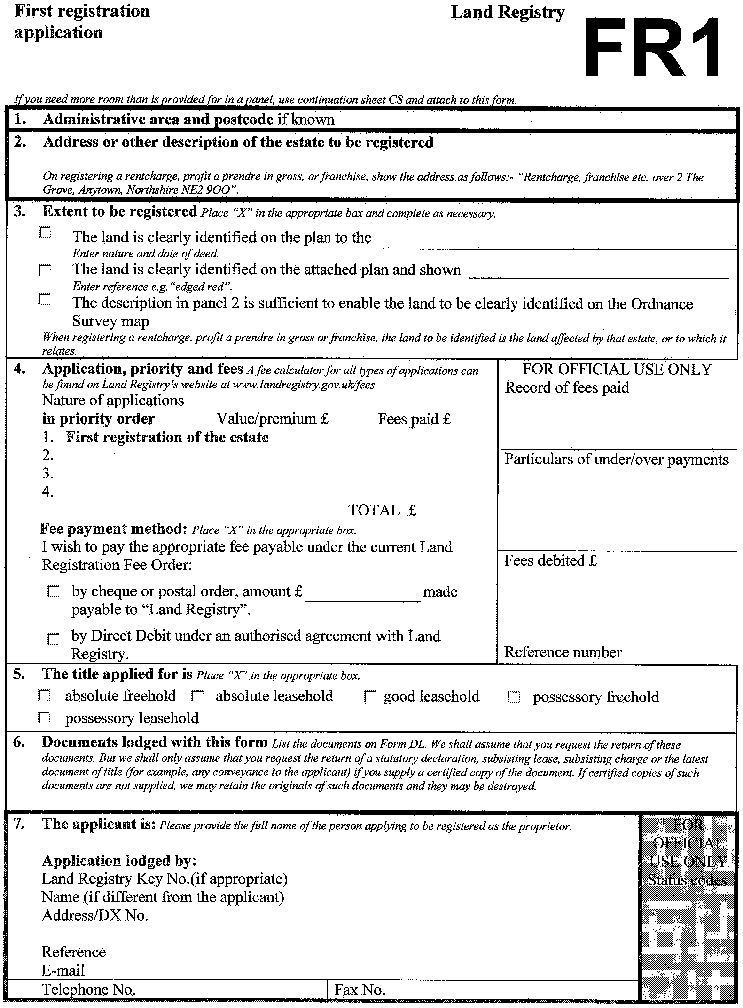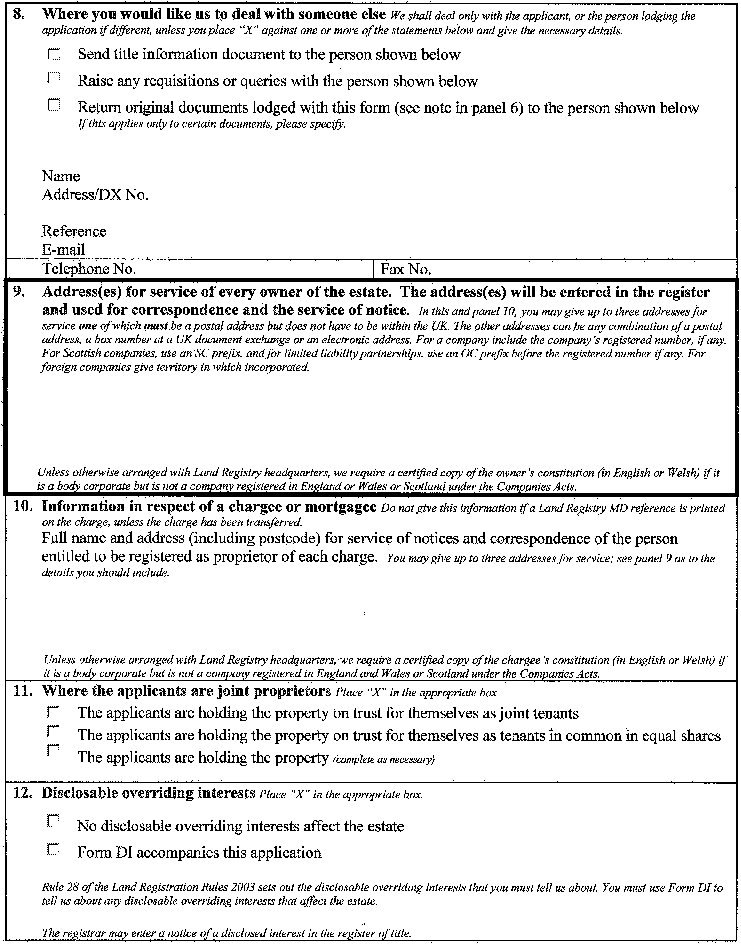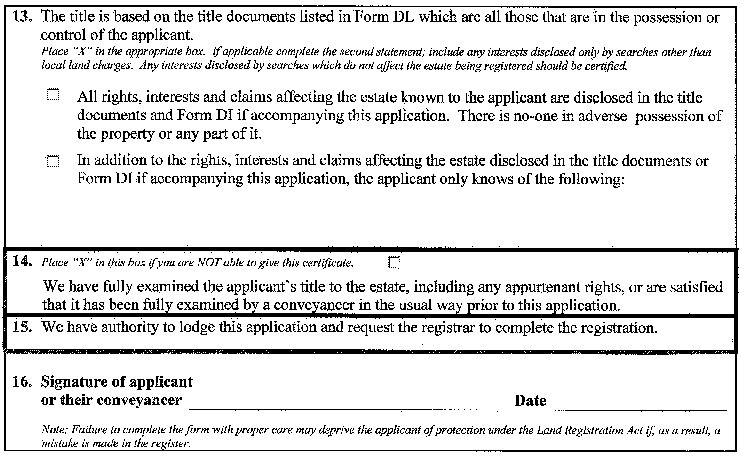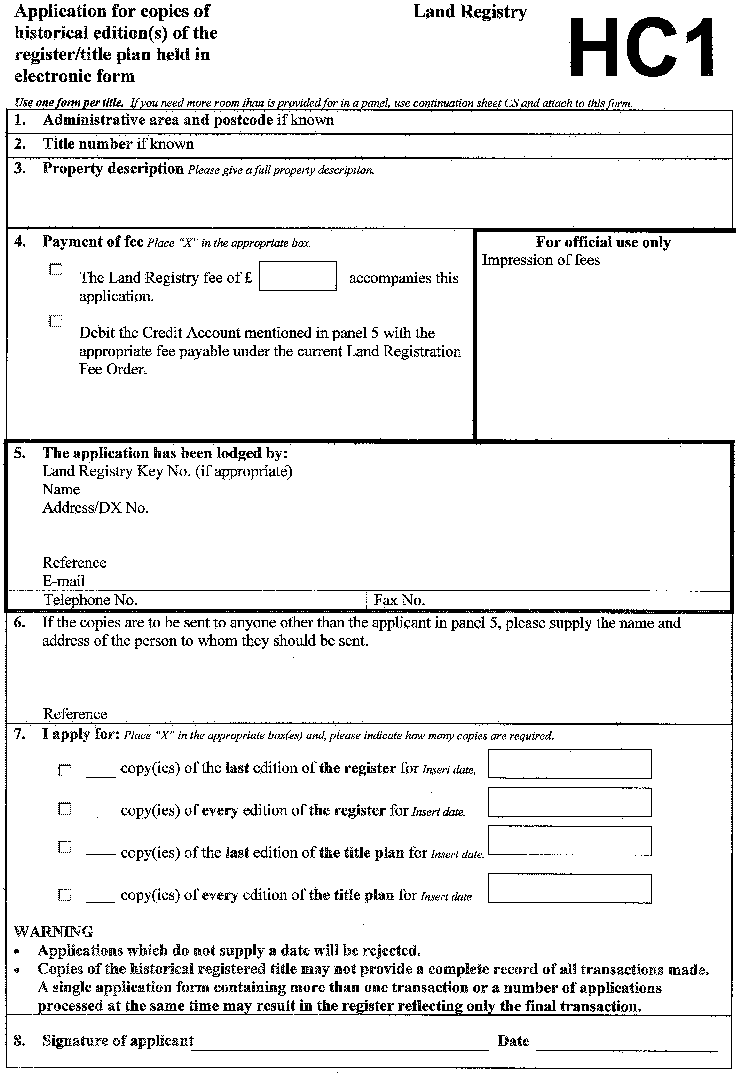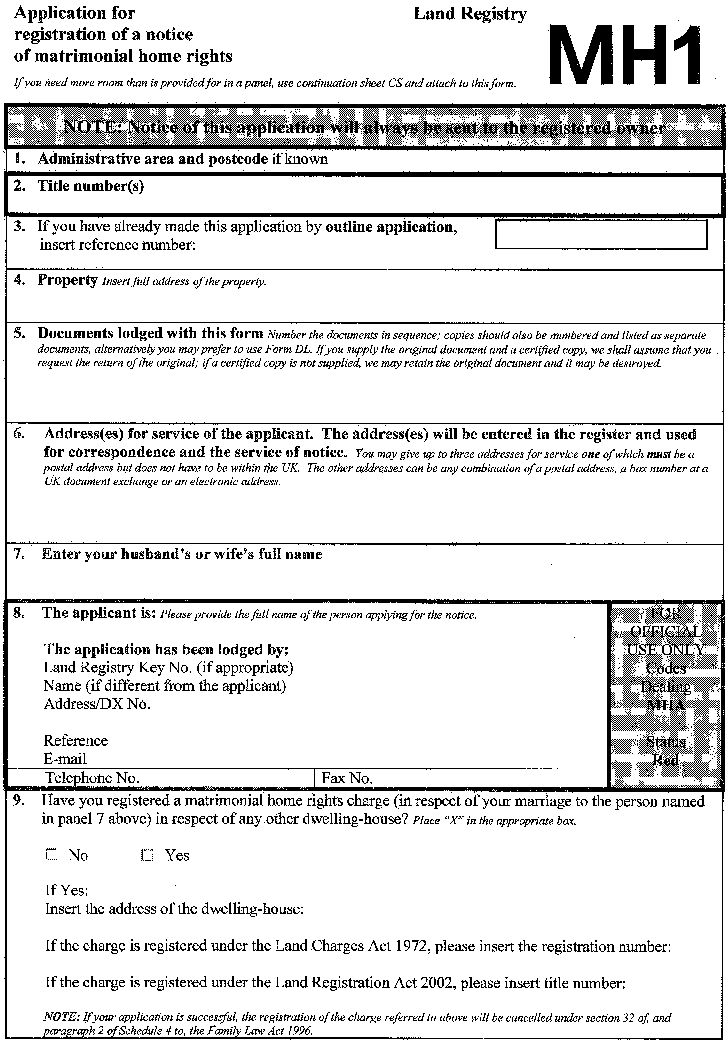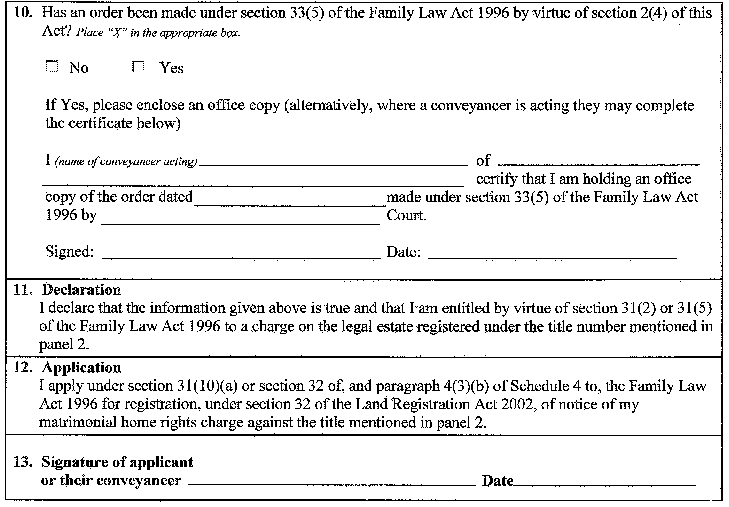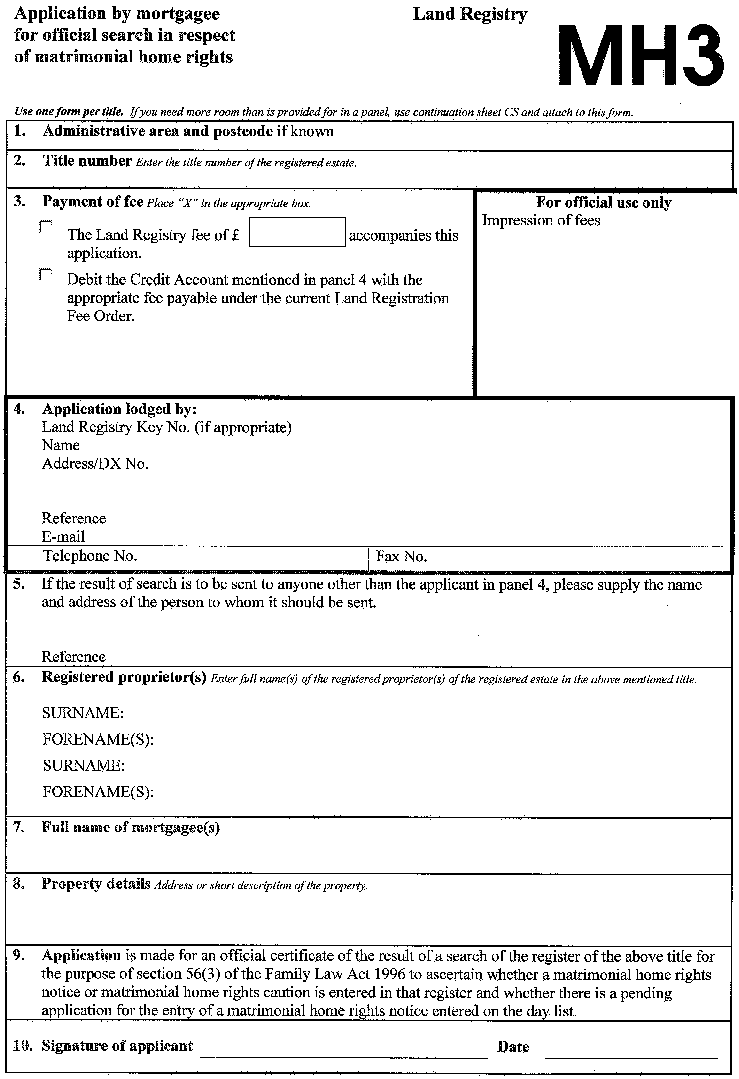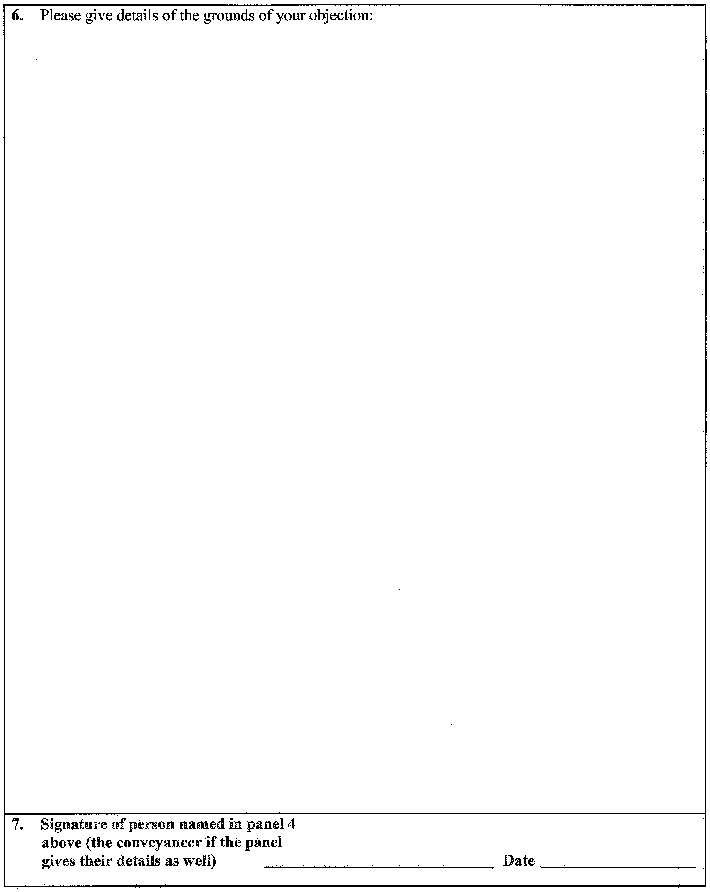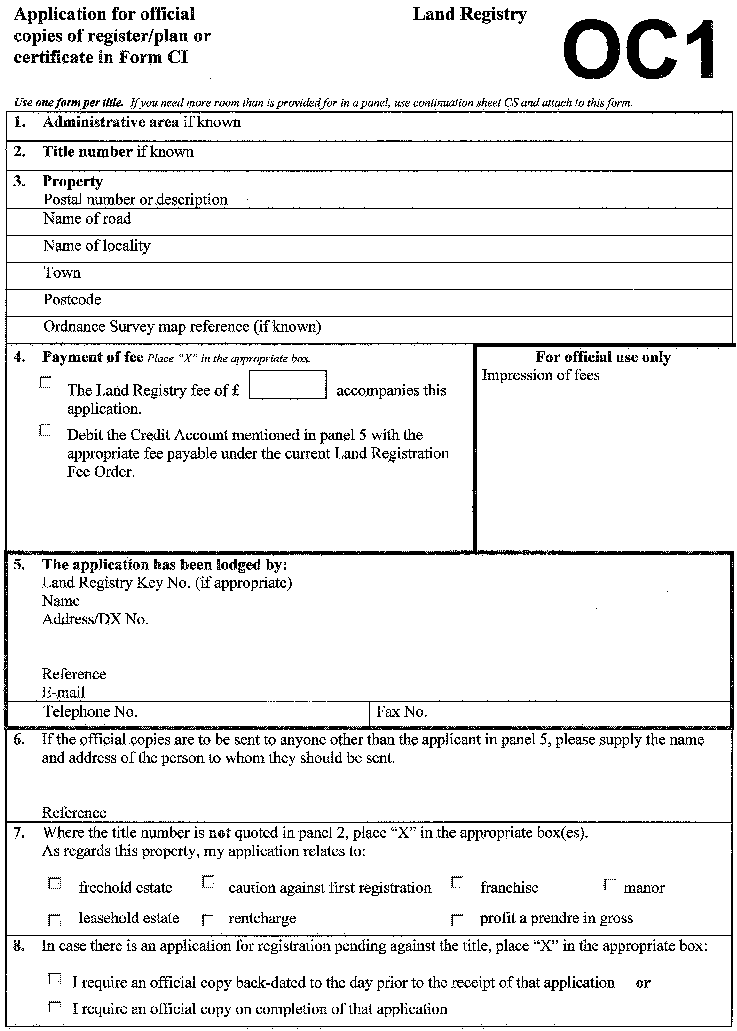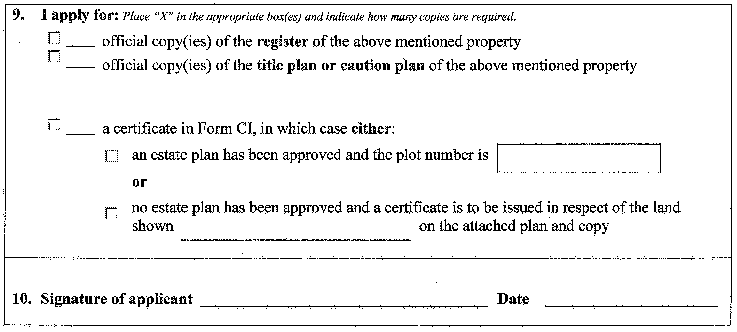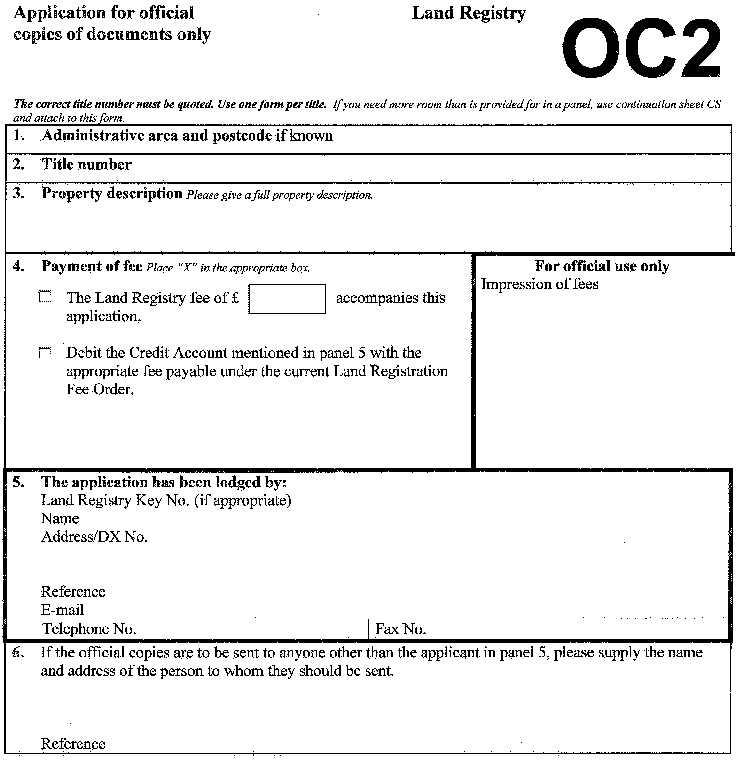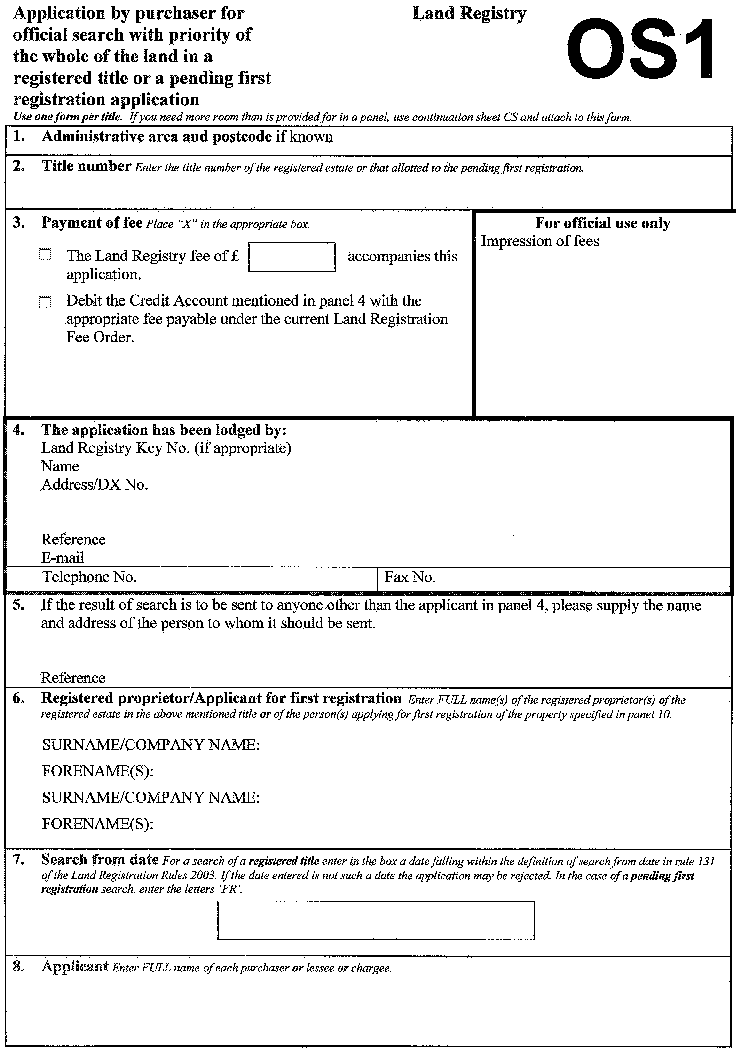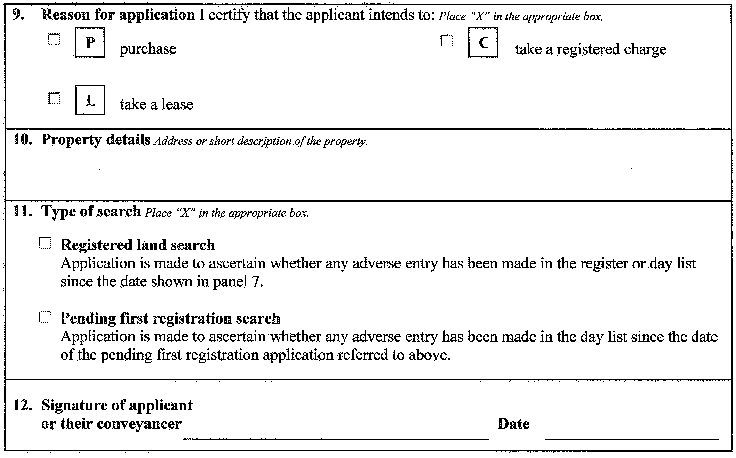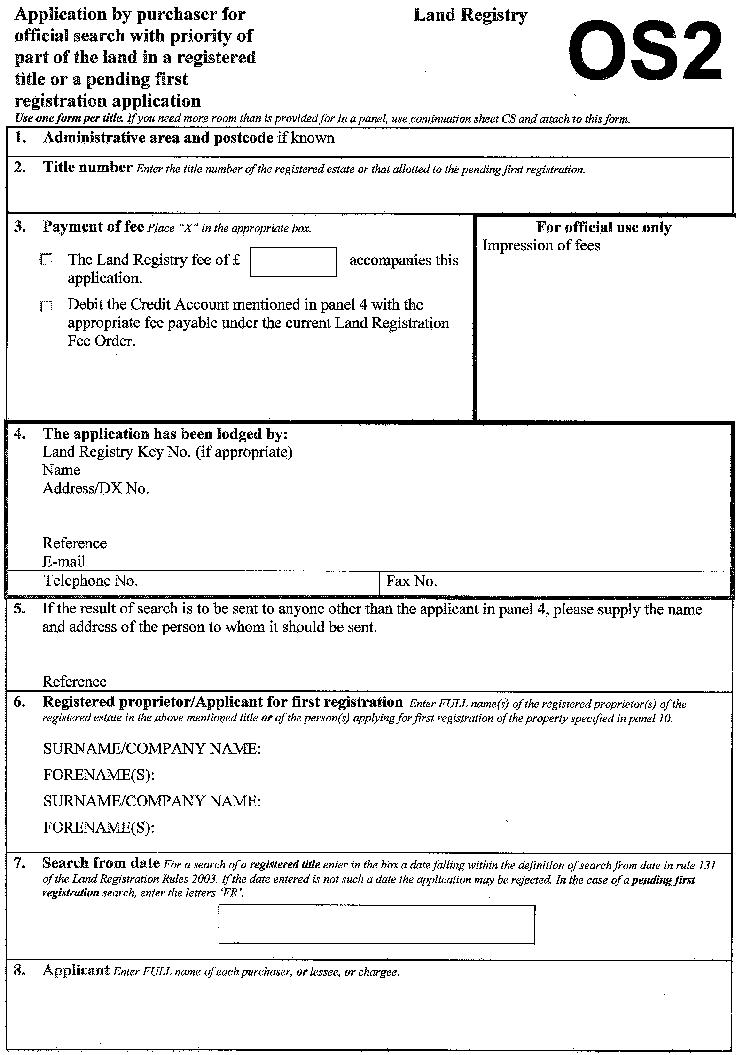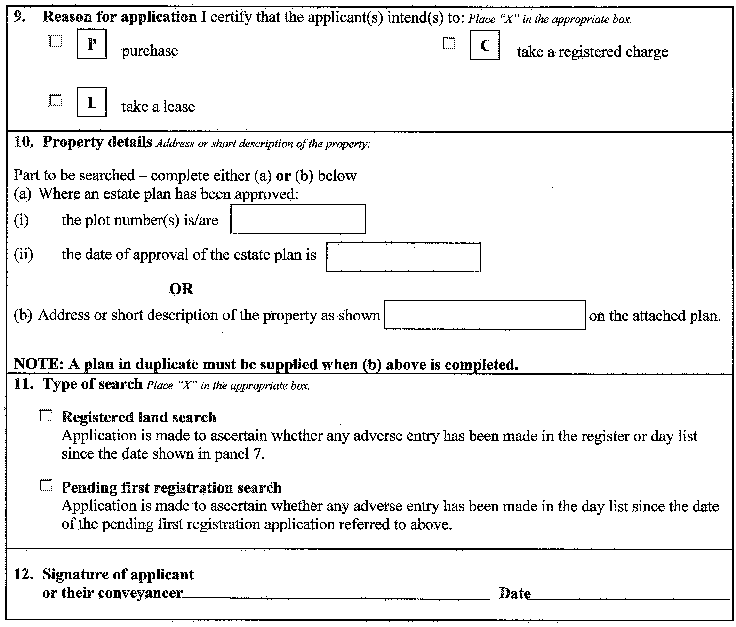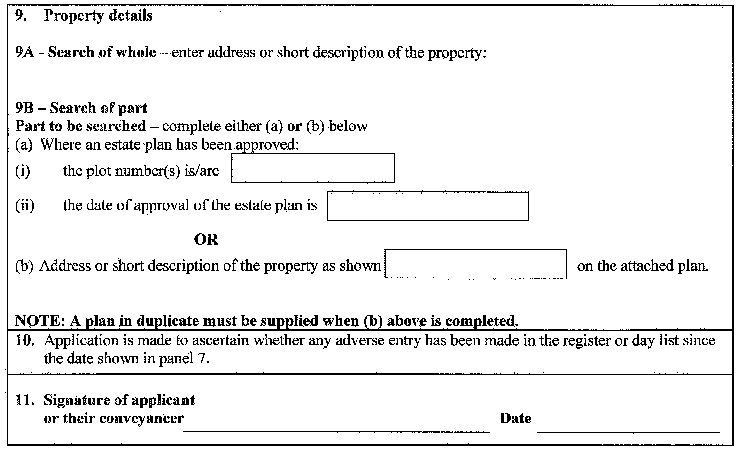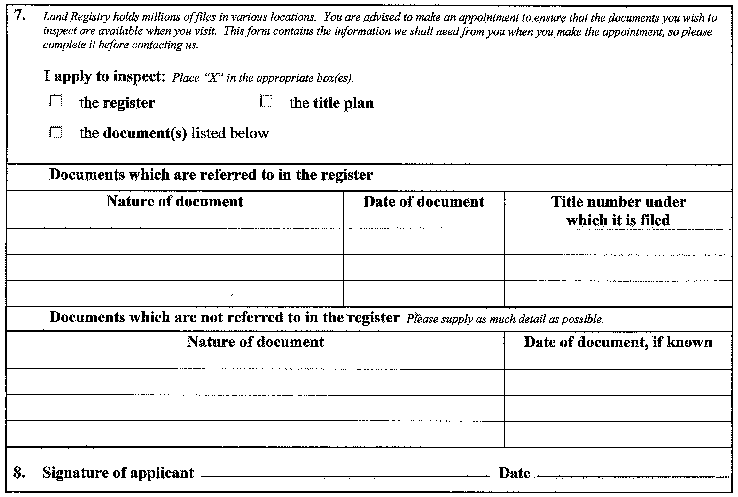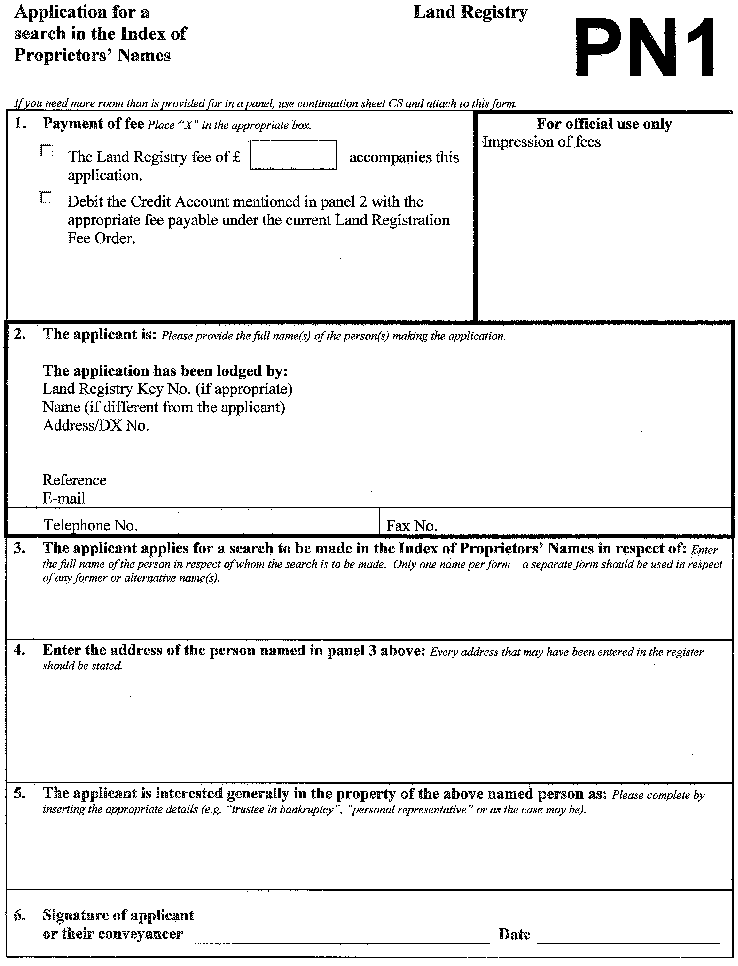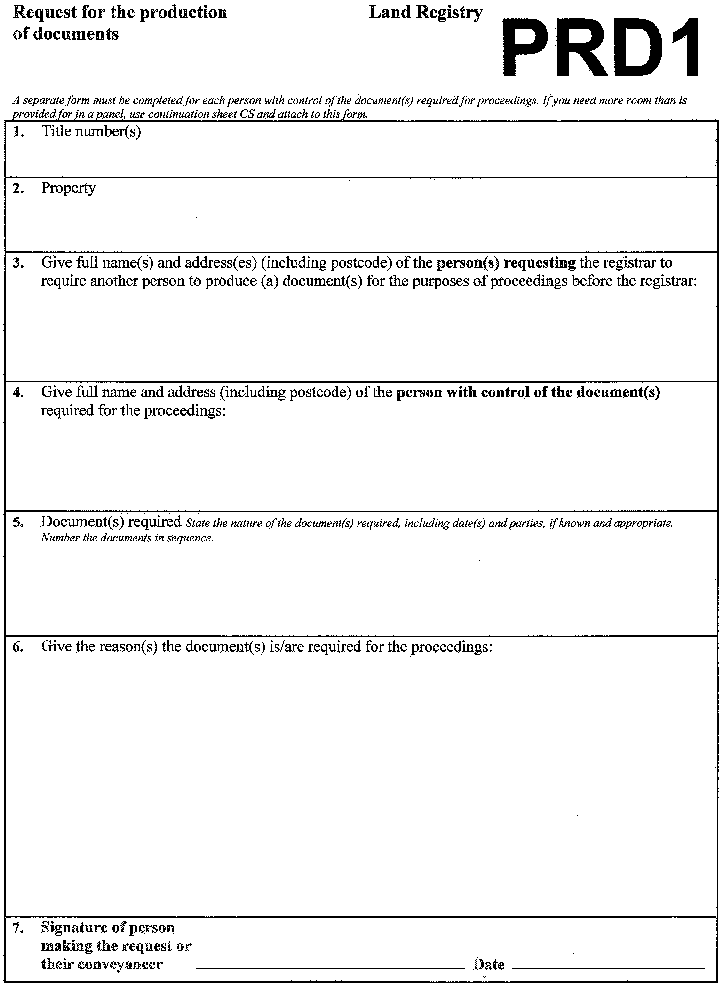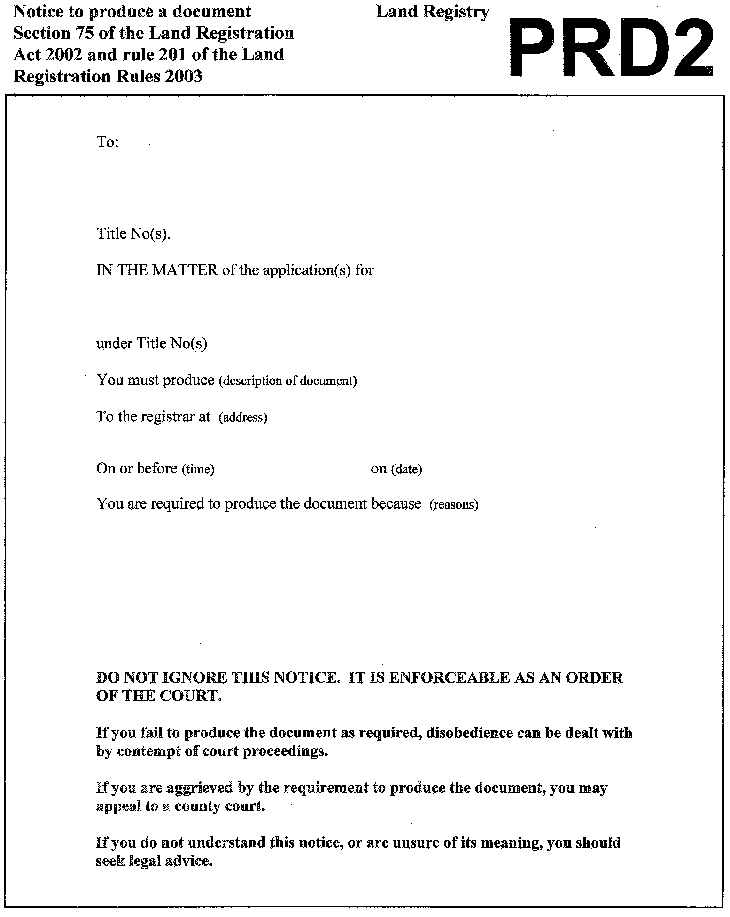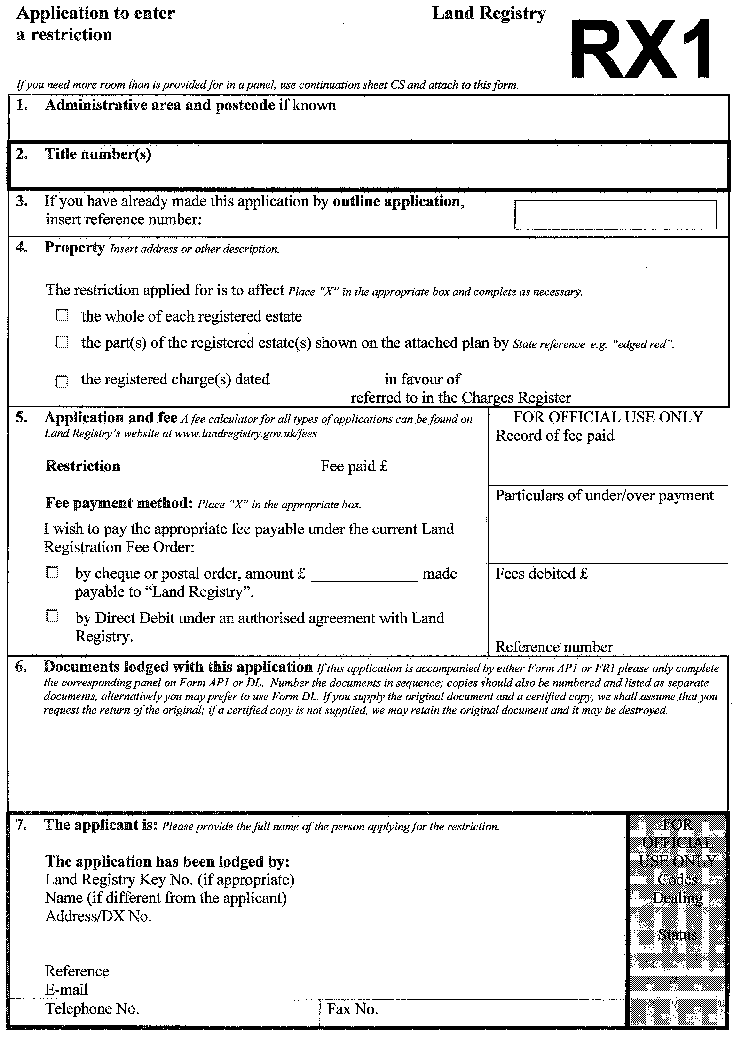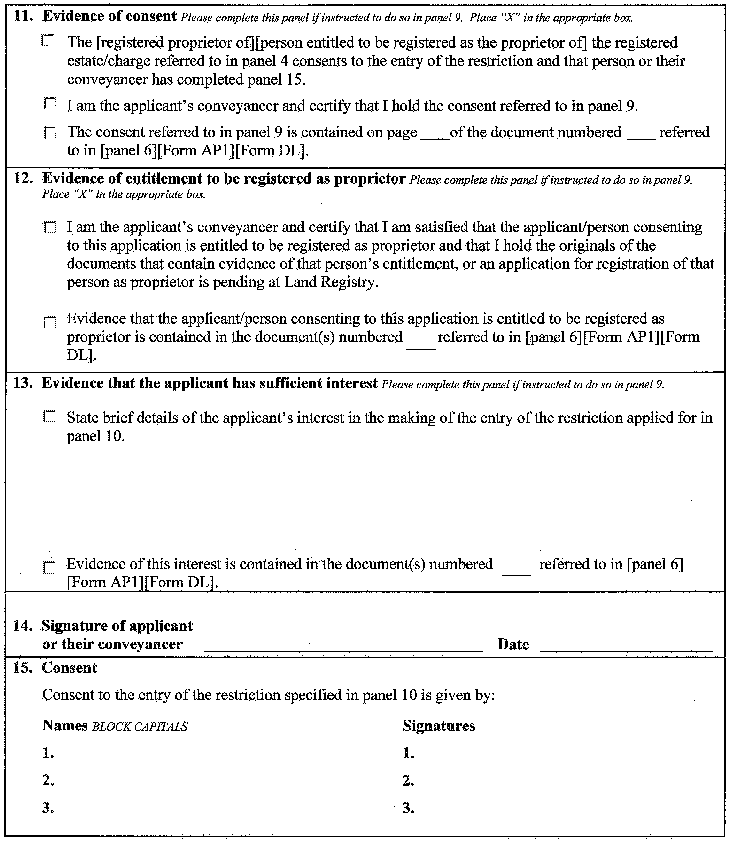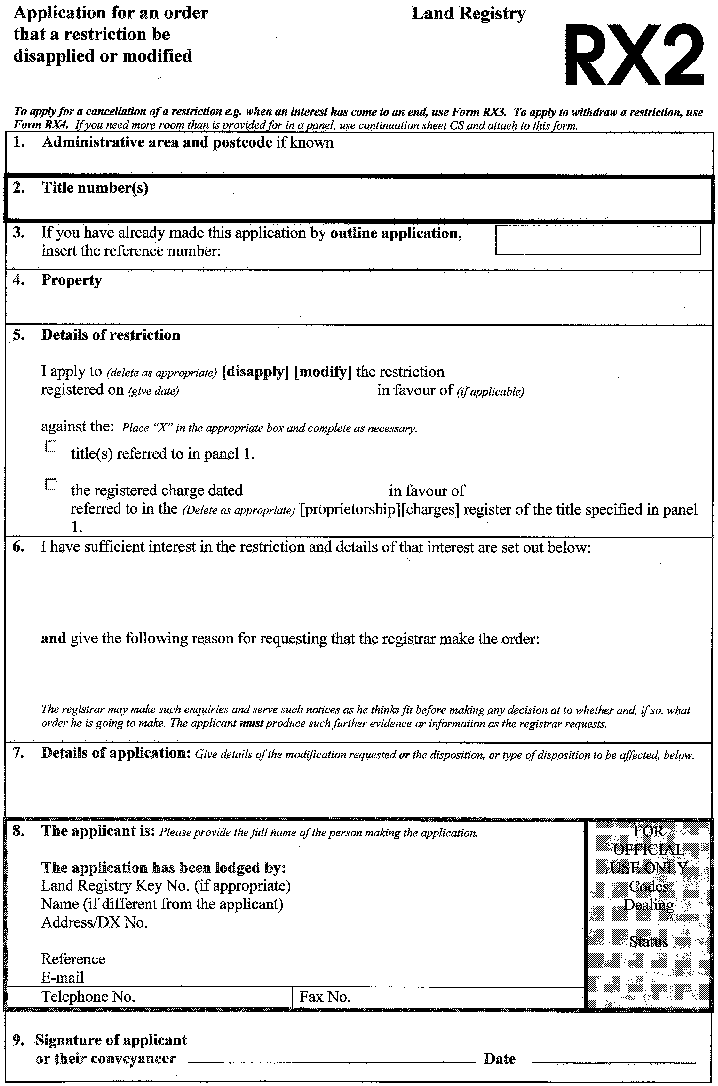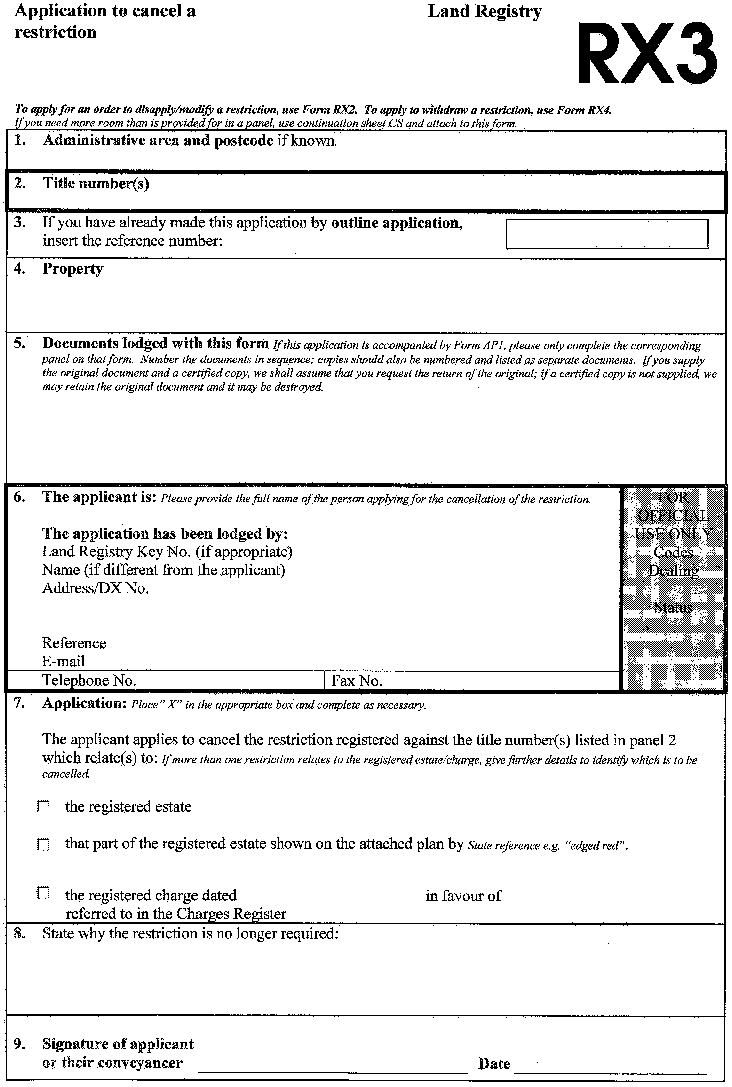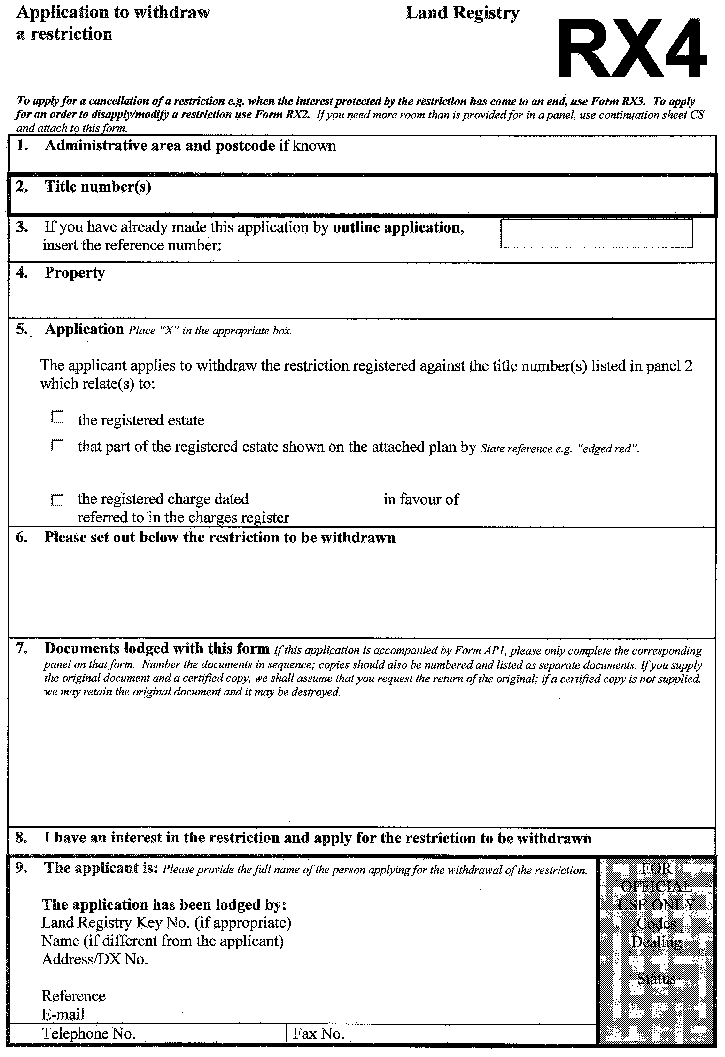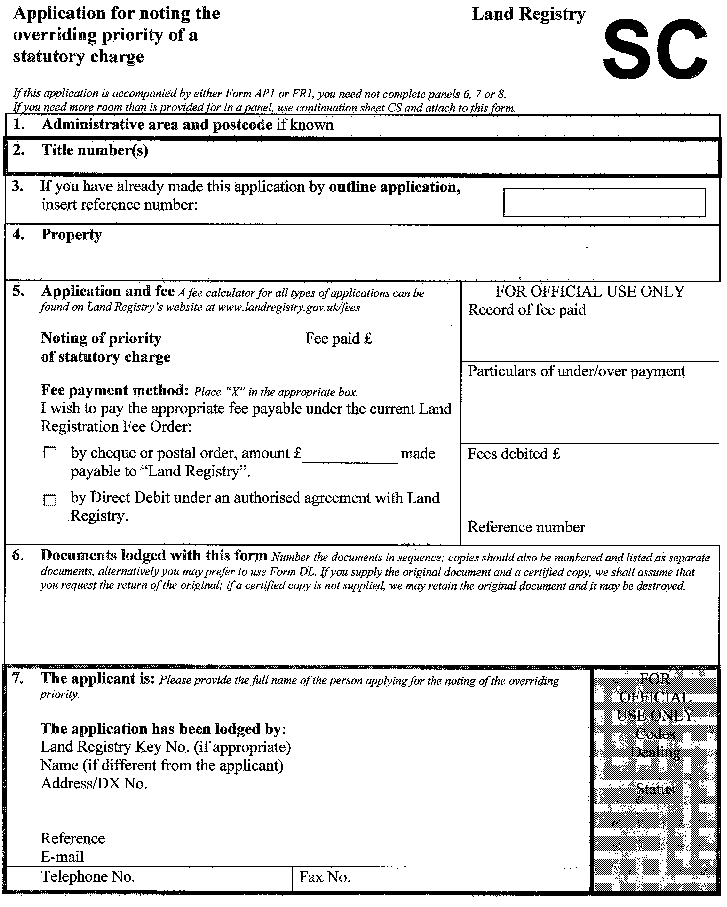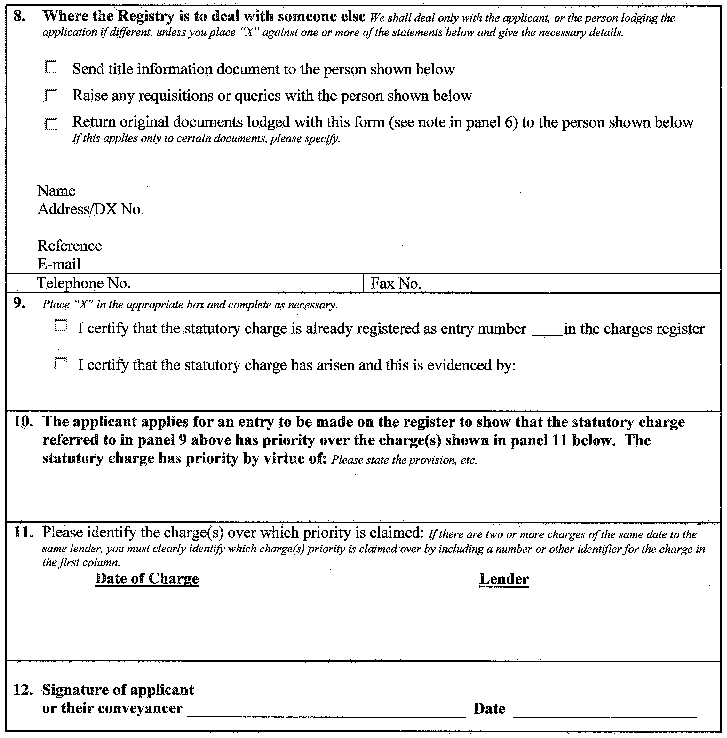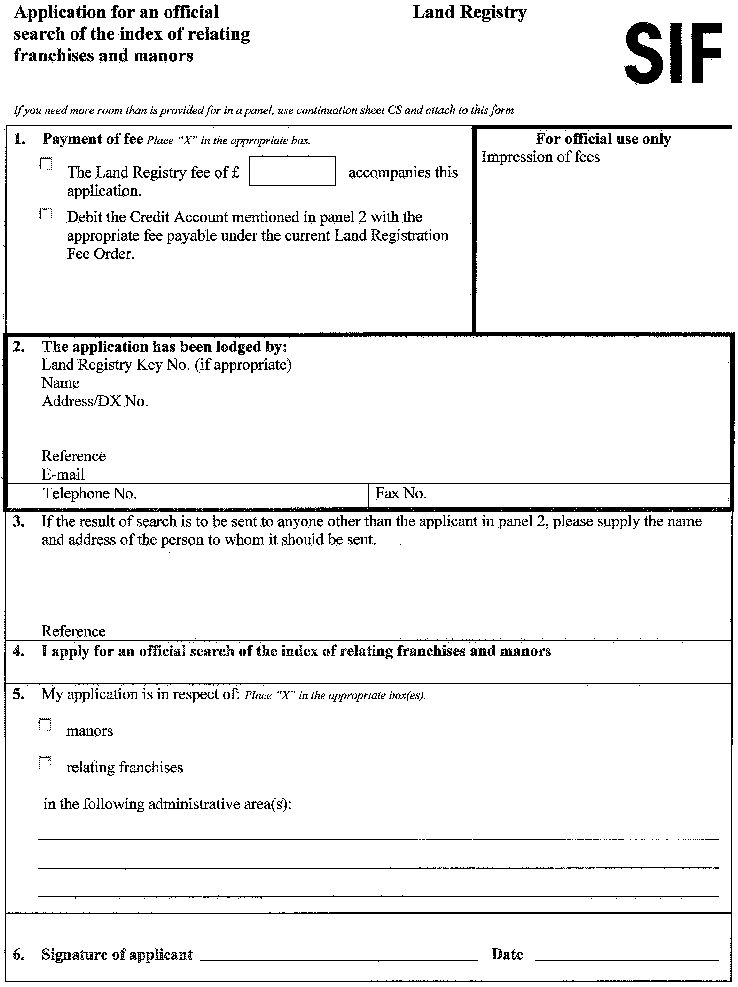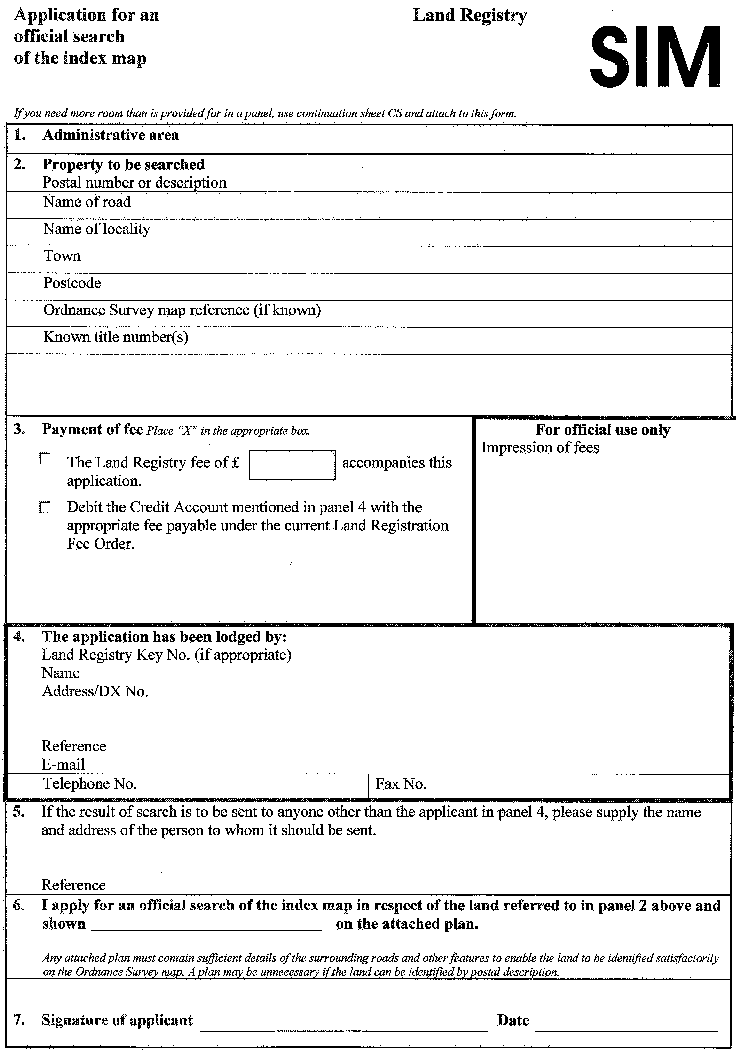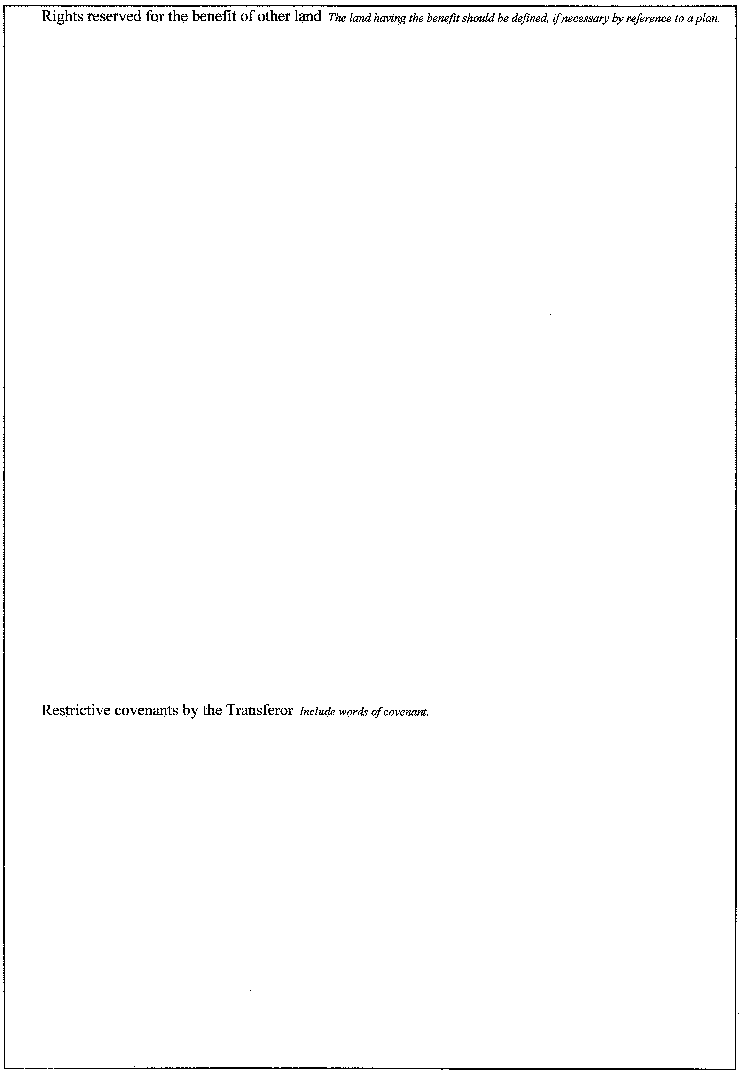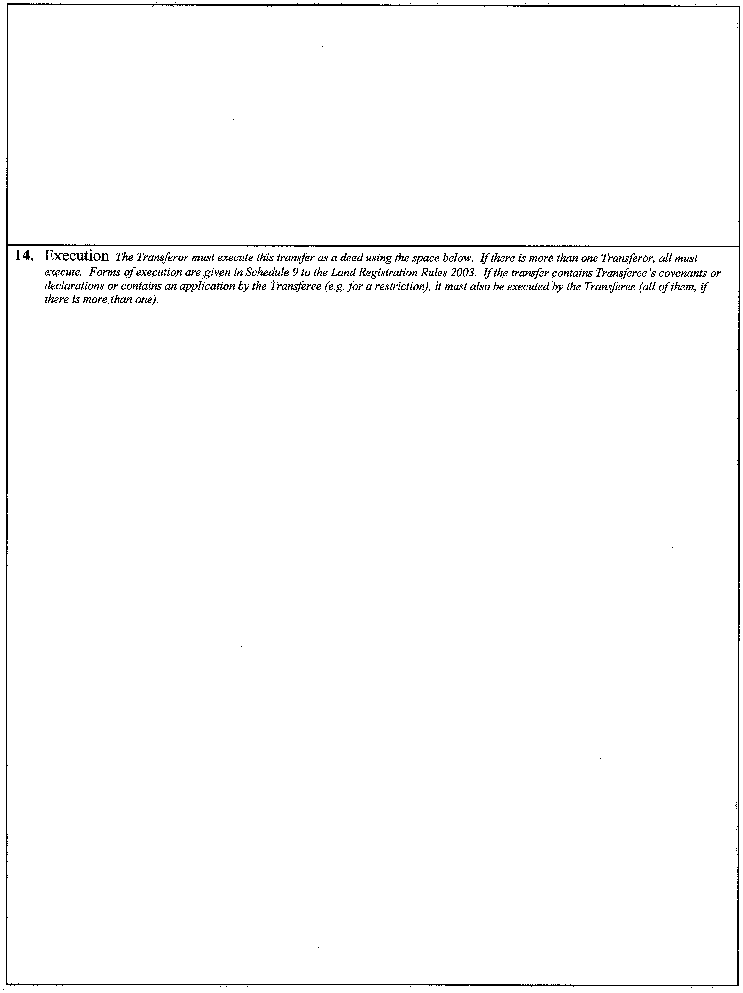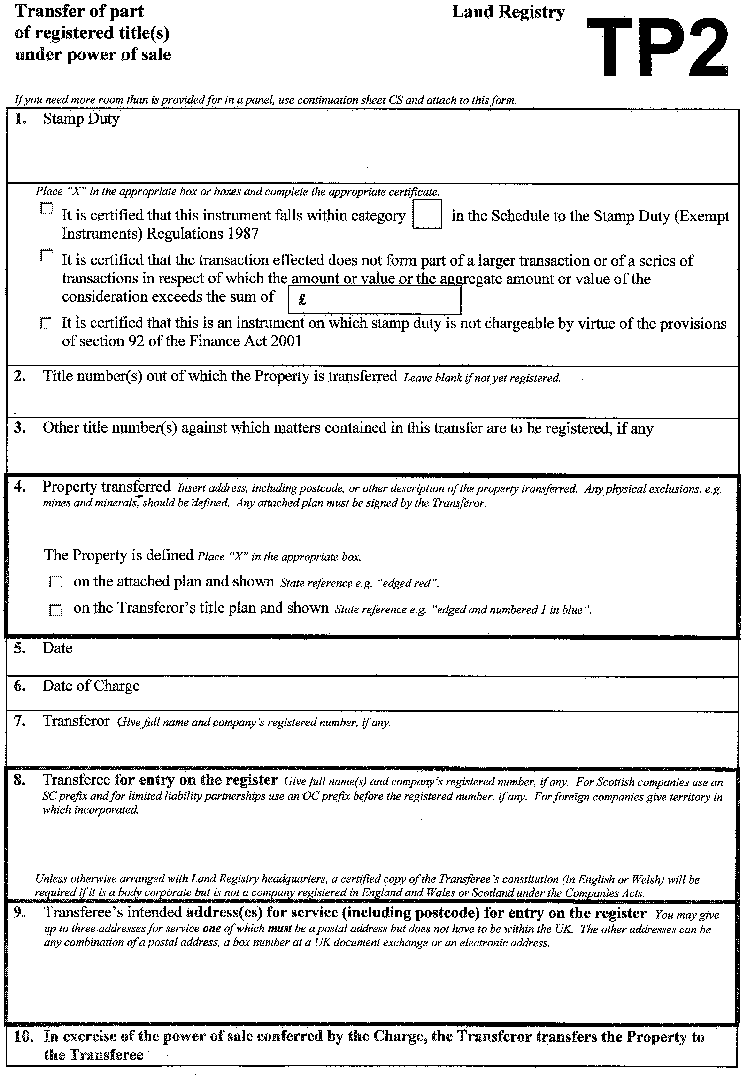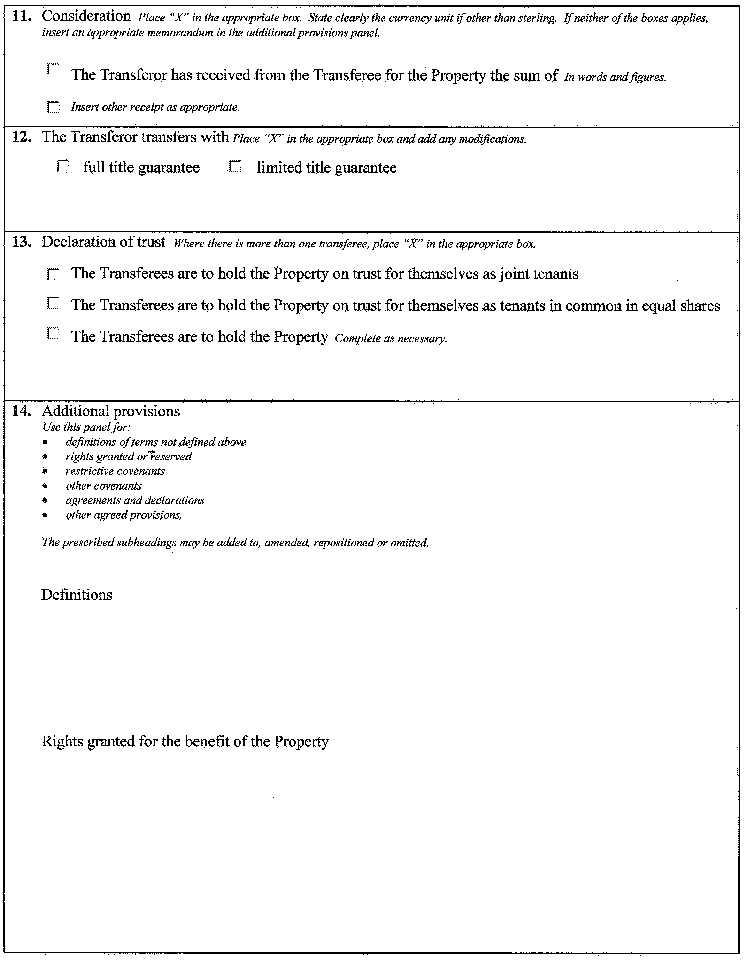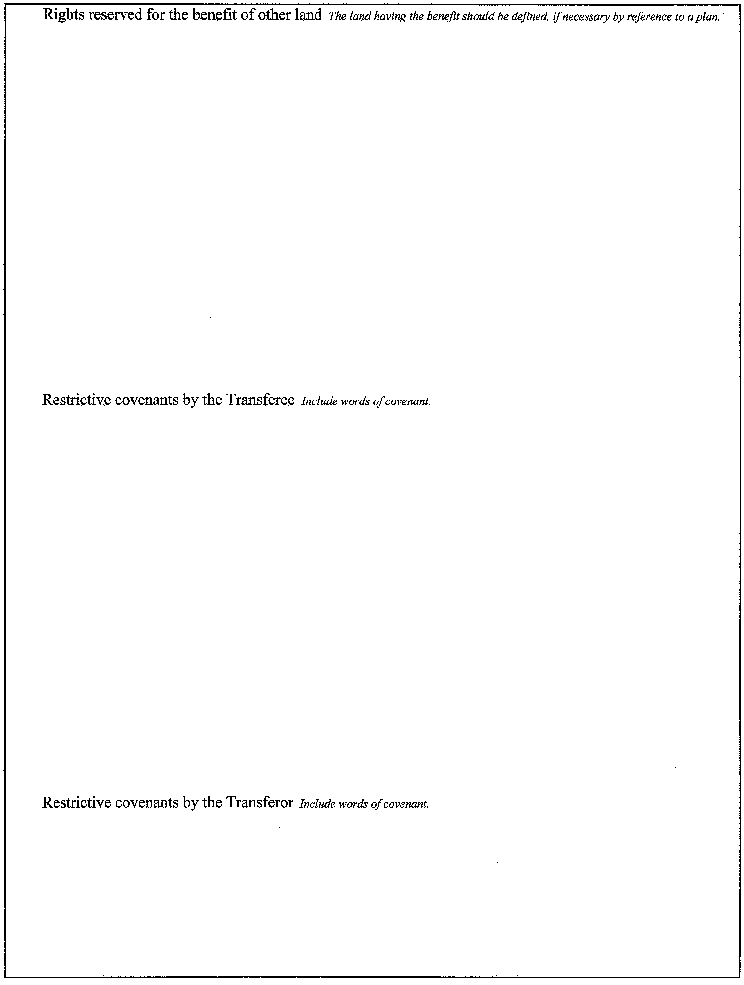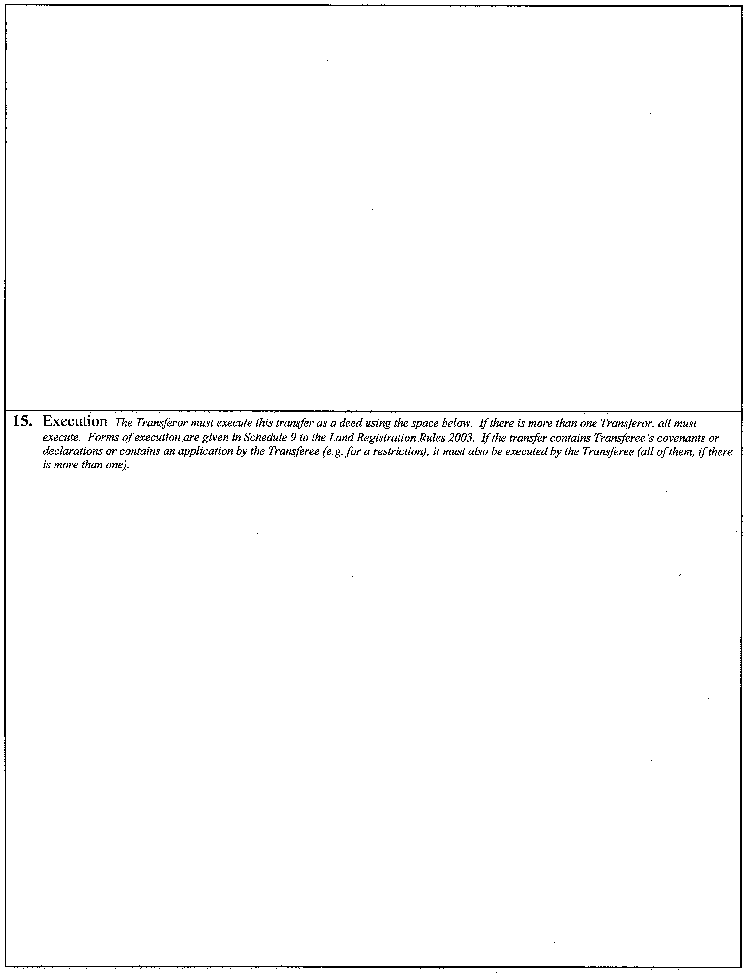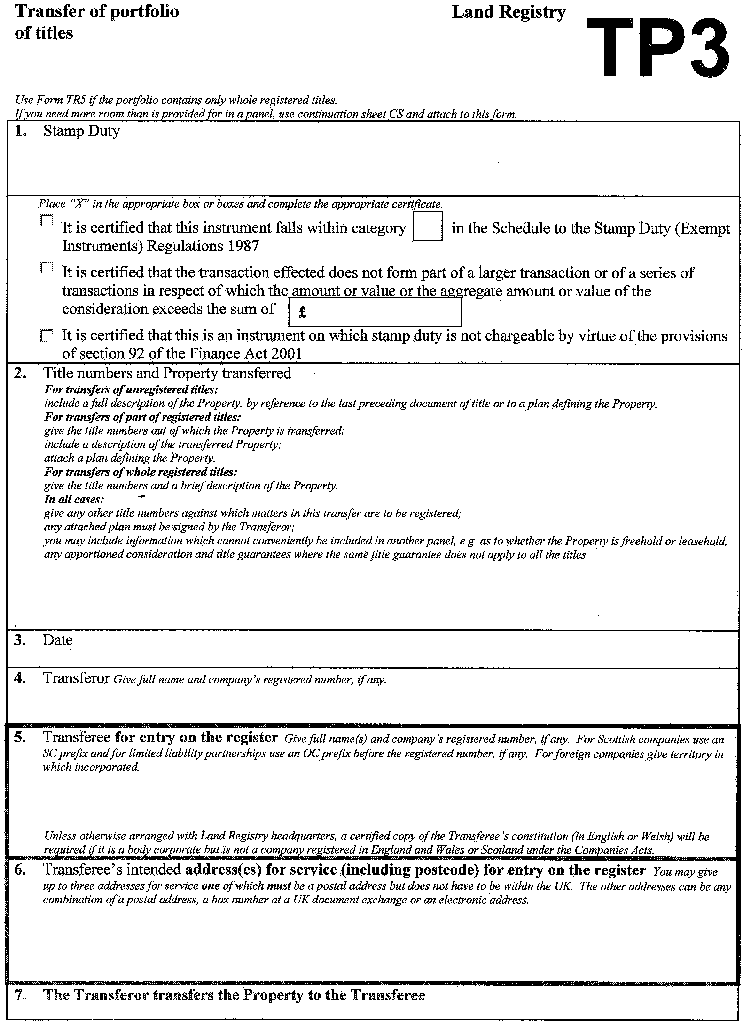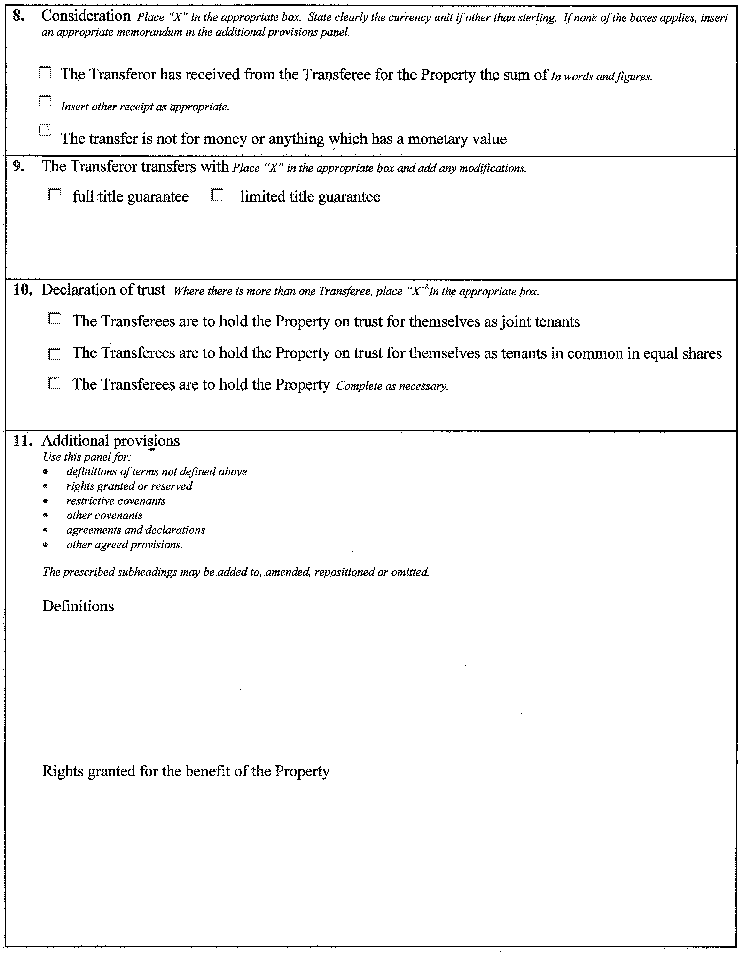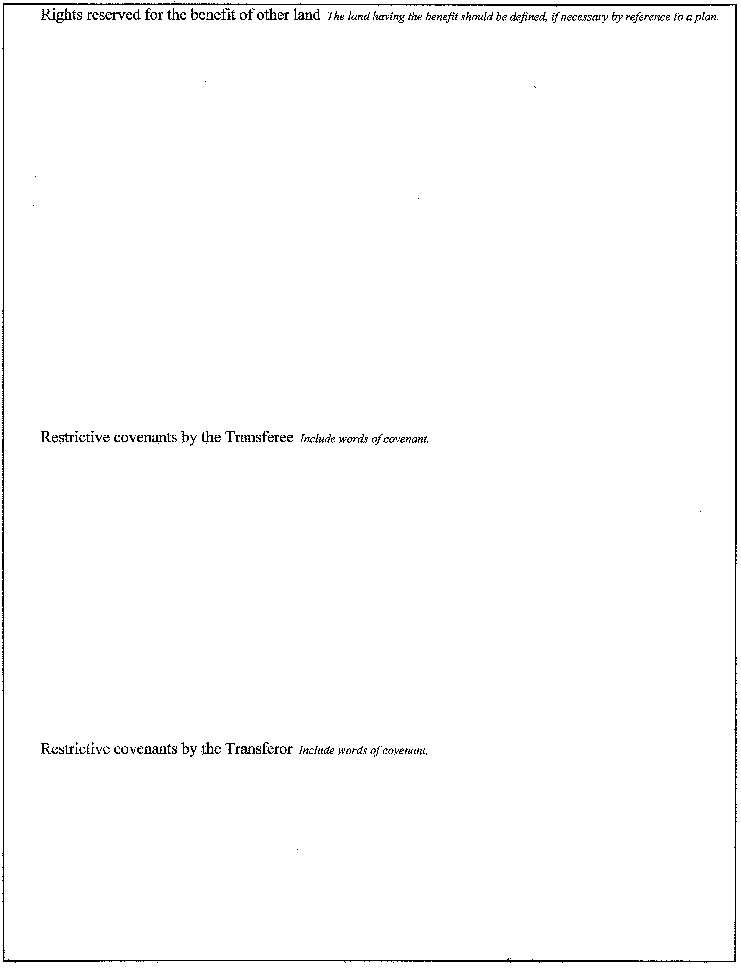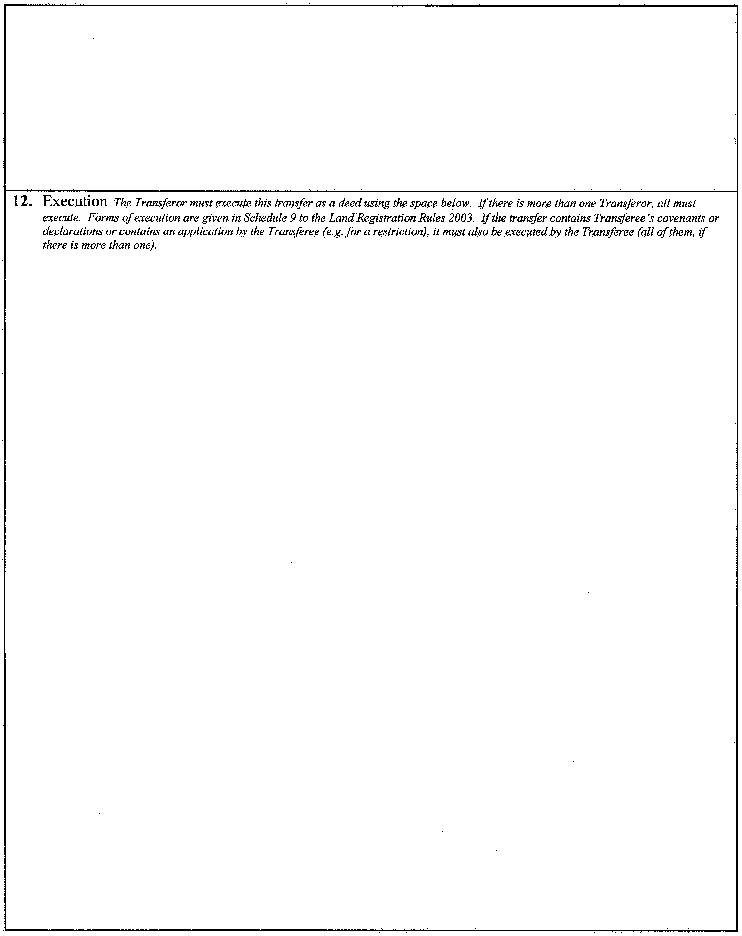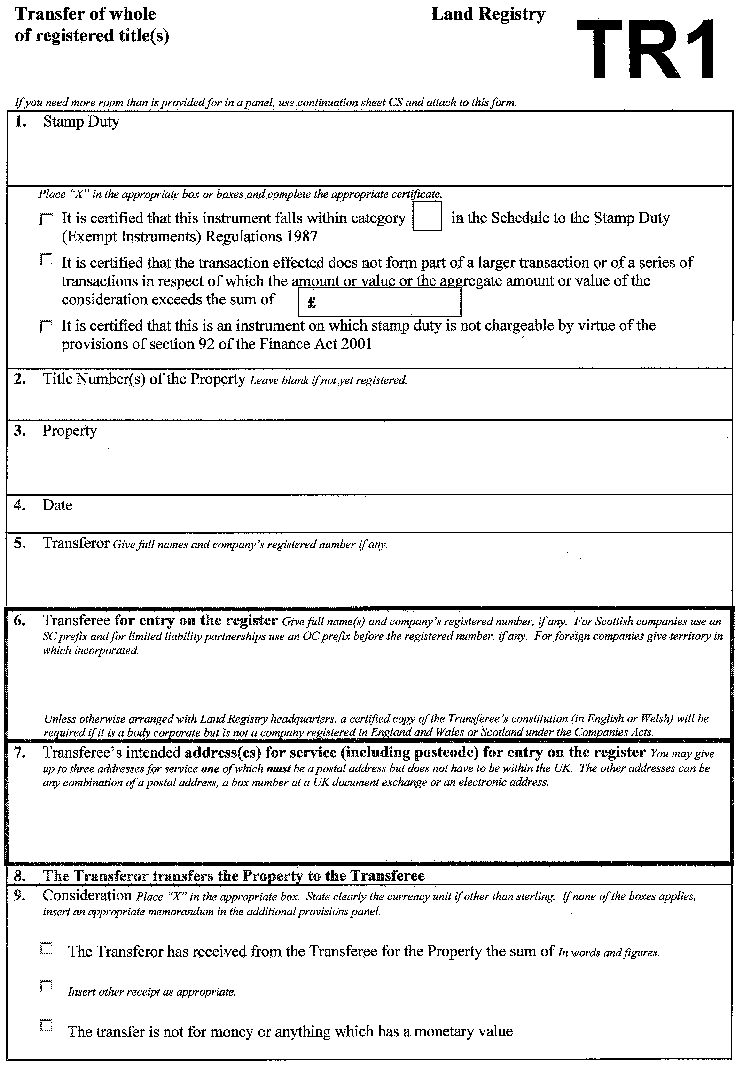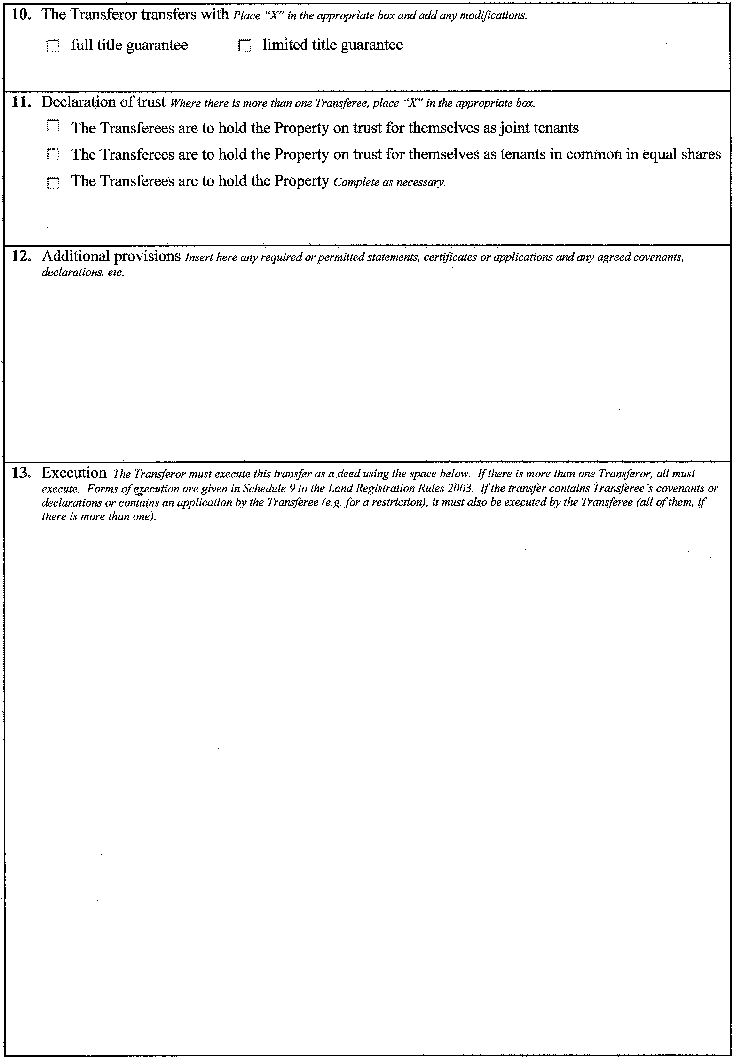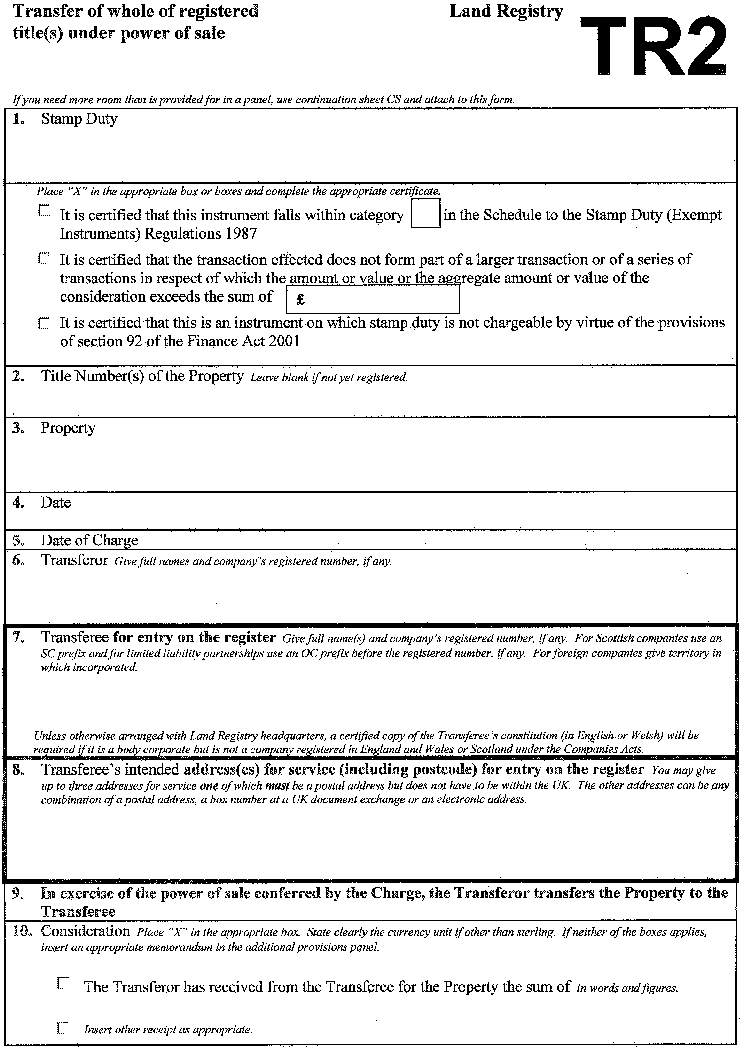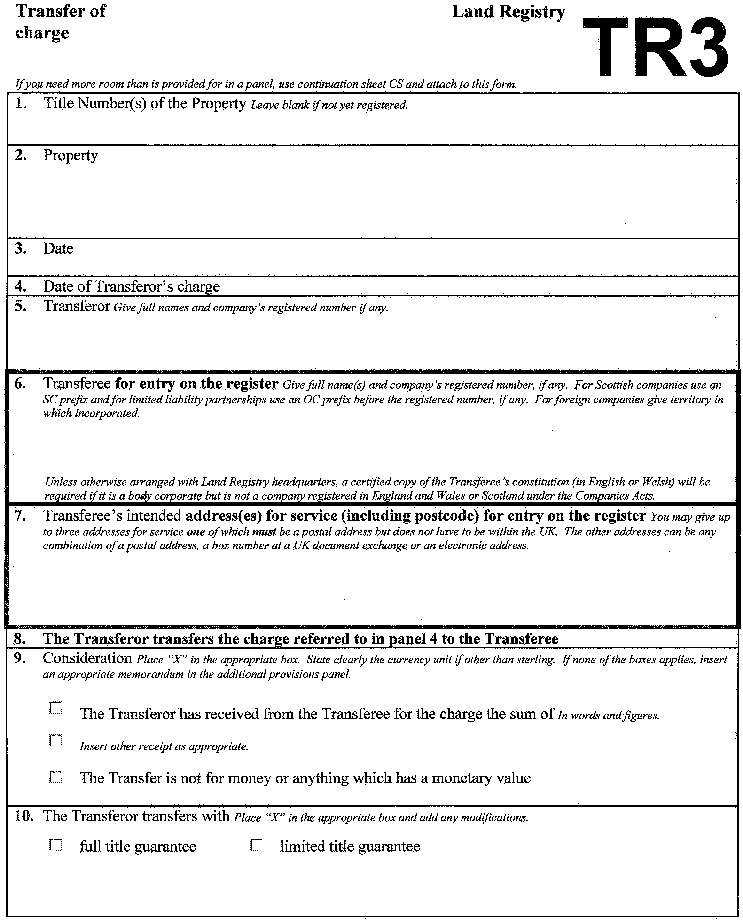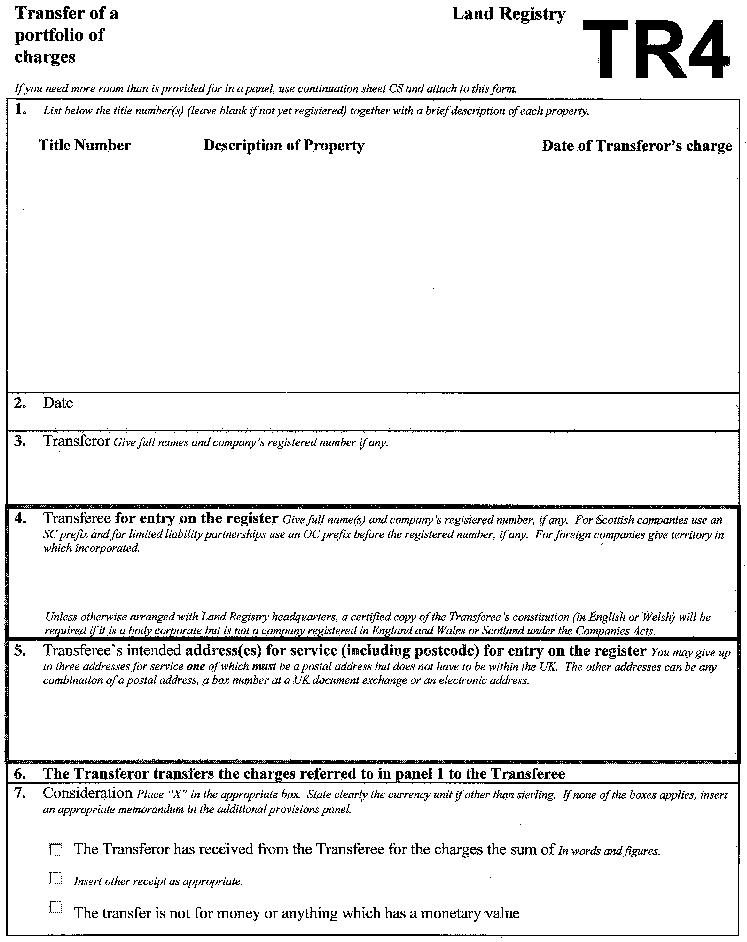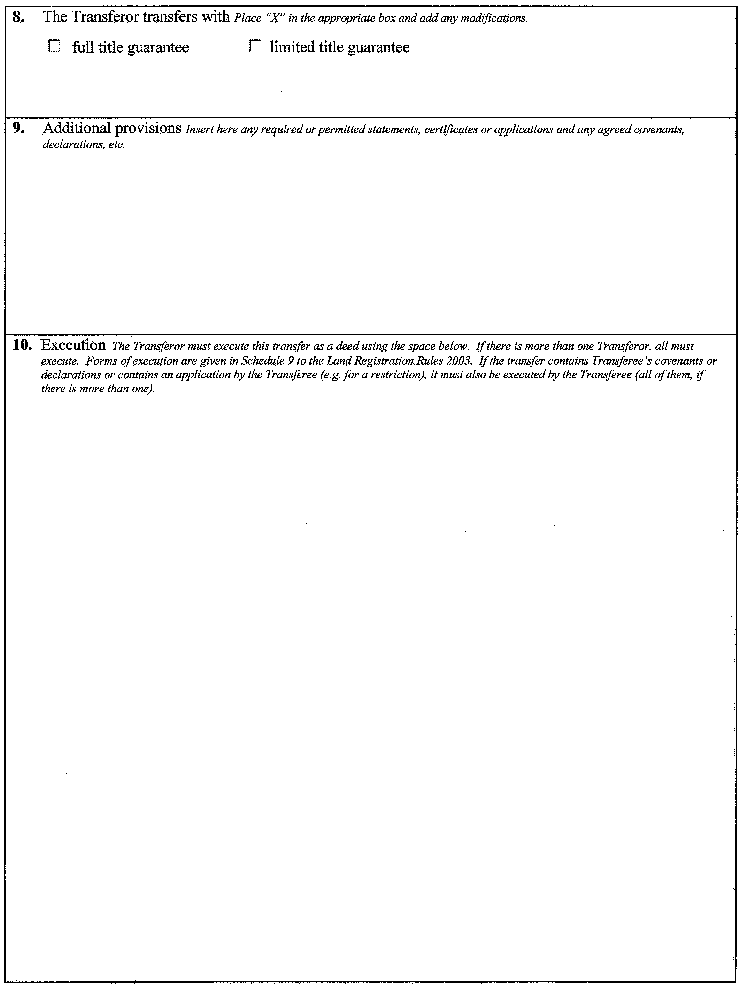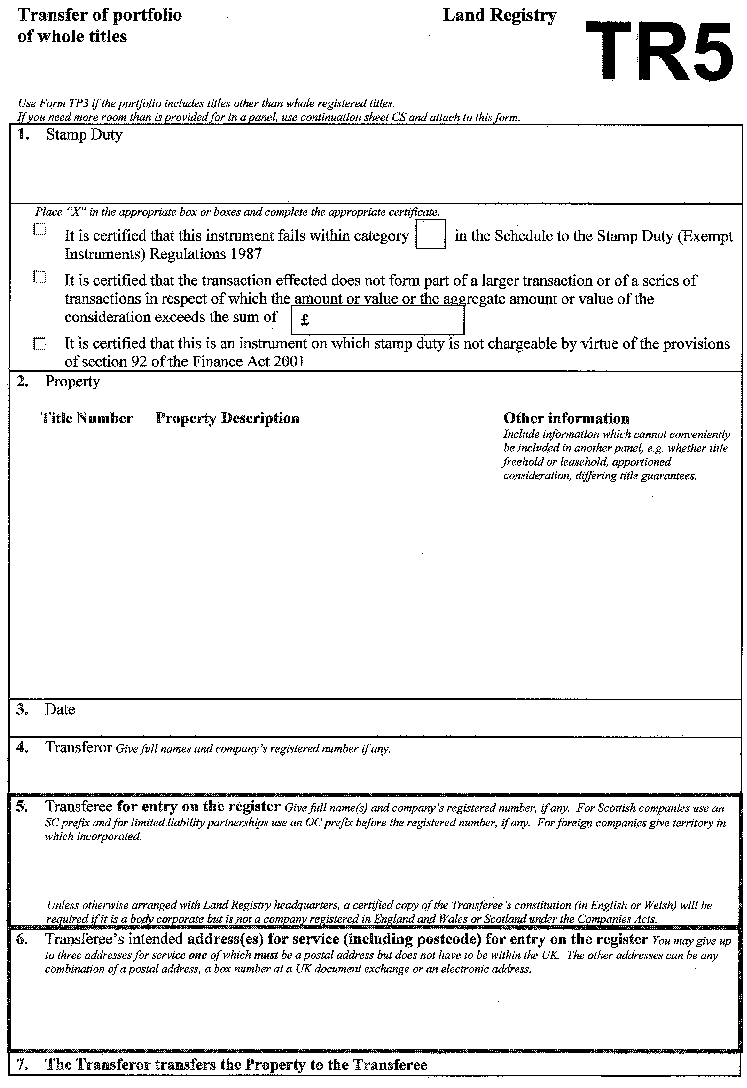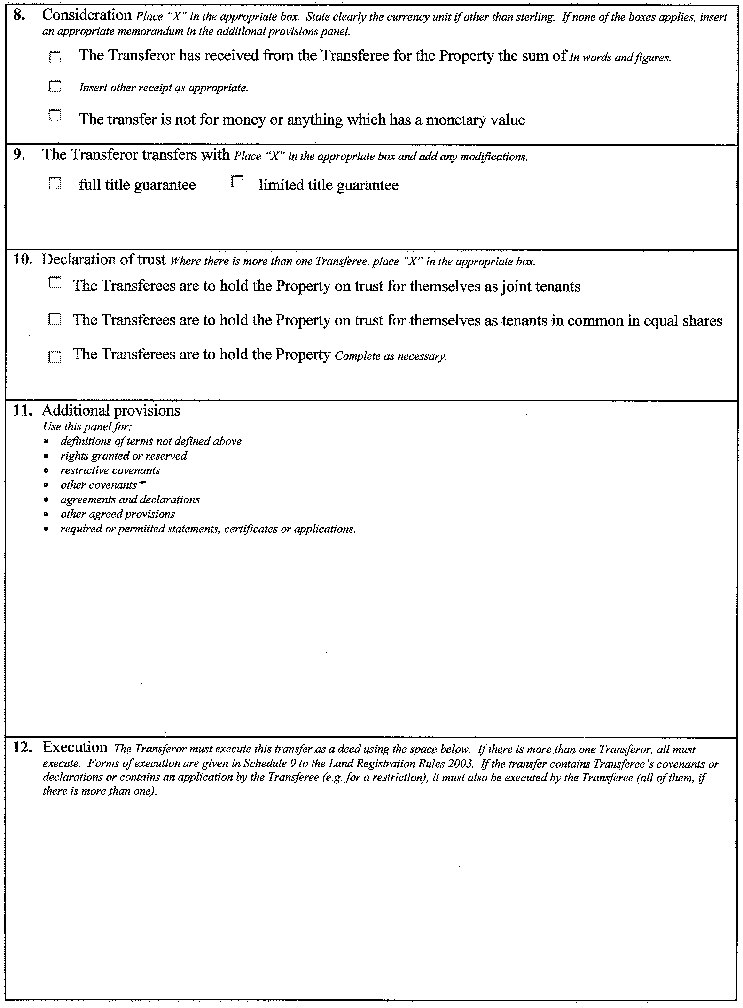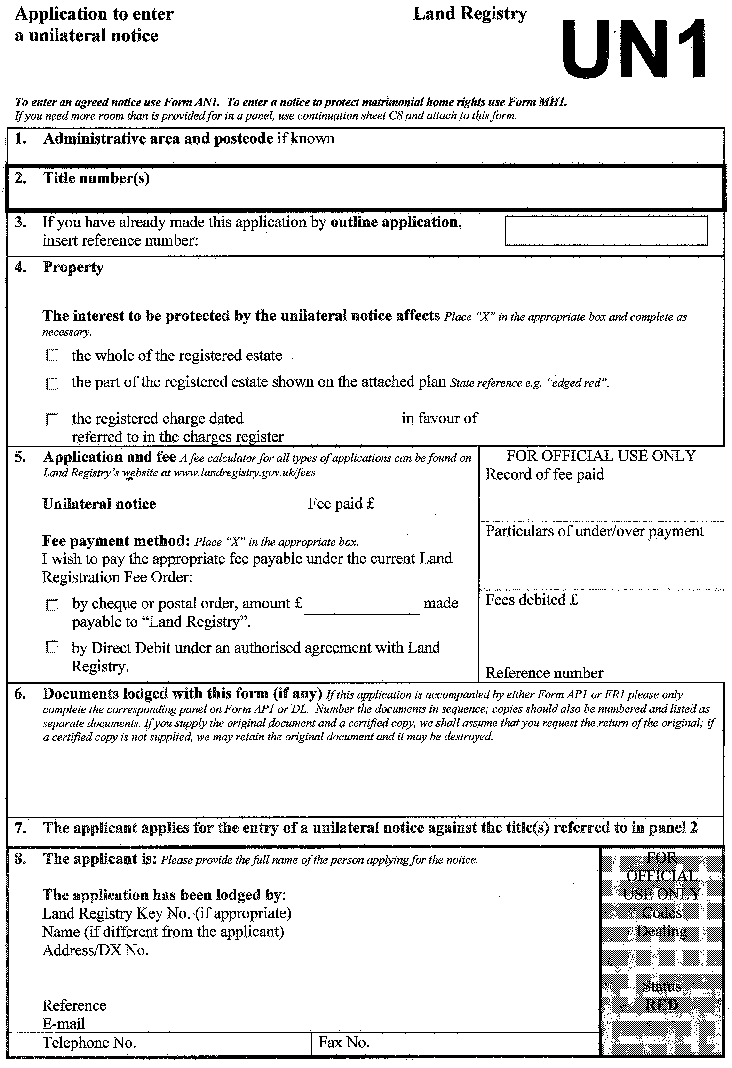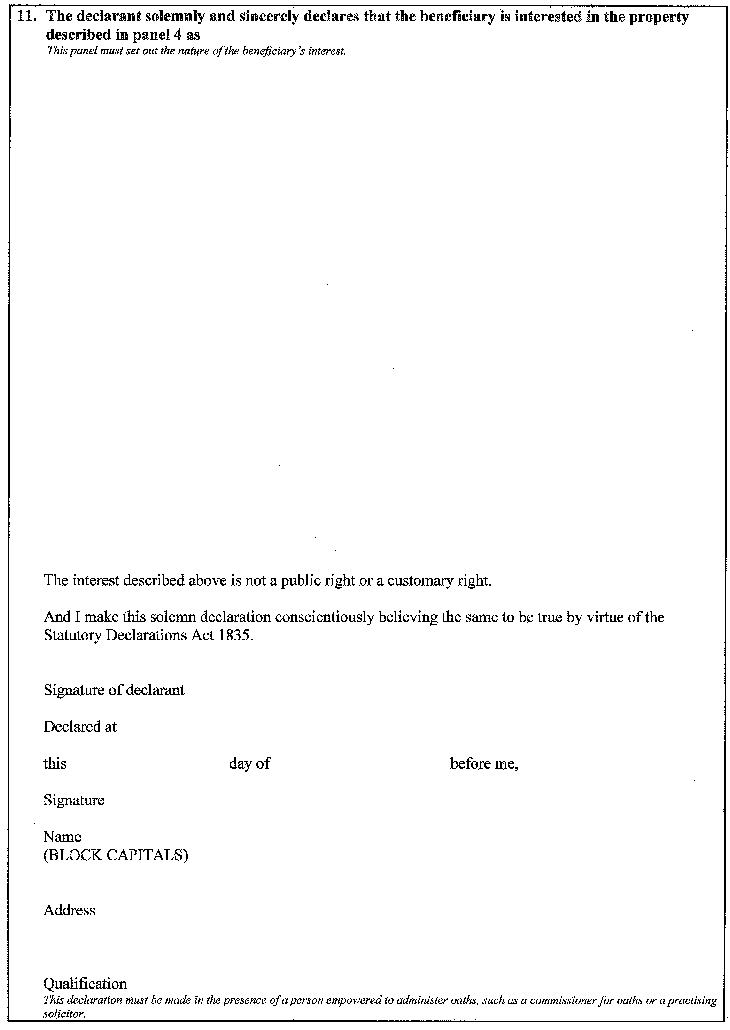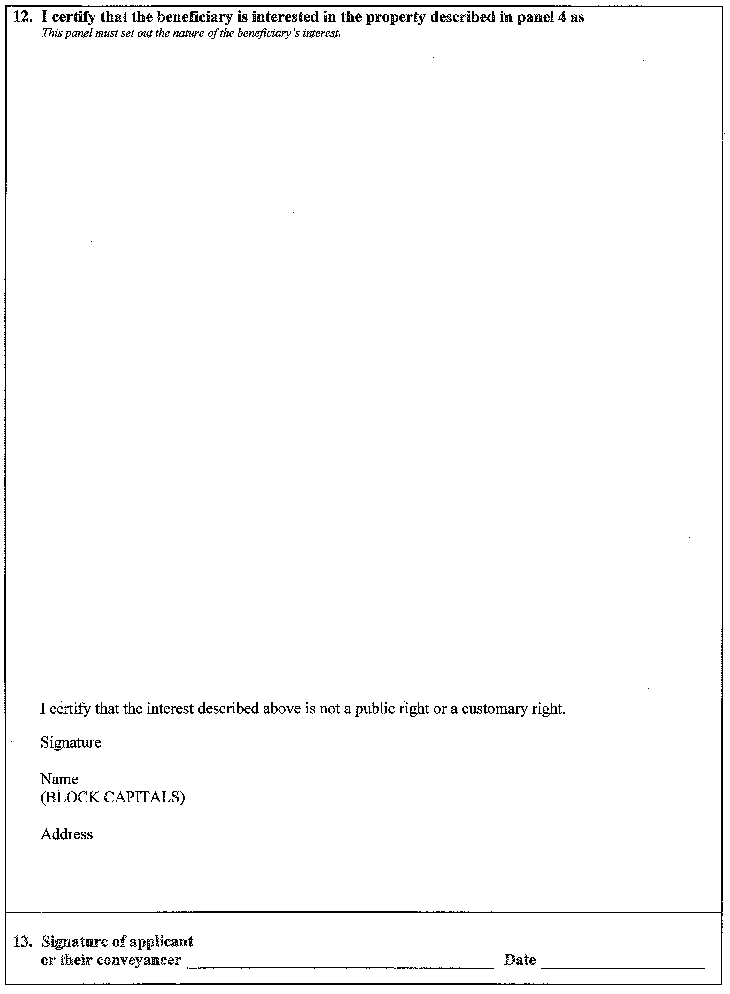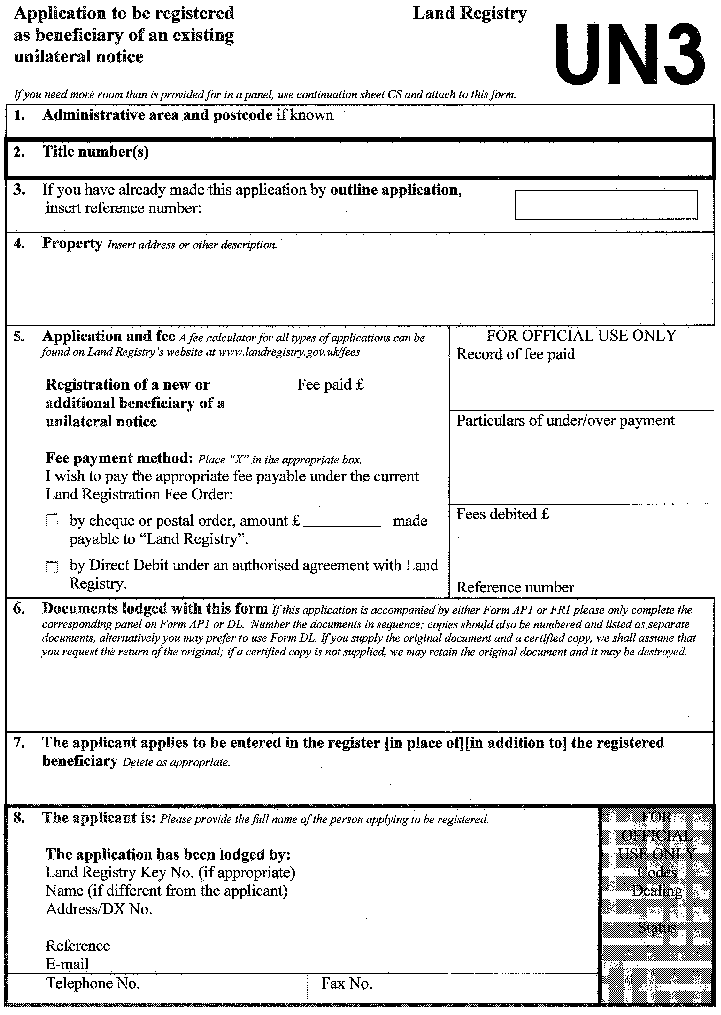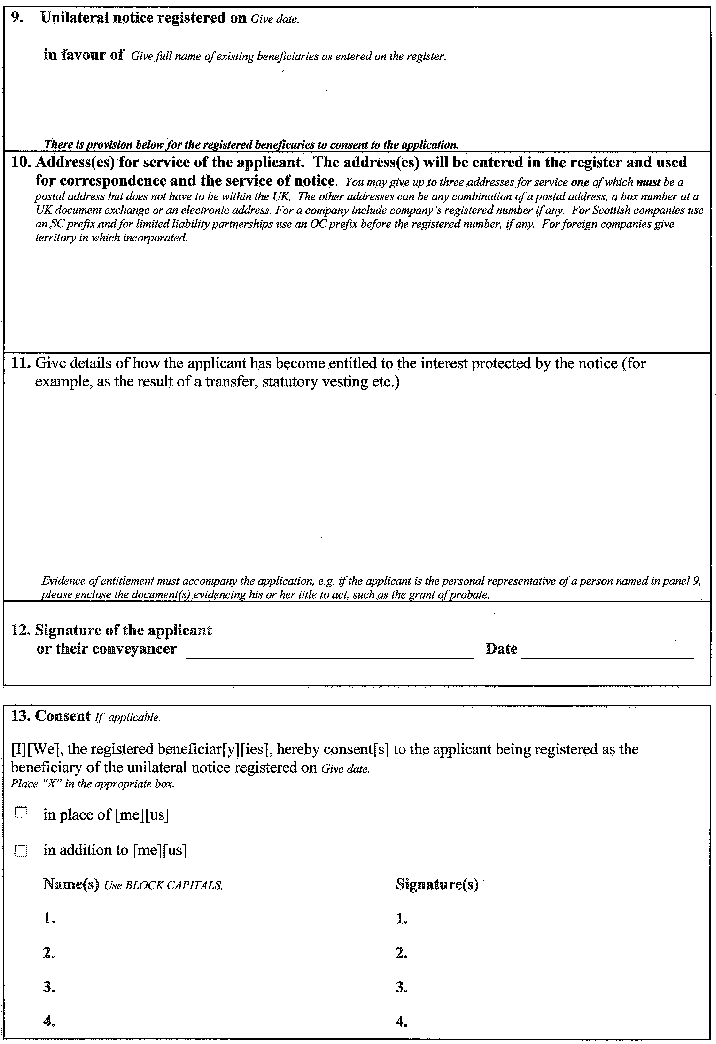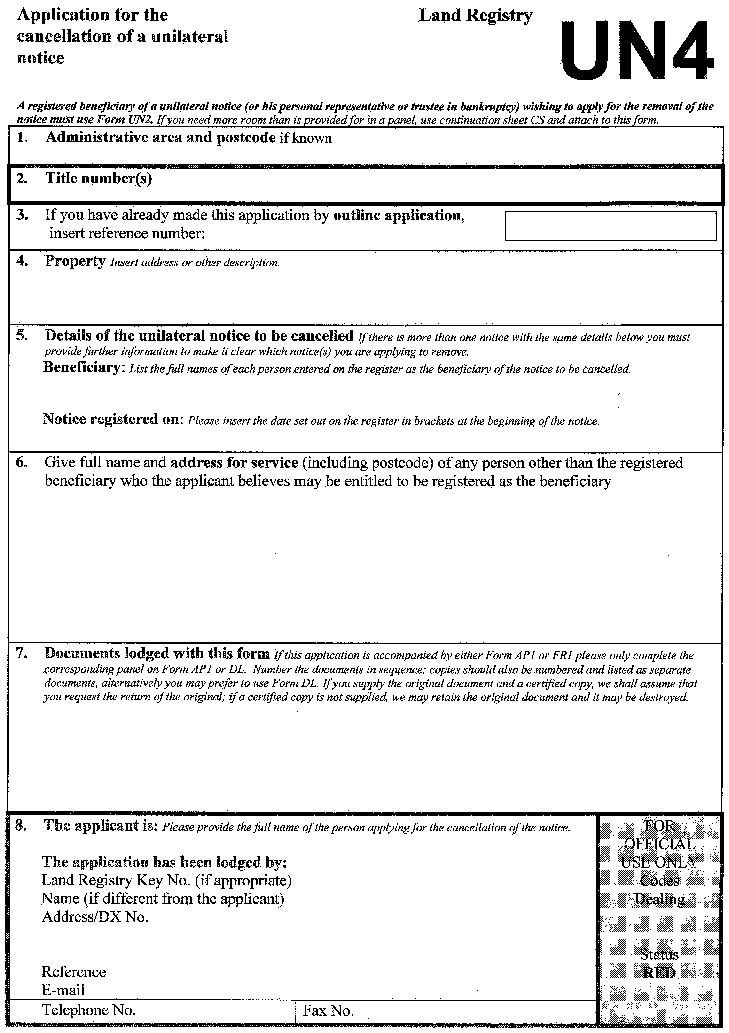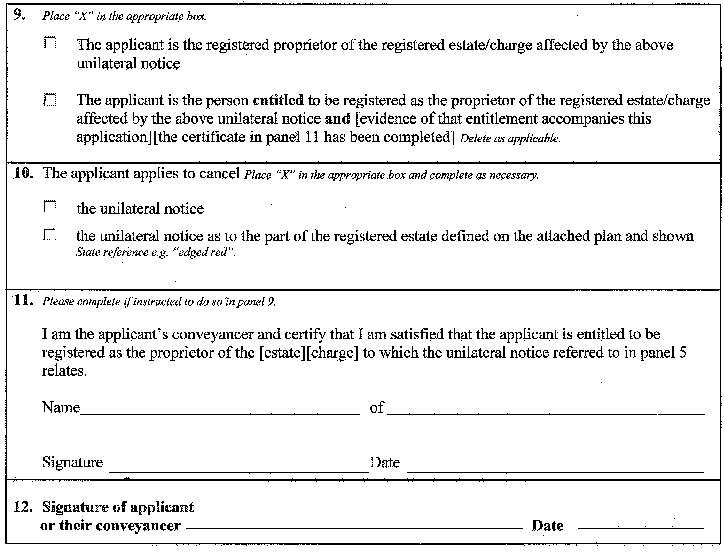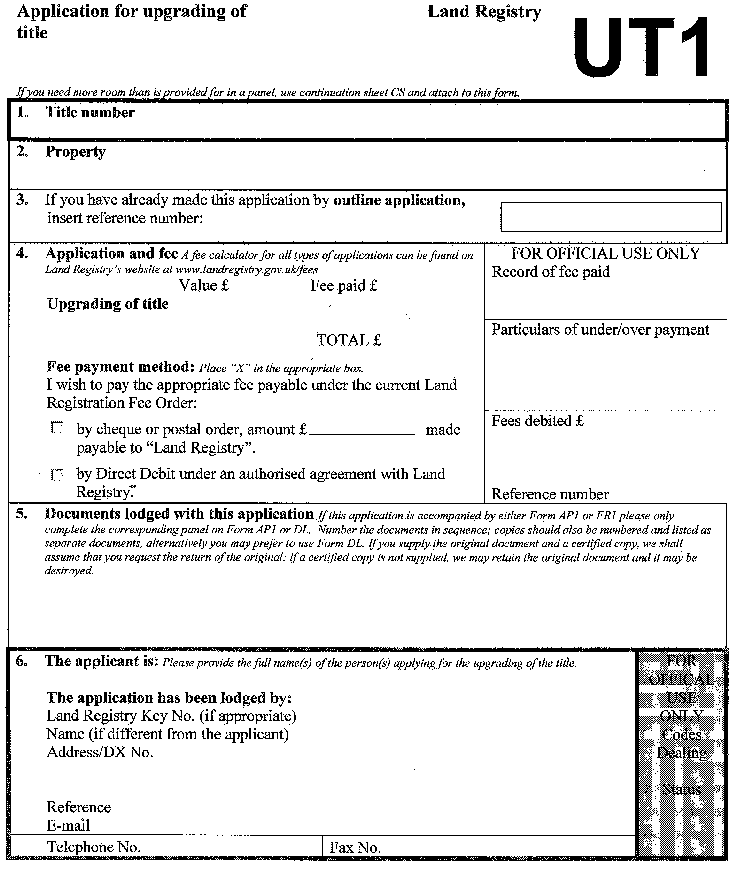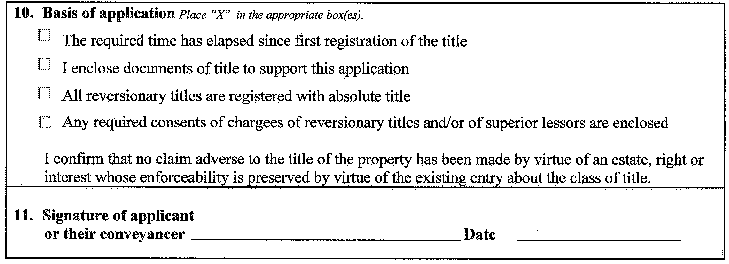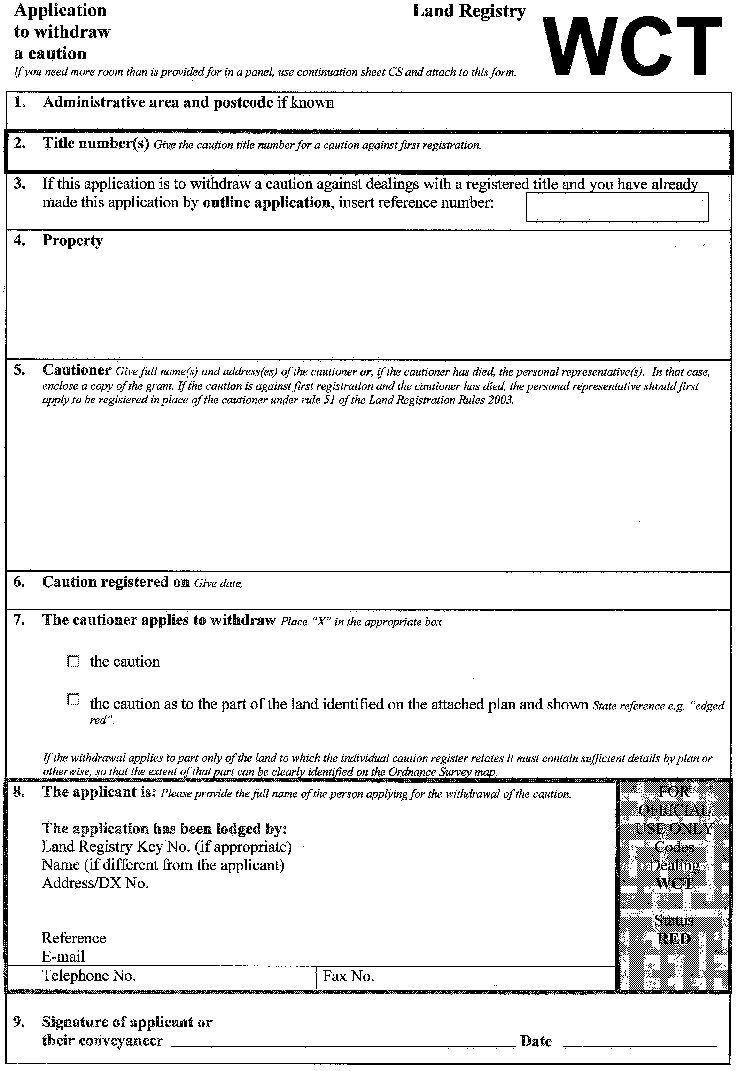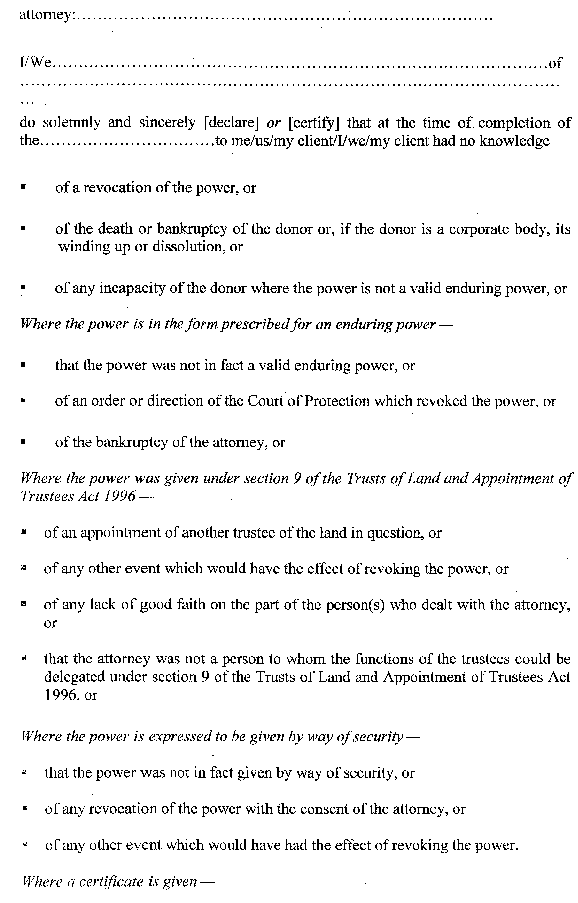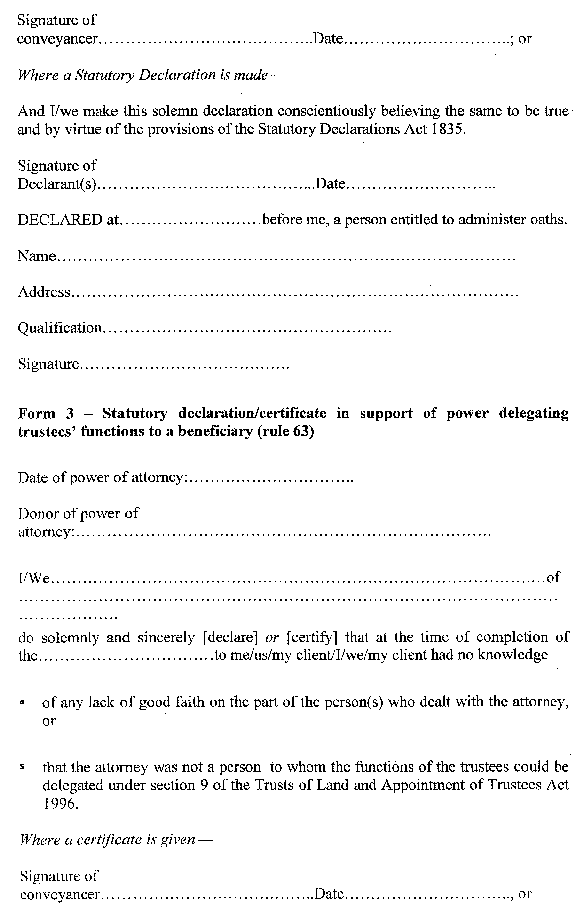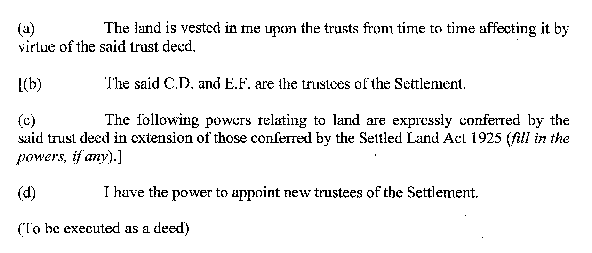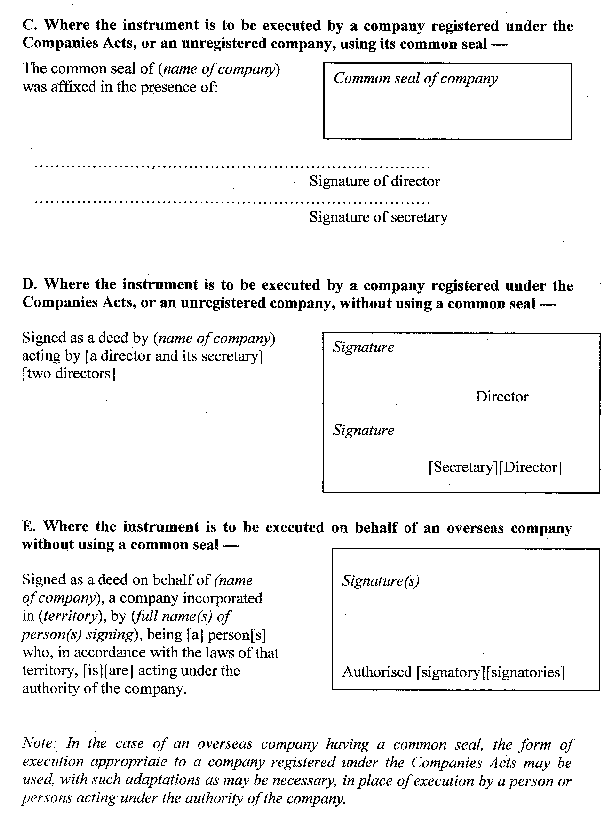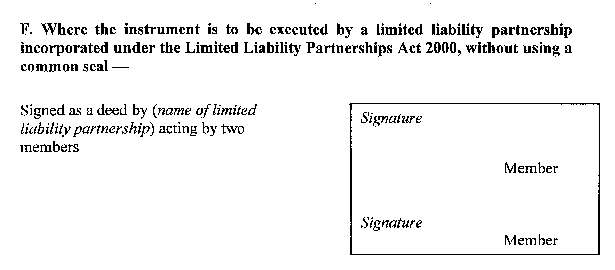rule 11
SCHEDULE 1SCHEDULE 1 FORMS REFERRED TO IN RULES 206, 207 AND 210
rule 14
SCHEDULE 2NOTICES PUBLICISING ARRANGEMENTS FOR ELECTRONIC AND OTHER MODES OF DELIVERY OF APPLICATIONS AND OTHER MATTERS
1. If the registrar is satisfied that adequate arrangements have been made or will be in place for dealing with the applications and other matters specified in paragraph 2 by means other than post, document exchange or personal delivery, he may, in such manner as he thinks appropriate, give notice publicising the arrangements.
2. The applications and other matters referred to in paragraph 1 are—
(a)an application by electronic means under rule 14,
(b)an outline application under rule 54,
(c)a notification of discharge or release of a registered charge under rule 115,
(d)an application and the result of an application or search under Part 13 to which rule 132 applies,
(e)information requested by an applicant for an official search for the purpose of the Family Law Act 1996() under rule 160,
(f)a request to the registrar that he require a person to produce documents under rule 201(2)(b),
(g)a request for an order requiring a party to proceedings before the registrar to pay costs under rule 202(5).
3. Subject to paragraphs 4, 5 and 6, a notice given under paragraph 1 will be current from the time specified in the notice until the time, if any, specified in the notice or if no expiry date is specified in the notice, indefinitely.
4. A notice given under paragraph 1 may from time to time be varied, suspended, withdrawn, renewed or replaced by a further notice.
5. If and so long as owing the breakdown or other unavailability of facilities or data involved in giving effect to the arrangements made for dealing with applications covered by a notice given under paragraph 1, such arrangements cease, in whole or in part, to be effective, the notice shall cease, to the necessary extent, to be treated as current.
6. Paragraph 5 will apply despite the absence of a variation, suspension or withdrawal of the notice under paragraph 4.
7. The provisions referred to in paragraph 2 will not prevent the registrar, at his discretion, from refusing to accept an application or request made, or to issue a result, under any of those provisions in an individual case.
rule 61
SCHEDULE 3SCHEDULE 3 FORMS REFERRED TO IN RULE 206
Rule 91
SCHEDULE 4STANDARD FORMS OF RESTRICTION
Form A (Restriction on dispositions by sole proprietor)
No disposition by a sole proprietor of the registered estate (except a trust corporation) under which capital money arises is to be registered unless authorised by an order of the court.
Form B (Dispositions by trustees—certificate required)
No disposition [or specify details] by the proprietors of the registered estate is to be registered unless they make a statutory declaration, or their conveyancer gives a certificate, that the disposition [or specify details] is in accordance with [specify the disposition creating the trust] or some variation thereof referred to in the declaration or certificate.
Form C (Dispositions by personal representatives—certificate required)
No disposition by [name], the [executor or administrator] of [name] deceased, other than a transfer as personal representative, is to be registered unless he makes a statutory declaration, or his conveyancer gives a certificate, that the disposition is in accordance with the terms [of the will of the deceased or the law relating to intestacy as varied by a deed dated specify details of deed or specify appropriate details] or [some variation or further variation] thereof referred to in the declaration or certificate, or is necessary for the purposes of administration.
Form D (Parsonage, church or churchyard land)
No disposition of the registered estate is to be registered unless made in accordance with [the Parsonages Measure 1938 (in the case of parsonage land) or the New Parishes Measure 1943 (in the case of church or churchyard land)] or some other Measure or authority.
Form E (Non-exempt charity—certificate required)
No disposition by the proprietor of the registered estate to which section 36 or section 38 of the Charities Act 1993 applies is to be registered unless the instrument contains a certificate complying with section 37(2) or section 39(2) of that Act as appropriate.
Form F (Land vested in official custodian on trust for non-exempt charity—authority required)
No disposition executed by the trustees of [charity] in the name and on behalf of the proprietor shall be registered unless the transaction is authorised by an order of the court or of the Charity Commissioners, as required by section 22(3) of the Charities Act 1993.
Form G (Tenant for life as registered proprietor of settled land, where there are trustees of the settlement)
No disposition is to be registered unless authorised by the Settled Land Act 1925, or by any extension of those statutory powers in the settlement, and no disposition under which capital money arises is to be registered unless the money is paid to (name) of (address) and (name) of (address), (the trustees of the settlement, who may be a sole trust corporation or, if individuals, must number at least two but not more than four) or into court.
Note—If applicable under the terms of the settlement, a further provision may be added that no transfer of the mansion house (shown on an attached plan or otherwise adequately described to enable it to be fully identified on the Ordnance Survey map or title plan) is to be registered without the consent of the named trustees or an order of the court.
Form H (Statutory owners as trustees of the settlement and registered proprietors of settled land)
No disposition is to be registered unless authorised by the Settled Land Act 1925, or by any extension of those statutory powers in the settlement, and, except where the sole proprietor is a trust corporation, no disposition under which capital money arises is to be registered unless the money is paid to at least two proprietors.
Note—This restriction does not apply where the statutory owners are not the trustees of the settlement.
Form I (Tenant for life as registered proprietor of settled land—no trustees of the settlement)
No disposition under which capital money arises, or which is not authorised by the Settled Land Act 1925 or by any extension of those statutory powers in the settlement, is to be registered.
Form J (Trustee in bankruptcy and beneficial interest—certificate required)
No disposition of the [registered estate or registered charge dated [date]] is to be registered without a certificate signed by the applicant for registration or his conveyancer that written notice of the disposition was given to [name of trustee in bankruptcy] (the trustee in bankruptcy of [name of bankrupt person]) at [address for service].
Form K (Charging order affecting beneficial interest—certificate required)
No disposition of the [registered estate or registered charge dated [date]] is to be registered without a certificate signed by the applicant for registration or his conveyancer that written notice of the disposition was given to [name of person with the benefit of the charging order] at [address for service], being the person with the benefit of [an interim] [a final] charging order on the beneficial interest of (name of judgment debtor) made by the (name of court) on (date) (Court reference ... ... ... ...).
Form L (Disposition by registered proprietor of a registered estate or proprietor of charge—certificate required)
No disposition [or specify details] of the registered estate [(other than a charge)] by the proprietor of the registered estate [, or by the proprietor of any registered charge,] is to be registered without a certificate
[signed by [name] of [address] (or [his conveyancer] or specify appropriate details)]
or
[signed on behalf of [name] of [address] by [its secretary or conveyancer or specify appropriate details]]
that the provisions of [specify clause, paragraph or other particulars] of [specify details] have been complied with.
Form M (Disposition by registered proprietor of registered estate or proprietor of charge—certificate of registered proprietor of specified title number required)
No disposition [or specify details] of the registered estate [(other than a charge)] by the proprietor of the registered estate [or by the proprietor of any registered charge] is to be registered without a certificate signed by the proprietor for the time being of the estate registered under title number [title number] [(or his conveyancer or specify appropriate details)] or, if appropriate, signed on such proprietor’s behalf by [its secretary or conveyancer or specify appropriate details], that the provisions of [specify clause, paragraph or other particulars] of [specify details] have been complied with.
Form N (Disposition by registered proprietor of registered estate or proprietor of charge—consent required)
No disposition [or specify details] of the registered estate [(other than a charge)] by the proprietor of the registered estate [or by the proprietor of any registered charge] is to be registered without a written consent
[signed by [name] of [address] (or [his conveyancer] or specify appropriate details)]
or
[signed on behalf of [name] of [address] by [its secretary or conveyancer or specify appropriate details]].
Form O (Disposition by registered proprietor of registered estate or proprietor of charge—consent of registered proprietor of specified title number required)
No disposition [or specify details] of the registered estate [(other than a charge)] by the proprietor of the registered estate [or by the proprietor of any registered charge] is to be registered without a written consent signed by the proprietor for the time being of the estate registered under title number [title number], [(or his conveyancer, or specify appropriate details)] or, if appropriate, signed on such proprietor’s behalf by [its secretary or conveyancer or specify appropriate details].
Form P (Disposition by registered proprietor of registered estate or proprietor of charge—consent of proprietor of specified charge required)
No disposition [or specify details] of the registered estate [(other than a charge)] by the proprietor of the registered estate [or by the proprietor of any registered charge] is to be registered without a written consent signed by the proprietor for the time being of the charge dated [date] in favour of [chargee] referred to in the charges register [(or his conveyancer or specify appropriate details)] or, if appropriate, signed on such proprietor’s behalf by [its secretary or conveyancer or specify appropriate details].
Form Q (Disposition by registered proprietor of registered estate or proprietor of charge—consent of personal representative required)
No disposition [or specify details] of [the registered estate or the registered charge dated [date] (referred to above)] by the proprietor [of the registered estate or of that registered charge] is to be registered after the death of [name of the current proprietor(s) whose personal representative’s consent will be required] without the written consent of the personal representatives of the deceased.
Form R (Disposition by registered proprietor of registered estate or proprietor of charge—evidence of compliance with club rules required)
No disposition [or specify details] of the registered estate [(other than a charge)] by the proprietor of the registered estate [or by the proprietor of any registered charge] is to be registered unless authorised by the rules of the [name of club] of [address] as evidenced [by a resolution of its members or by a certificate signed by its secretary or conveyancer [or specify appropriate details]].
Form S (Disposition by proprietor of charge—certificate of compliance required)
No disposition [or specify details] by the proprietor of the registered charge dated [date] (referred to above) is to be registered without a certificate
[signed by [name] of [address] (or [his conveyancer] or specify appropriate details)]
or
[signed on behalf of [name] of [address] by [its secretary or conveyancer or specify appropriate details],
that the provisions of [specify clause, paragraph or other particulars] of [specify details] have been complied with.
Form T (Disposition by proprietor of charge—consent required)
No disposition [or specify details] by the proprietor of the registered charge dated [date] (referred to above) is to be registered without a written consent
[signed by [name] of [address] (or [his conveyancer] or specify appropriate details)]
or
[signed on behalf of [name] of [address] by [its secretary or conveyancer or specify appropriate details].
Form U (Section 37 of the Housing Act 1985)
No transfer or lease by the proprietor of the registered estate or by the proprietor of any registered charge is to be registered unless a certificate by [specify relevant local authority] is given that the transfer or lease is made in accordance with section 37 of the Housing Act 1985.
Form V (Section 157 of the Housing Act 1985)
No transfer or lease by the proprietor of the registered estate or by the proprietor of any registered charge is to be registered unless a certificate by [specify relevant local authority or housing association etc] is given that the transfer or lease is made in accordance with section 157 of the Housing Act 1985.
Form W (Paragraph 4 of Schedule 9A to the Housing Act 1985)
No disposition (except a transfer) of a qualifying dwellinghouse (except to a qualifying person or persons) is to be registered without the consent of the Secretary of State given under section 171D(2) of the Housing Act 1985 as it applies by virtue of the Housing (Preservation of Right to Buy) Regulations 1993.
Form X (Section 81 or 133 of the Housing Act 1988 or section 173 of the Local Government and Housing Act 1989)
No disposition by the proprietor of the registered estate or in exercise of the power of sale or leasing in any registered charge (except an exempt disposal as defined by section 81(8) of the Housing Act 1988) is to be registered without the consent of the Secretary of State to that disposition under the provisions of (as appropriate [section 81 of that Act] or [section 133 of that Act] or [section 173 of the Local Government and Housing Act 1989]).
Form Y (Section 13 of the Housing Act 1996)
No transfer or lease by the proprietor of the registered estate or by the proprietor of any registered charge is to be registered unless a certificate by [specify relevant registered social landlord] is given that the transfer or lease is made in accordance with section 13 of the Housing Act 1996.
Form AA (freezing order on the registered estate)
Under an order of the (name of court) made on (date) (claim no) no disposition by the proprietor of the registered estate is to be registered except under a further order of the Court.
Form BB (freezing order on charge)
Under an order of the (name of court) made on (date) (claim no) no disposition by the proprietor of the charge is to be registered except under a further order of the Court.
Form CC (application for freezing order on the registered estate)
Pursuant to an application made on (date) to the (name of court) for a freezing order to be made under (statutory provision) no disposition by the proprietor of the registered estate is to be registered except with the consent of (name of the person applying) or under a further order of the Court.
Form DD (application for freezing order on charge)
Pursuant to an application made on (date) to the (name of the court) for a freezing order to be made under (statutory provision) no disposition by the proprietor of the registered charge dated (date) (referred to above) is to be registered except with the consent of (name of the person applying) or under a further order of the Court.
Form EE (restraint order or interim receiving order on the registered estate)
Under (as appropriate [a restraint order] or [an interim receiving order]) made under (statutory provision) on (date) (claim no) no disposition by the proprietor of the registered estate is to be registered without the consent of (name of the prosecutor or other person who applied for the order) or under a further order of the Court.
Form FF (restraint order or interim receiving order on charge)
Under (as appropriate [a restraint order] or [an interim receiving order]) made under (statutory provision) on (date) (claim no) no disposition by the proprietor of the registered charge dated (date) (referred to above) is to be registered without the consent of (name of the prosecutor or other person who applied for the order) or under a further order of the Court.
Form GG (application for restraint order or interim receiving order on the registered estate)
Pursuant to an application for (as appropriate [a restraint order] or [an interim receiving order]) to be made under (statutory provision) and under any order made as a result of that application, no disposition by the proprietor of the registered estate is to be registered without the consent of (name of the prosecutor or other person applying) or under a further order of the Court.
Form HH (application for restraint order or interim receiving order on charge)
Pursuant to an application for (as appropriate [a restraint order] or [an interim receiving order]) to be made under (statutory provision) and under any order made as a result of that application no disposition by the proprietor of the registered charge dated (date) (referred to above) is to be registered without the consent of (name of the prosecutor or other person applying) or under a further order of the Court.
Rule 140
SCHEDULE 5APPLICATIONS IN CONNECTION WITH COURT PROCEEDINGS, INSOLVENCY AND TAX LIABILITY—QUALIFYING APPLICANTS AND APPROPRIATE CERTIFICATES
| Column 1 | Column 2 |
|---|
| Status of applicant | Certificate in Form CIT |
|---|
| An Administrator appointed for the purposes of the Insolvency Act 1986() | Certificate K |
| An Administrator appointed under section 13 of the Criminal Justice (Scotland) Act 1987() | Certificate J |
| A Chief Officer of Police or a police officer authorised to apply on behalf of | Certificate A |
| a Chief Officer | Certificate B
Certificate C
Certificate D
Certificate E
Certificate G
|
| A person commissioned by the Commissioners of Customs and Excise | Certificate C
Certificate D
Certificate E
Certificate H
|
| A person authorised to apply by the Commissioners of Inland Revenue | Certificate E |
| A person authorised to apply by the Commissioners of Inland Revenue and having the consent of a General or Special Commissioner to make the application | Certificate L |
| A constable | Certificate H |
| The Director of the Assets Recovery Agency or a member of the Assets | Certificate H |
| Recovery Agency authorised to apply on behalf of the Director | Certificate I
Certificate M
|
| The Director of Public Prosecutions or a member of the Crown | Certificate A |
| Prosecution Service authorised to apply on behalf of the Director | Certificate B
Certificate C
Certificate D
Certificate E
|
| The Director of the Serious Fraud Office or a member of the Serious Fraud | Certificate A |
| Office authorised to apply on behalf of the Director | Certificate B
Certificate E
|
| The Director-General of the Security Service or a member of the Security Service authorised to apply on behalf of the Director-General | Certificate F |
| A Liquidator appointed for the purposes of the Insolvency Act 1986 | Certificate K |
| The Lord Advocate or a person conducting a prosecution in Scotland on | Certificate C |
| behalf of the Lord Advocate | Certificate D |
| The Official Assignee for bankruptcy for Northern Ireland or the Official Assignee for company liquidations for Northern Ireland | Certificate K |
| An Official Receiver for the purposes of the Insolvency Act 1986 | Certificate K |
| A Receiver appointed under the Criminal Justice Act 1988(), the Drug Trafficking Act 1994() or the Proceeds of Crime Act 2002() | Certificate J |
| The Scottish Ministers or a person named by them | Certificate I |
| A person authorised by the Secretary of State for the Department of Trade and Industry | Certificate A
Certificate B
Certificate E
|
| A person authorised by the Secretary of State for Work and Pensions | Certificate A
Certificate B
|
| A trustee in bankruptcy, being either a trustee in bankruptcy of a person adjudged bankrupt in England and Wales or Northern Ireland or a permanent or interim trustee in the sequestration of a debtor’s estate in Scotland | Certificate K |
Rule 145
SCHEDULE 6INFORMATION TO BE INCLUDED IN CERTAIN RESULTS OF OFFICIAL SEARCHES
Part 1INFORMATION TO BE INCLUDED IN THE RESULT OF AN OFFICIAL SEARCH OF THE INDEX MAP
A. The date and time of the official search certificate
B. A description of the land searched
C. The reference (if any) of the applicant or the person to whom the search is being sent: limited to 25 characters including spaces
D. Whether there is—
(i)a pending application for first registration (other than of title to a relating franchise)
(ii)a pending application for a caution against first registration (other than where the subject of the caution is a relating franchise)
(iii)a registered estate in land
(iv)a registered rentcharge
(v)a registered profit a prendre in gross
(vi)a registered affecting franchise, or
(vii)a caution against first registration (other than where the subject of the caution is a relating franchise)
and, if there is such a registered estate or caution, the title number
Part 2INFORMATION TO BE INCLUDED IN THE RESULT OF AN OFFICIAL SEARCH OF THE INDEX OF RELATING FRANCHISES AND MANORS
A. The date and time of the official search certificate
B. The administrative area(s) searched
C. The reference (if any) of the applicant or the person to whom the search is being sent: limited to 25 characters including spaces
D. Whether there is a verbal description of—
(i)a pending application for first registration of title to a relating franchise
(ii)a pending application for a caution against first registration where the subject of the caution is a relating franchise
(iii)a registered franchise which is a relating franchise
(iv)a registered manor, or
(v)a caution against first registration where the subject of the caution is a relating franchise
and the title numbers of any such registered estates and cautions arranged by administrative area
Part 3INFORMATION TO BE INCLUDED IN THE RESULT OF AN OFFICIAL SEARCH OF AN INDIVIDUAL REGISTER OF A REGISTERED TITLE
A. The title number
B. The date and time of the official search certificate
C. If the official search certificate is part of a registered title, a short description of the property or plot number on the approved estate plan
D. The applicant’s name
E. The applicant's, or his agent's, reference (if any): limited to 25 characters including spaces
F. Details of any relevant adverse entries made in the individual register since the end of the day specified in the application as the search from date
G. Notice of the entry of any relevant pending application affecting the registered title entered on the day list (other than an application to designate a document as an exempt information document under rule 136)
H. Notice of the entry of any relevant official search the priority period of which has not expired
I. If the official search is with priority, the date and time at which the priority expires
J. If the official search is without priority, a statement that the certificate will not confer on the applicant priority for any registrable disposition
Part 4INFORMATION TO BE INCLUDED IN THE RESULT OF AN OFFICIAL SEARCH WITH PRIORITY IN RELATION TO A PENDING APPLICATION FOR FIRST REGISTRATION
A. The title number allotted to the pending application for first registration
B. The date and time of the official search certificate
C. If the official search is of part, a short description of the property
D. The applicant’s name
E. The applicant's, or his agent's, reference (if any): limited to 25 characters including spaces
F. The full name of the person who has applied for first registration
G. The date and time at which the pending application for first registration was entered on the day list
H. Notice of the entry of any relevant pending application affecting the estate sought to be registered and entered on the day list subsequent to the date and time at which the pending application for first registration was entered on the day list (other than an application to designate a document as an exempt information document under rule 136)
I. Notice of the entry of any relevant official search the priority period of which has not expired affecting the pending application for first registration
J. The date and time at which priority expires
Part 5INFORMATION TO BE INCLUDED IN THE RESULT OF AN OFFICIAL SEARCH BY A MORTGAGEE FOR THE PURPOSE OF SECTION 56(3) OF THE FAMILY LAW ACT 1996
A. The title number
B. The date and time of the official search certificate
C. The mortgagee’s name
D. The mortgagee's, or his agent's, reference (if any): limited to 25 characters including spaces
E. Whether, at the date of the official search certificate, a matrimonial home rights notice or matrimonial home rights caution has been registered against the registered title searched and if so the date of registration and the name of the person in whose favour the notice or caution was registered
F. Whether there is a pending application for the entry of a matrimonial home rights notice entered on the day list
Rule 186
SCHEDULE 7SETTLEMENTS
General
1. Registered land which is settled land must be registered in the name of the tenant for life or the statutory owner.
First registration—restriction required
2. An application for first registration of an unregistered legal estate which is settled land must be accompanied by an application for entry of a restriction in Form G, H, or I, as appropriate.
Standard forms of restriction applicable to settled land
3.—(1) The restrictions in Forms G, H and I apply respectively to the various cases referred to in those forms, and may be modified as the registrar sees fit according to the circumstances.
(2) Where one of the restrictions referred to in sub-paragraph (1) should have been entered in the register and has not been, any person who has an interest in the settled land and who applies for such restriction shall be regarded as included in section 43(1)(c) of the Act.
(3) Subject to paragraphs 8 and 14, the restrictions referred to in sub-paragraph (1) are binding on the proprietor during his life, but do not affect a disposition by his personal representatives.
Transfer of land into settlement
4.—(1) A transfer of registered land into settlement must include the following provisions, with any necessary alterations and additions—
(2) An application for the registration of a transfer of registered land into settlement must be accompanied by an application for entry of a restriction in Form G, H or I, as appropriate.
(3) When the registrar receives the application he must register the transferee named in the transfer as the proprietor of the registered land and enter the appropriate restriction in the register.
Registered land brought into settlement
5. Where registered land has been settled and the existing registered proprietor is the tenant for life under the settlement, the registered proprietor must—
(a)make a declaration in Form 6, and
(b)apply for the entry of a restriction in Form G, modified if appropriate.
Registered land bought with capital money
6.—(1) Where registered land is acquired with capital money the transfer must be in one of the forms prescribed by rule 206 and must include the following provisions, with any necessary alterations and additions—
(2) An application for registration of the transfer must be accompanied by an application for entry of a restriction in Form G, H or I, as appropriate.
Duty to apply for restrictions when registered land is settled
7.—(1) Where registered land is settled land the proprietor, or (if there is no proprietor) the personal representatives of a deceased proprietor, must apply to the registrar for the entry of such restrictions (in addition to a restriction in Form G, H or I) as may be appropriate to the case.
(2) The application must state that the restrictions applied for are required for the protection of the beneficial interests and powers under the settlement.
(3) Subject to section 43(3) of the Act, the registrar must enter such restrictions without inquiry as to the terms of the settlement.
(4) Nothing in this rule affects the rights and powers of personal representatives for purposes of administration.
Proprietor ceasing in his lifetime to be the tenant for life
8. Where a registered proprietor ceases in his lifetime to be a tenant for life and has not become absolutely entitled to the registered land—
(a)he must transfer the land to his successor in tile, or, if the successor is a minor, to the statutory owner, and
(b)on the registration of the successor in title or statutory owner as proprietor, the trustees of the settlement, if the settlement continues, must apply for such alteration in the restrictions as may be required for the protection of the beneficial interests and powers under the settlement.
Tenant for life or statutory owner entitled to have the settled land vested in him
9. Where a tenant for life or statutory owner who, if the registered land were not registered, would be entitled to have the settled land vested in him, is not the registered proprietor, the registered proprietor must at the cost of the trust estate execute such transfers as may be required for giving effect on the register to the rights of such tenant for life or statutory owner.
Registration of statutory owner during a minority otherwise than on death
10.—(1) If a minor becomes entitled in possession (or will become entitled in possession on attaining full age) to registered land otherwise than on a death, the statutory owner during the minority is entitled to require the settled land to be transferred to him and to be registered as proprietor accordingly.
(2) The transfer to the statutory owner—
(a)must be in Form TR1, and
(b)must not refer to the settlement.
(3) An application to register the transfer must be accompanied by an application for entry of a restriction in Form H.
Registration of special personal representatives
11.—(1) Where—
(a)land was settled before the death of the sole or last surviving joint registered proprietor and not by his will, and
(b)the settlement continues after his death,
the personal representatives in whom the registered land vests under the Administration of Estates Act 1925() may apply to be registered as proprietor in place of the deceased proprietor.
(2) The application must be accompanied by the grant of probate or letters of administration of the deceased proprietor limited to the settled land.
(3) The personal representatives must be registered in place of the deceased proprietor and the following added after his name—
“special executor or executrix (or administrator or administratrix) of [name], deceased.”.
Transfer on the death of the tenant for life
12.—(1) Where the settlement continues after the death of the proprietor who was the tenant for life—
(a)an application to register a transfer by the personal representatives to the person next entitled to the registered land which is settled land must be accompanied by—
(i)if the personal representatives are not already registered, the grant of probate or letters of administration of the deceased proprietor limited to the settled land,
(ii)a transfer in Form AS1 or AS2, as appropriate,
(iii)an application for entry of a restriction in Form G or H, as appropriate.
(b)The transfer must contain the following provisions with any necessary alterations or additions—
“The Personal Representatives and the Transferee declare that—
a.the Property is vested in the Transferee upon the trusts declared in [a trust deed dated (date) and made between (parties)] or [the will of (name of deceased) proved on (date)],
b.the trustees of the settlement are (names of trustees),
c.the power of appointment of new trustees is vested in (name),
d.the following powers relating to land are expressly conferred by the will in addition to those conferred by the Settled Land Act 1925: (set out additional powers).”.
(2) Where the settlement ends on the death of the proprietor, an application to register a transfer by the personal representatives to the person entitled must be accompanied by—
(a)if the personal representatives are not already registered, the grant of probate or letters of administration of the deceased proprietor,
(b)Form RX3 for cancellation of the restriction entered on the register relating to the settlement.
(3) The registrar shall not be under a duty to investigate the reasons any transfer is made by the personal representatives or consider the contents of the will and, provided the terms of any restriction on the register are complied with, he must assume, whether he knows of the terms of the will or not, that the personal representatives are acting correctly and within their powers.
Minority where settlement arises under a will or intestacy
13.—(1) Where a settlement is created or arises under the will or intestacy of a person who died before 1st January 1997—
(a)The personal representatives under the will or intestacy under which the settlement is created or arises must, during a minority, be registered as proprietors and will have all the powers conferred by the Settled Land Act 1925() on the tenant for life and on the trustees of the settlement.
(b)When a minor becomes beneficially entitled to an estate in fee simple or a term of years absolute in the registered land, or would, if he were of full age, be or have the powers of a tenant for life, the personal representatives must (unless they are themselves the statutory owner) during the minority give effect on the register to the directions of the statutory owner.
(c)In particular, the statutory owner shall, after administration is completed as respects the registered land, direct the personal representatives to apply for a restriction in Form H.
(2) The application for the restriction in form H must be made by the personal representatives.
(3) On an application by the personal representatives under sub-paragraph (2), the registrar shall be under no duty to consider or call for any information concerning—
(a)the reason the application is made, or
(b)the terms of the will or the devolution under the intestacy, or
(c)whether the direction by the statutory owner was actually given or not, or its terms,
and whether he has notice of those matters or not, he must assume that the personal representatives are acting according to the directions given and that the directions were given by the statutory owner and were correct.
(4) A disponee dealing with the personal representatives who complies with the restriction entered under sub-paragraph (2) is not concerned to see or enquire whether any directions have been given by the statutory owner with regard to the disposition to him.
(5) Where under subsection (3) of section 19 of the Settled Land Act 1925 there is a tenant for life of full age, he shall be entitled to be registered as proprietor during any minority referred to in that subsection, but subject to the restrictions in Forms G or I, as appropriate.
(6) Nothing in this paragraph shall affect the right of a statutory owner to be registered as proprietor.
Discharge of registered land from beneficial interests and powers under a settlement
14. Where the trustees of a settlement desire to discharge registered land from the beneficial interests and powers under the settlement they may do so by any document sufficient to discharge it.
Discharge from liability in respect of beneficial interests and powers under a settlement
15. Where a proprietor or the personal representatives of a deceased proprietor has or have, in good faith, complied with the requirements of this Schedule in executing a transfer of settled land or discharge of trustees and in applying for the appropriate restrictions that may be required for the protection of the beneficial interests and powers under a settlement—
(a)he is or they are absolutely discharged from all liability in respect of the equitable interests and powers taking effect under the settlement, and
(b)he is or they are entitled to be kept indemnified at the cost of the trust estate from all liabilities affecting the settled land.
Interpretation
16.—(1) In this Schedule—
“capital” money has the same meaning as in the Settled Land Act 1925,
“personal representatives” includes the special personal representatives for the purposes of any settled land where they have been appointed in relation to that land,
“settled land” has the same meaning as in the Settled Land Act 1925,
“settlement” has the same meaning as in the Settled Land Act 1925,
“statutory owner” has the same meaning as in the Settled Land Act 1925,
“tenant for life” has the same meaning as in the Settled Land Act 1925,
“transfer” includes an assent and a vesting assent,
“trustees of the settlement” has the same meaning as in the Settled Land Act 1925,
“vesting assent” has the same meaning as in the Settled Land Act 1925.
(2) References in this Schedule to the “tenant for life” shall, where the context admits, be read as referring to the tenant for life, statutory owner, or personal representatives who is or are entitled to be registered.
(3) Nothing in this Schedule modifies the provisions of section 2 of the Trusts of Land and Appointment of Trustees Act 1996() concerning settlements in relation to their application to registered land (as defined in section 89(3) of the Act).
Rule 191
SCHEDULE 8MODIFIED FORM OF SCHEDULE 6 TO THE ACT APPLICABLE TO REGISTERED RENTCHARGES
Schedule 6REGISTRATION OF ADVERSE POSSESSOR
Right to apply for registration
1.—(1) A person may apply to the registrar to be registered as the proprietor of a registered rentcharge if he has been in adverse possession of the registered rentcharge for the period of ten years ending on the date of the application.
(2) However, a person may not make an application under this paragraph if—
(a)he is a defendant in proceedings by the registered proprietor of the registered rentcharge for recovery of the rent or to enter into possession of the land out of which the registered rentcharge issues,
(b)judgment in favour of the registered proprietor of the registered rentcharge in respect of proceedings of the nature mentioned in sub-paragraph (2)(a) has been given against him in the last two years, or
(c)the registered proprietor of the registered rentcharge of which that person was in adverse possession has entered into possession of the land out of which the registered rentcharge issues.
(3) For the purposes of sub-paragraph (1), the registered rentcharge need not have been registered throughout the period of adverse possession.
Notification of application
2.—(1) The registrar must give notice of an application under paragraph 1 to—
(a)the proprietor of the registered rentcharge to which the application relates,
(b)the proprietor of any registered charge on the registered rentcharge,
(c)where the registered rentcharge is leasehold, the proprietor of any superior registered rentcharge,
(d)any person who is registered in accordance with rules as a person to be notified under this paragraph, and
(e)such other persons as rules may provide.
(2) Notice under this paragraph shall include notice of the effect of paragraph 4.
Treatment of application
3.—(1) A person given notice under paragraph 2 may require that the application to which the notice relates be dealt with under paragraph 5.
(2) The right under this paragraph is exercisable by notice to the registrar given before the end of such period as rules may provide.
4. If an application under paragraph 1 is not required to be dealt with under paragraph 5, the applicant is entitled to be entered in the register as the new proprietor of the registered rentcharge.
5.—(1) If an application under paragraph 1 is required to be dealt with under this paragraph, the applicant is only entitled to be registered as the new proprietor of the registered rentcharge if either of the following conditions is met.
(2) The first condition is that—
(a)it would be unconscionable because of an equity by estoppel for the registered proprietor to seek to assert his title to the registered rentcharge against the applicant, and
(b)the circumstances are such that the applicant ought to be registered as the proprietor.
(3) The second condition is that the applicant is for some other reason entitled to be registered as the proprietor of the registered rentcharge.
Right to make further application for registration
6.—(1) Where a person’s application under paragraph 1 is rejected, he may make a further application to be registered as the proprietor of the registered rentcharge if he is in adverse possession of the registered rentcharge from the date of the application until the last day of the period of two years beginning with the date of its rejection.
7. If a person makes an application under paragraph 6, he is entitled to be entered in the register as the new proprietor of the registered rentcharge.
Restriction on applications
8.—(1) No one may apply under this Schedule to be registered as the proprietor of a registered rentcharge during, or before the end of twelve months after the end of, any period in which the existing registered proprietor is for the purposes of the Limitation (Enemies and War Prisoners) Act 1945 (8 & 9 Geo. 6 c. 16)—
(a)an enemy, or
(b)detained in enemy territory.
(2) No-one may apply under this Schedule to be registered as the proprietor of a registered rentcharge during any period in which the existing registered proprietor is—
(a)unable because of mental disability to make decisions about issues of the kind to which such an application would give rise, or
(b)unable to communicate such decisions because of mental disability or physical impairment.
(3) For the purposes of sub-paragraph (2), mental disability means a disability or disorder of the mind or brain, whether permanent or temporary, which results in an impairment or disturbance of mental functioning.
(4) Where it appears to the registrar that sub-paragraph (1) or (2) applies in relation to a registered rentcharge, he may include a note to that effect in the register.
Effect of registration
9.—(1) Where a person is registered as the proprietor of a registered rentcharge in pursuance of an application under this Schedule, the title by virtue of adverse possession which he had at the time of the application is extinguished.
(2) Subject to sub-paragraph (3), the registration of a person under this Schedule as the proprietor of a registered rentcharge does not affect the priority of any interest affecting the registered rentcharge.
(3) Subject to sub-paragraph (4), where a person is registered under this Schedule as the proprietor of a registered rentcharge, the registered rentcharge is vested in him free of any registered charge affecting the registered rentcharge immediately before his registration.
(4) Sub-paragraph (3) does not apply where registration as proprietor is in pursuance of an application determined by reference to whether either of the conditions in paragraph 5 applies.
Apportionment and discharge of charges
10.—(1) Where—
(a)a registered rentcharge continues to be subject to a charge notwithstanding the registration of a person under this Schedule as the proprietor, and
(b)the charge affects property other than the registered rentcharge,
the proprietor of the registered rentcharge may require the chargee to apportion the amount secured by the charge at that time between the registered rentcharge and the other property on the basis of their respective values.
(2) The person requiring the apportionment is entitled to a discharge of his registered rentcharge from the charge on payment of—
(a)the amount apportioned to the registered rentcharge, and
(b)the costs incurred by the chargee as a result of the apportionment.
(3) On a discharge under this paragraph, the liability of the chargor to the chargee is reduced by the amount apportioned to the registered rentcharge.
(4) Rules may make provision about apportionment under this paragraph, in particular, provision about—
(a)procedure,
(b)valuation,
(c)calculation of costs payable under sub-paragraph (2)(b), and
(d)payment of the costs of the chargor.
Meaning of “adverse possession”
11.—(1) A person is in adverse possession of a registered rentcharge for the purposes of this Schedule if, but for section 96, a period of limitation under section 15 of the Limitation Act 1980 (c. 58) would run in his favour in relation to the registered rentcharge.
(2) A person is also to be regarded for those purposes as having been in adverse possession of a registered rentcharge—
(a)where he is the successor in title to the registered rentcharge, during any period of adverse possession by a predecessor in title to that registered rentcharge,
or
(b)during any period of adverse possession by another person which comes between, and is continuous with, periods of adverse possession of his own.
(3) In determining whether for the purposes of this paragraph a period of limitation would run under section 15 of the Limitation Act 1980, there are to be disregarded—
(a)the commencement of any legal proceedings, and
(b)paragraph 6 of Schedule 1 to that Act.
Trusts
12. A person is not to be regarded as being in adverse possession of a registered rentcharge for the purposes of this Schedule at any time when the registered rentcharge is subject to a trust, unless the interest of each of the beneficiaries in the registered rentcharge is an interest in possession.
rule 206(3)
SCHEDULE 9FORMS OF EXECUTION
